- info@naturebylennart.com

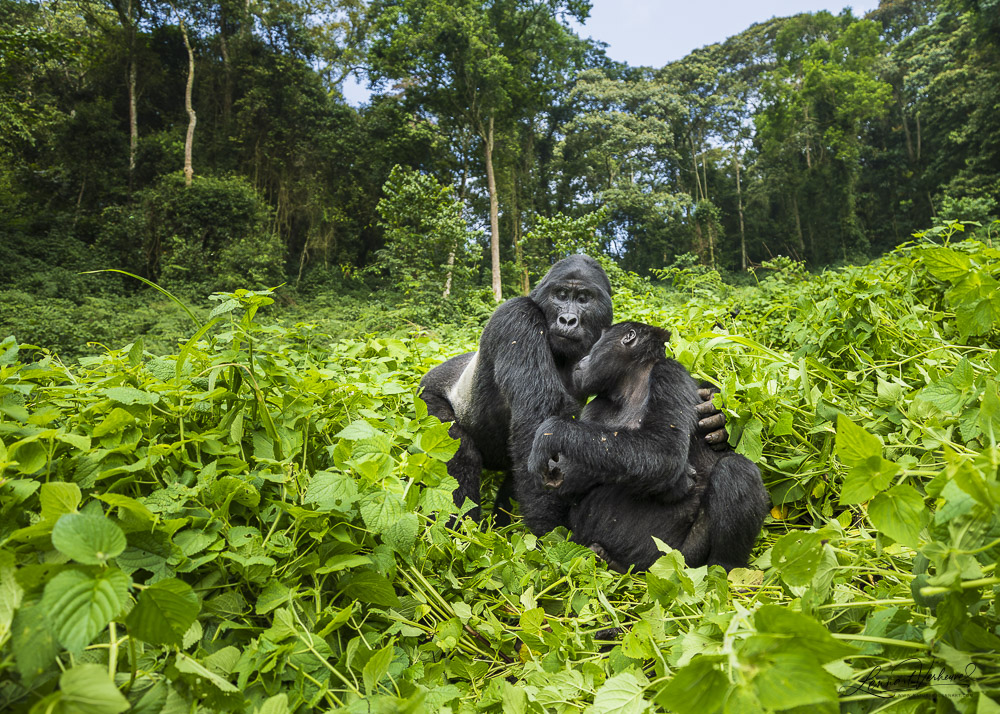
Some of my trips revolve around finding one very specific species. For example, when I traveled to China, my main goal was to see the Giant Panda. We invested two full weeks in the search, and fortunately, that effort paid off! On other trips, the focus isn’t always on a single species but rather on seeing as many birds or mammals as possible. In Uganda, it was clear from the very beginning that the main goal of our group was to see as many bird species as we could.
So when people asked me what I hoped to see in Uganda, my answer was always: “as many birds and mammals as possible.” But I always added a caveat: “At the very least, I want to see gorillas and chimpanzees.” For many visitors, those two species are the ultimate highlight of a trip to Uganda. It’s one of the few countries where you can visit habituated families of both mountain gorillas and chimpanzees. And for me, the gorillas were the single most important reason for coming—despite the fact that it was almost guaranteed we’d find them.
Gorillas capture everyone’s imagination. The sheer power and presence of a silverback is almost legendary, yet they are generally remarkably gentle apes. Quite different, for example, from chimpanzees, whose behavior can at times come across as unsettlingly sadistic—if such human terms can even be applied to animals. Gorillas, on the other hand, usually mind their own business. A silverback knows he has little to fear, except perhaps from another silverback.
But despite their strength, agility, and intelligence, mountain gorillas are still threatened. Infectious diseases pose a risk, and of course, there is the ever-present danger of habitat loss. In Uganda, the government has long made the choice to allow limited tourist visits to habituated families of gorillas—at a steep price. This way, the pressure of ecotourism is kept in check, while the revenue helps protect their habitat.
A single hour with the gorillas now costs about $800 USD. Certainly not cheap, but almost no one returns disappointed. We too had paid for the privilege, planning to have our gorilla experience in the Buhoma sector of Bwindi Impenetrable National Park. But, as it turned out, we got an unexpected preview…
Before reaching Buhoma, we had spent time in the Ruhija sector of the same park. This area also has habituated gorilla groups, but our main focus there was on birds—especially the Grauer’s Broadbill, a truly special species.
Broadbills are a group of songbirds mostly found in Asia, where I had seen several on earlier trips. They are stunning birds, with wide bills and a dazzling variety of colors. Africa also has broadbills, though in a separate family. What makes Grauer’s Broadbill so remarkable is that it doesn’t belong to the African family at all—it’s the only African species placed in a family otherwise entirely Asian, and even forms its own genus. To make it even more extraordinary: this bird has only ever been recorded in two places on Earth—Ruhija in Bwindi, and a specific site in the Democratic Republic of Congo.
For most birders, that means only a few square kilometres in Ruhija provide a real chance to see it. Definitely not a species to miss. Luckily for us, a nest had been found just before our arrival, which made spotting the bird much easier. We were treated to excellent views.
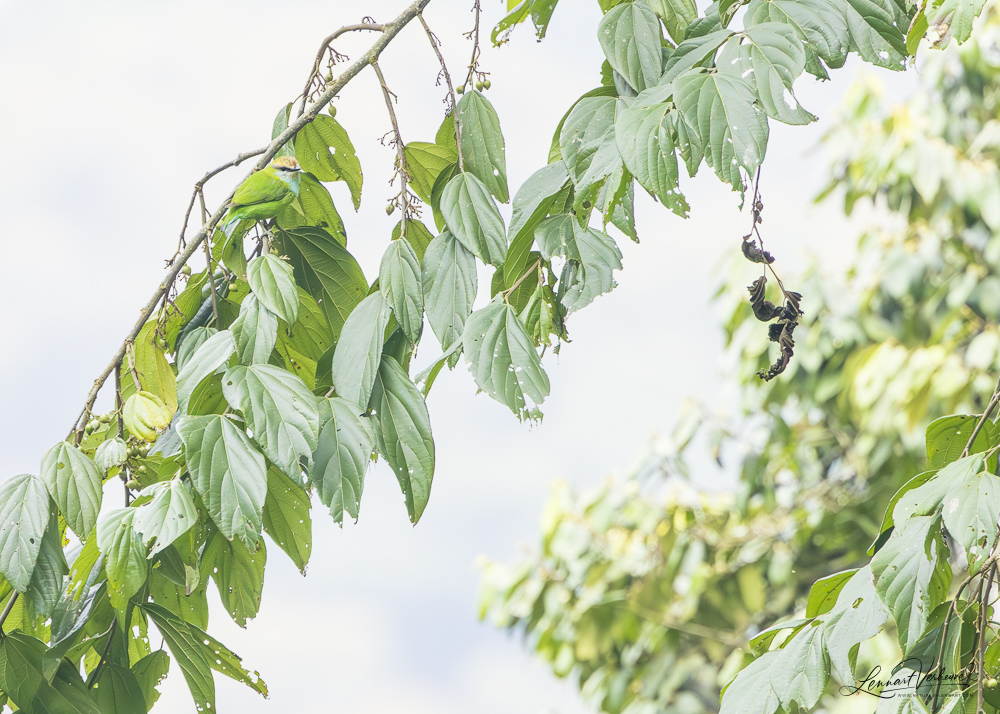

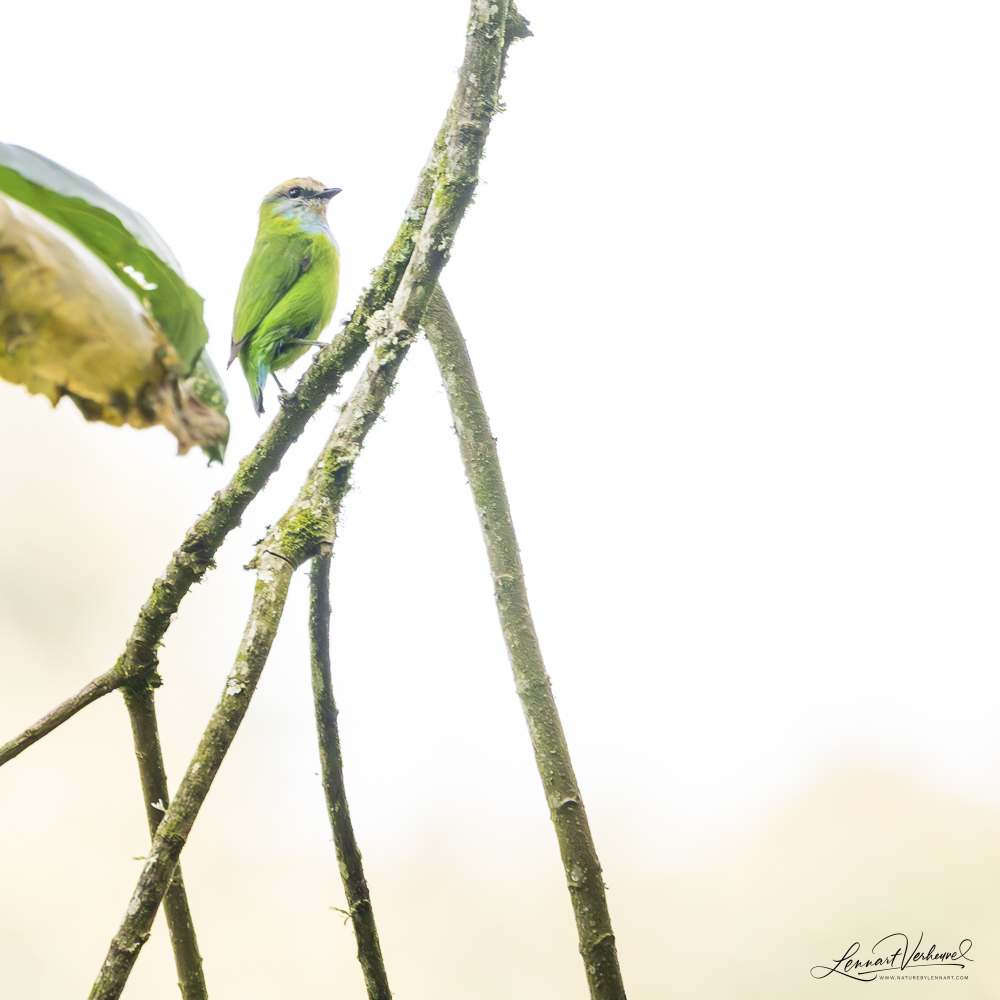
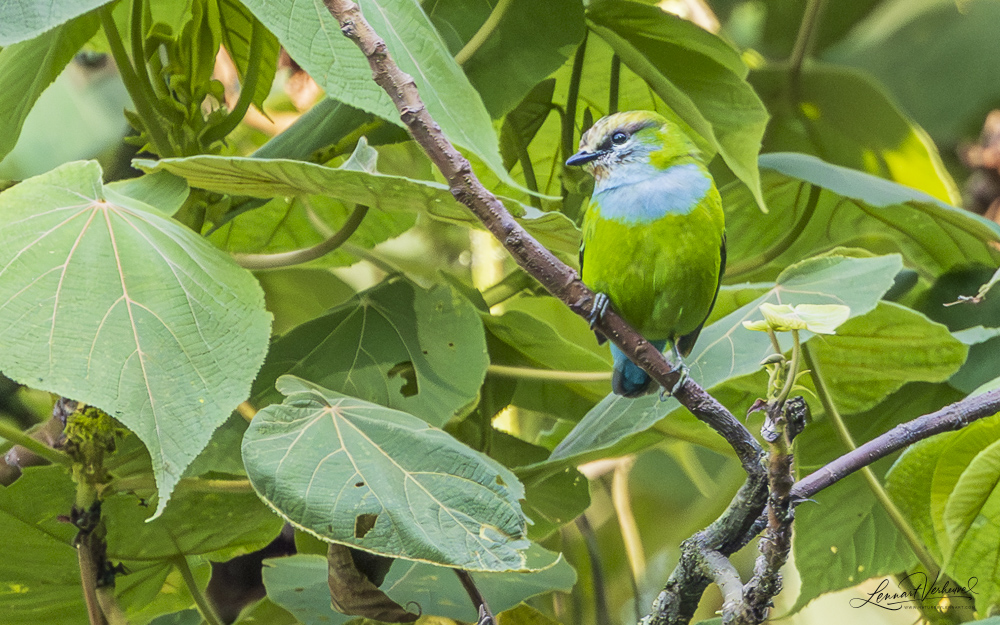
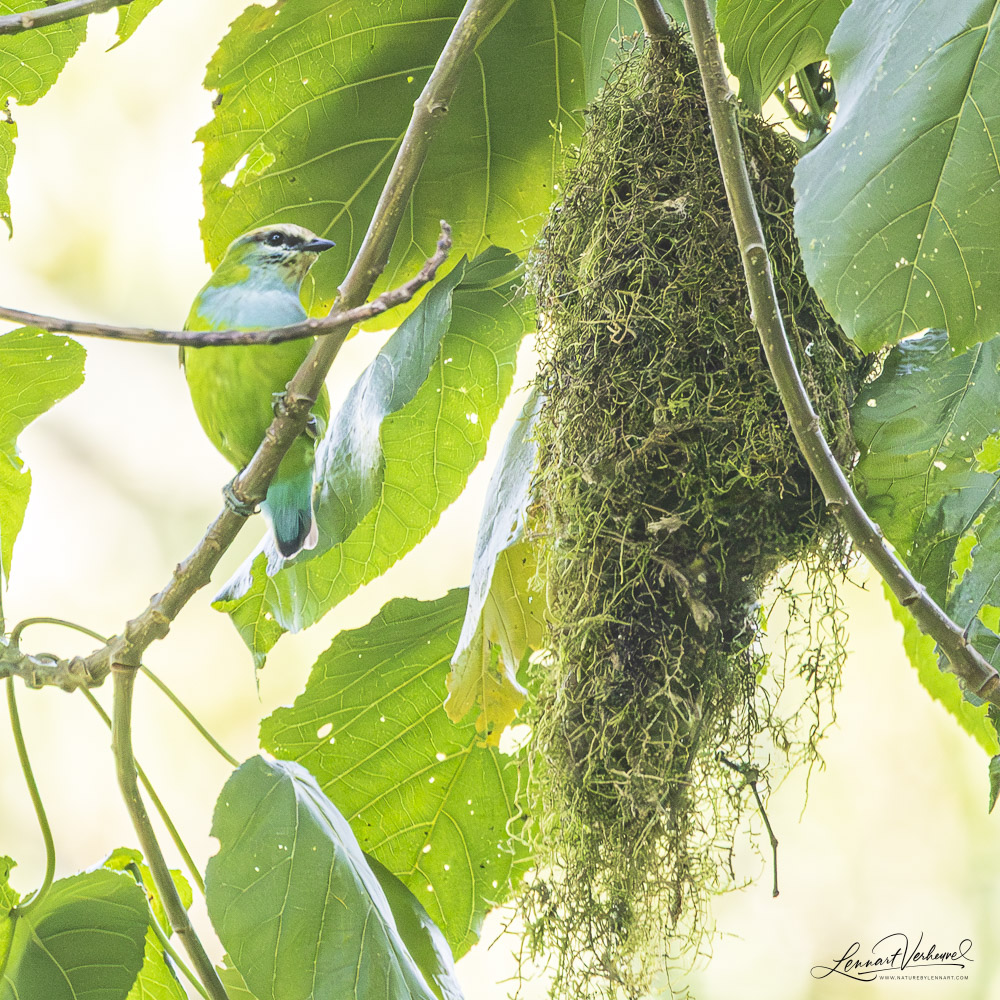
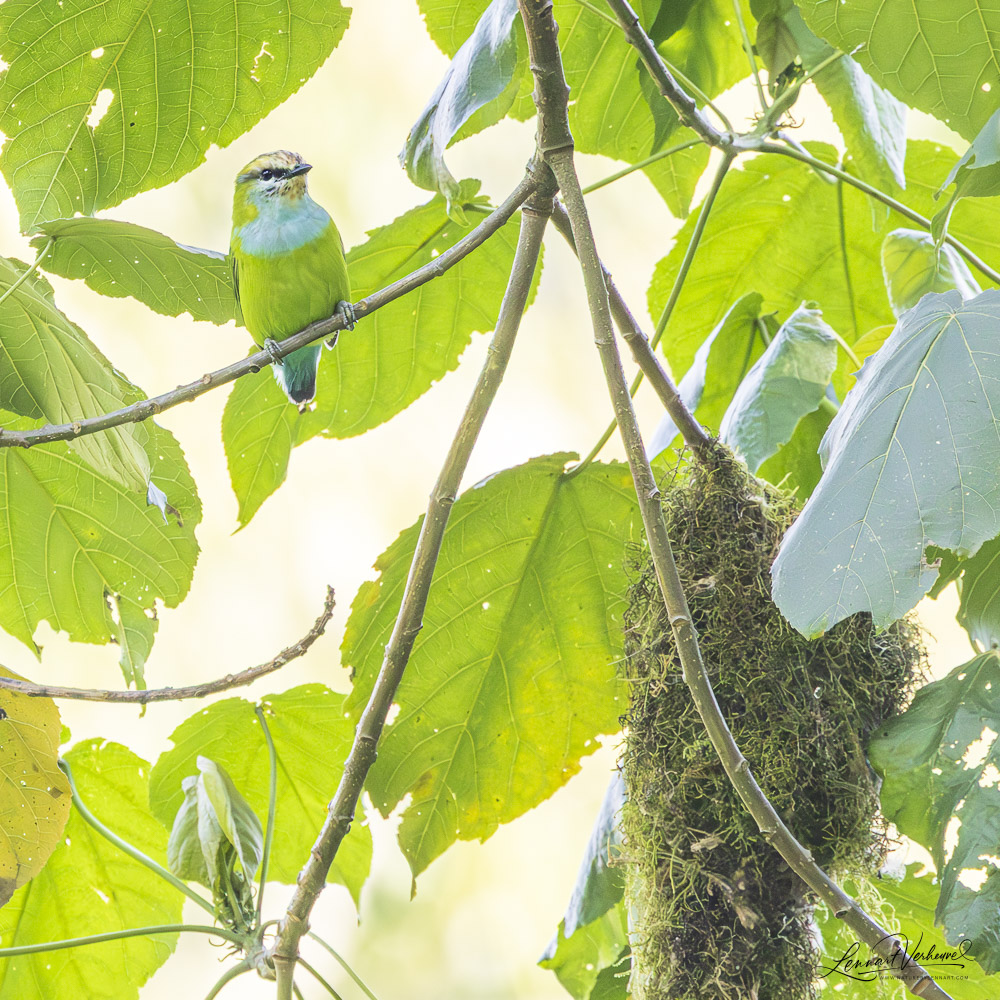
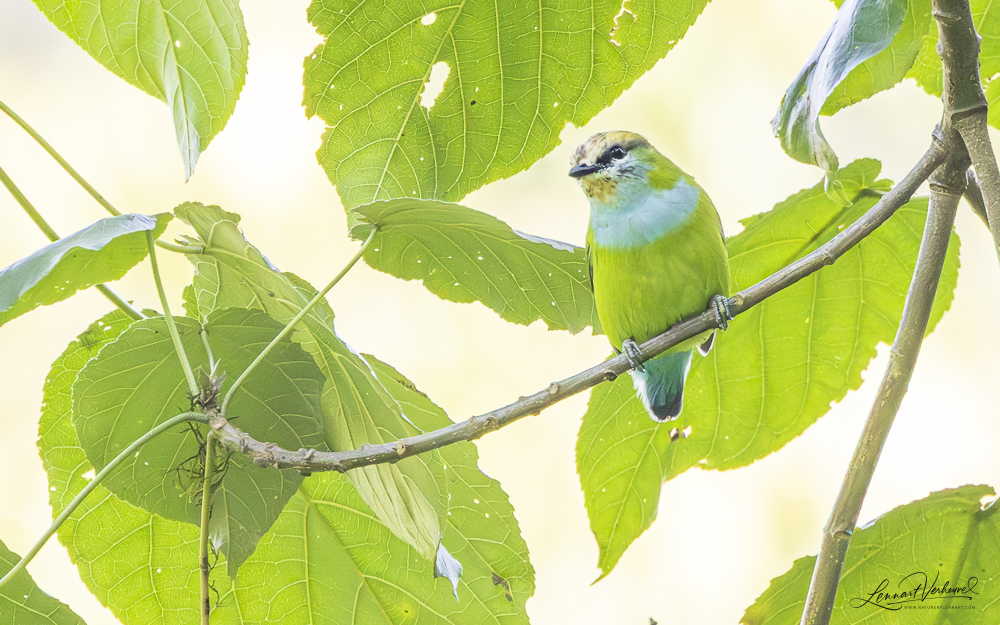
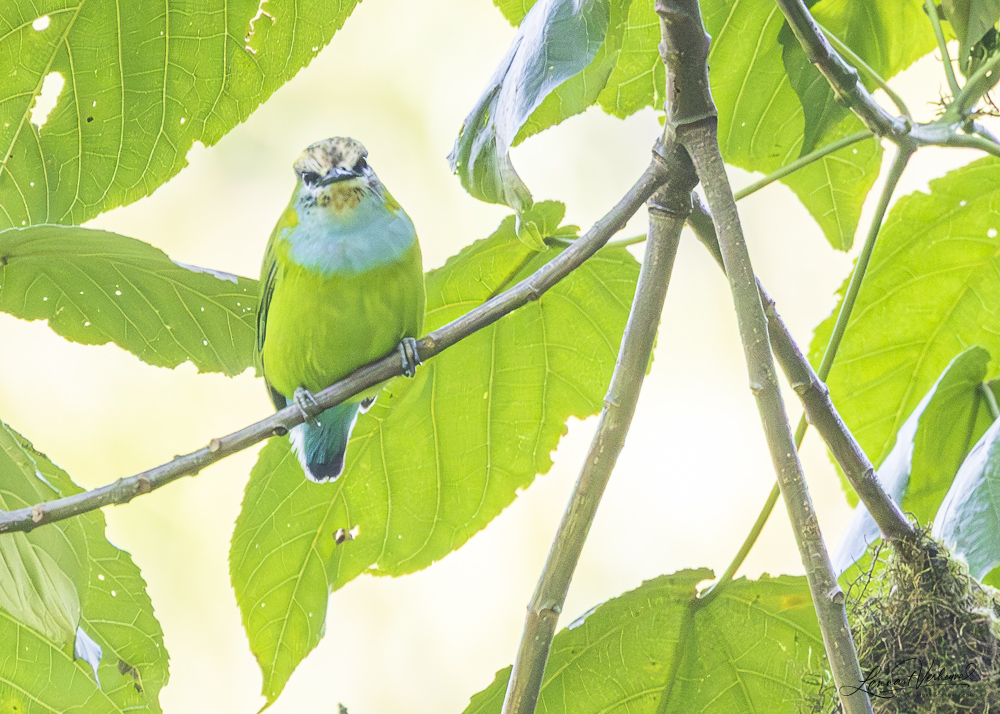
Grauer’s Broadbill
But Ruhija also held another surprise: the opportunity to see mountain gorillas! We were given the unexpected chance to visit a habituated group there, and of course I couldn’t pass that up. Suddenly, I found myself face-to-face with my very first silverback!

Mountain Gorilla
Well—face-to-face might be overstating it. He didn’t bother to give me a second glance. It was remarkable how accustomed these gorillas are to humans, ignoring us completely.
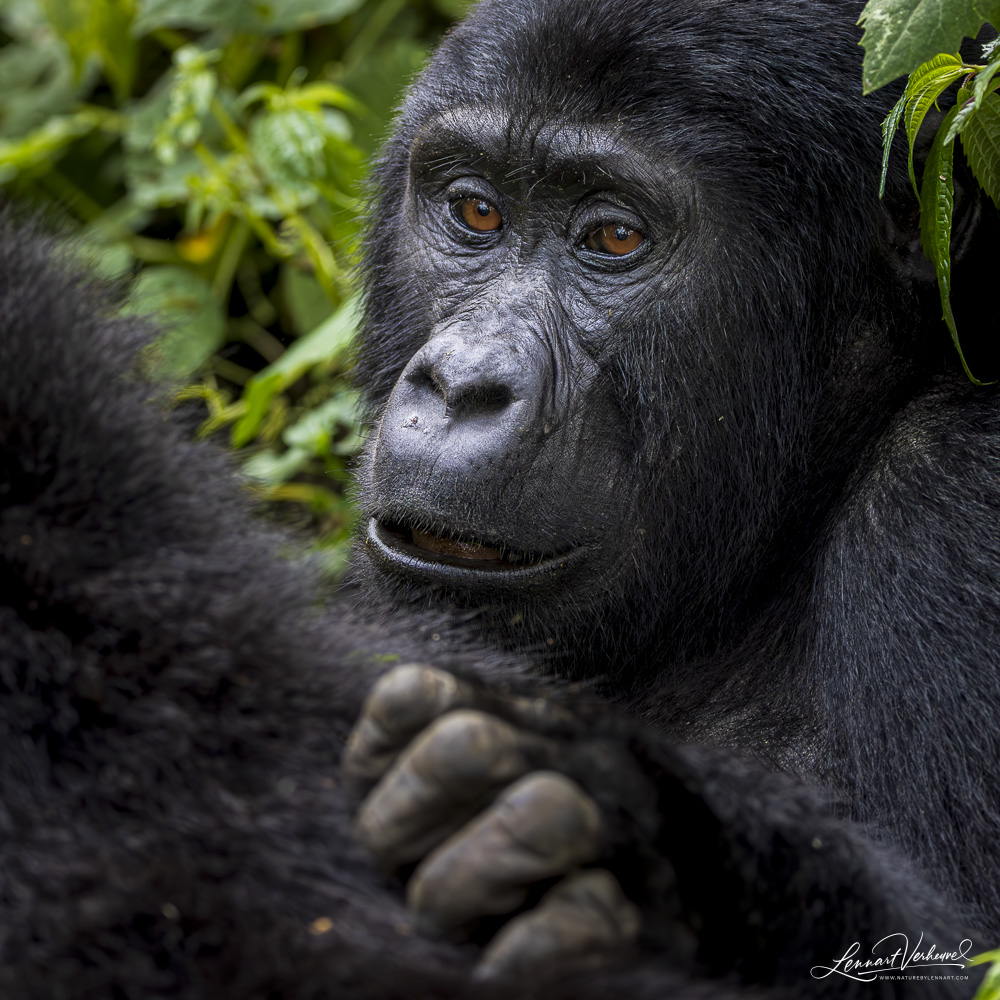
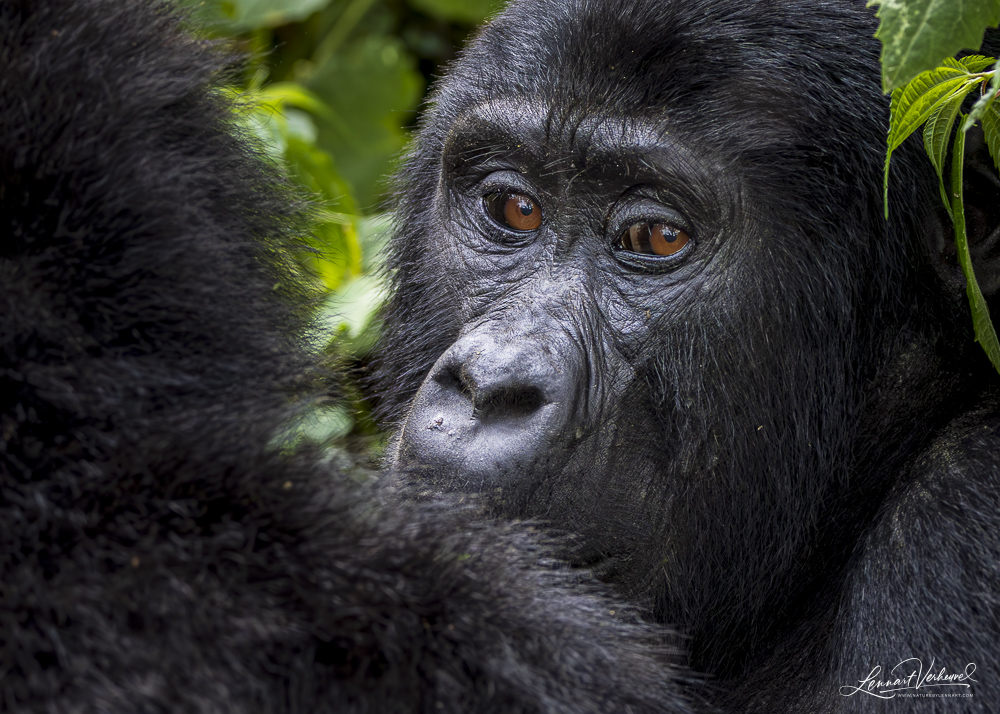
Mountain Gorilla
Amusingly, when I tried to take a selfie, one female gorilla couldn’t resist sneaking a look at what I was doing.
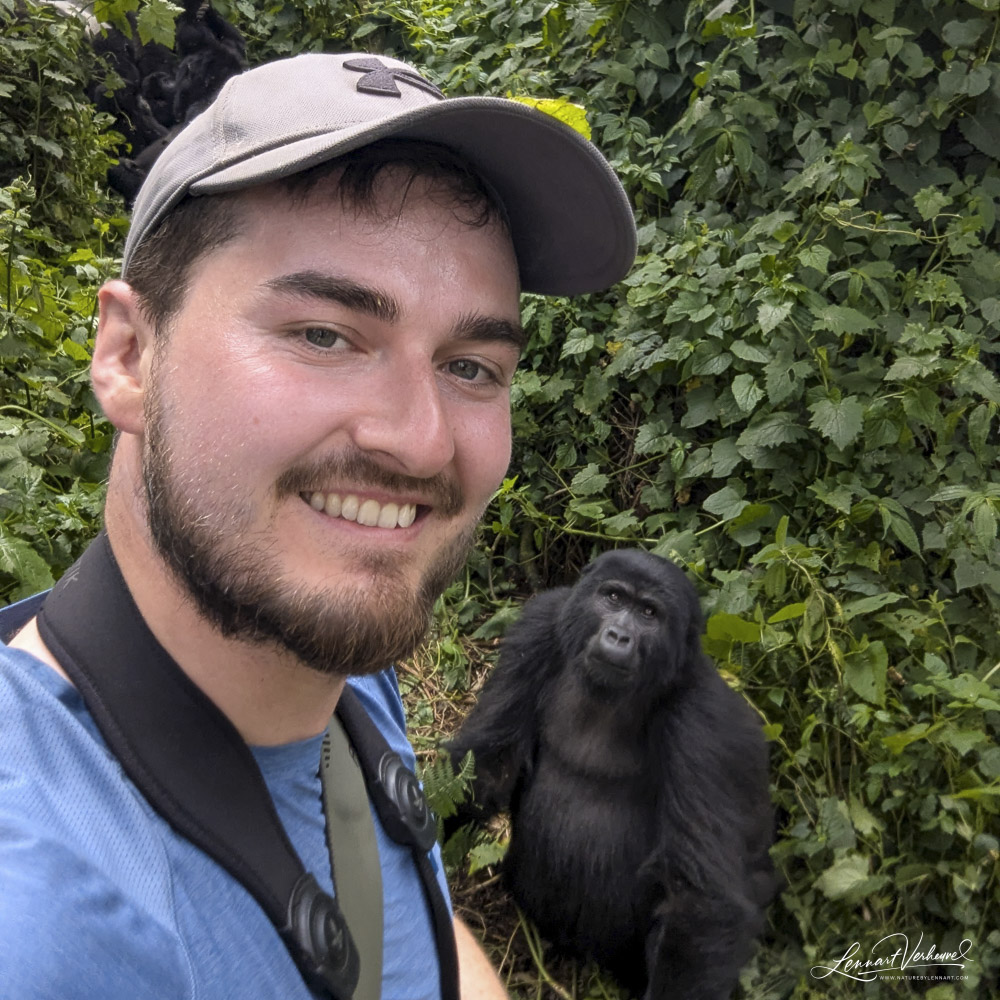
Me with a Mountain Gorilla
For me, the real highlight of this group was the youngsters. Two playful babies kept everyone entertained, wrestling with each other and pestering the adults. While the grown gorillas lounged around grooming each other, the youngsters brought energy and life to the clearing. Unsurprisingly, most of my photos ended up being of them.
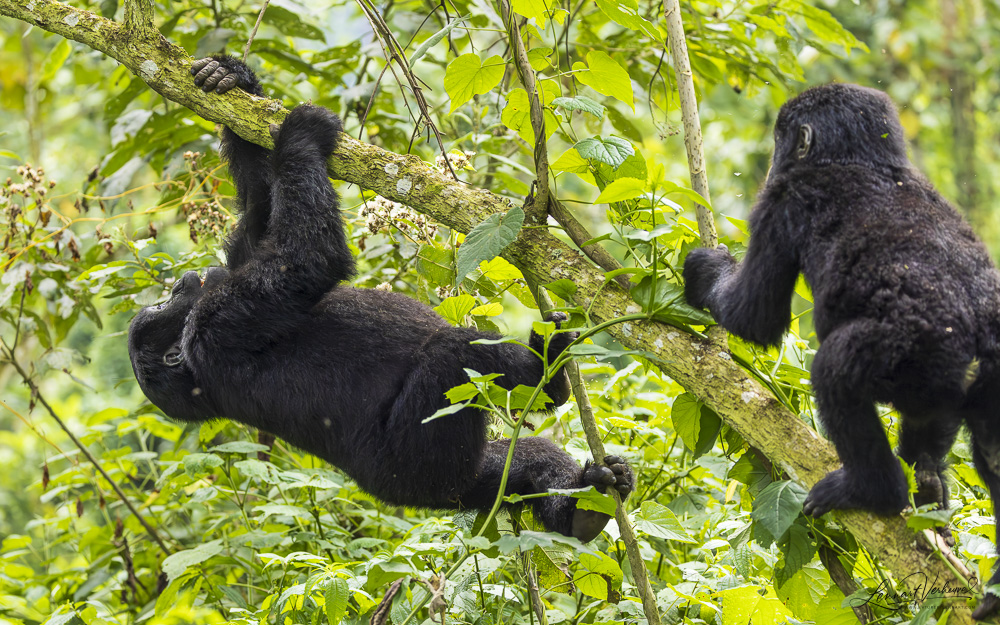
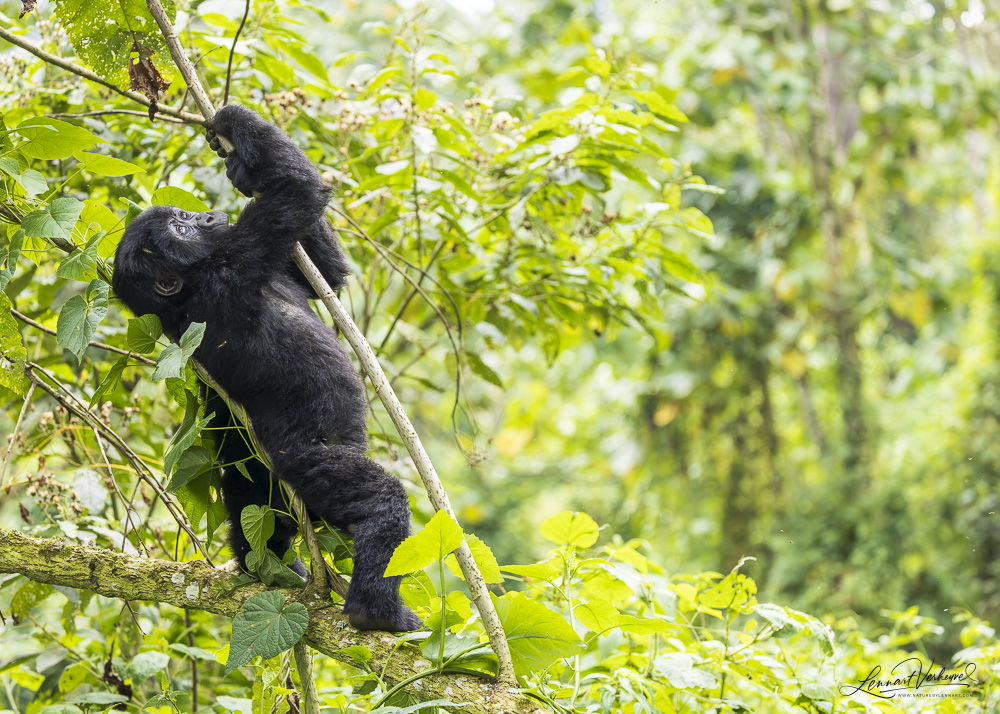
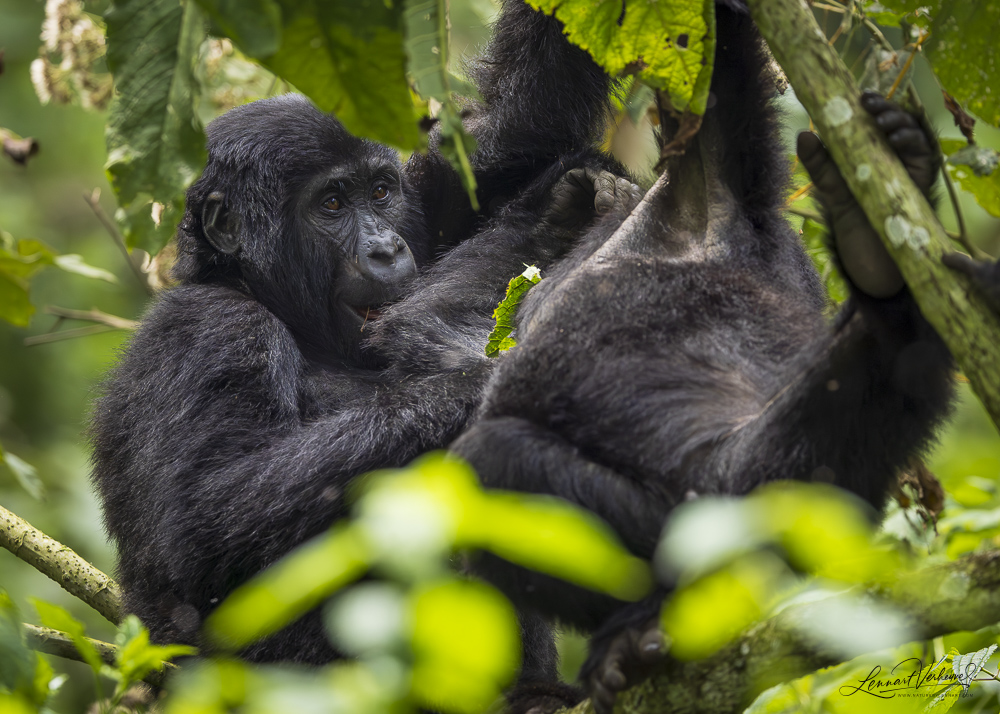
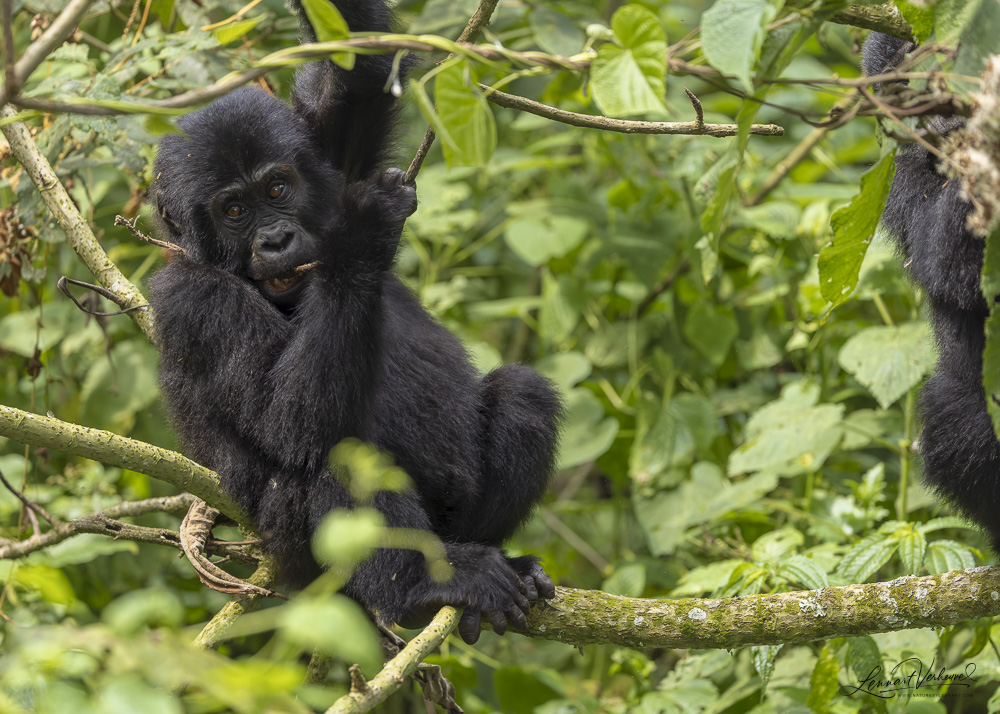
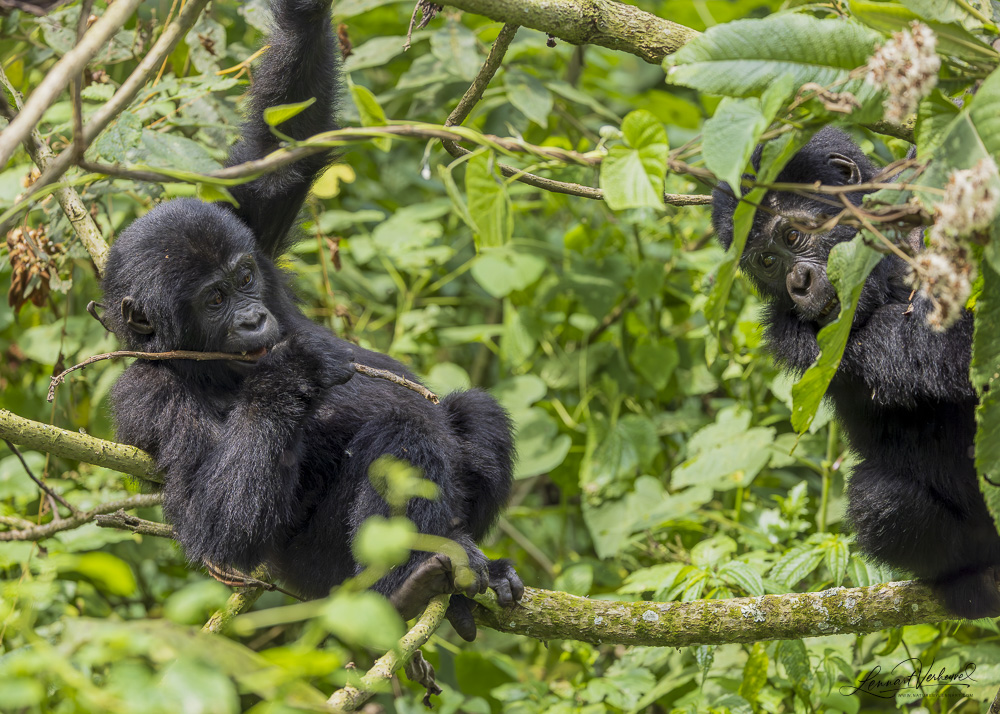
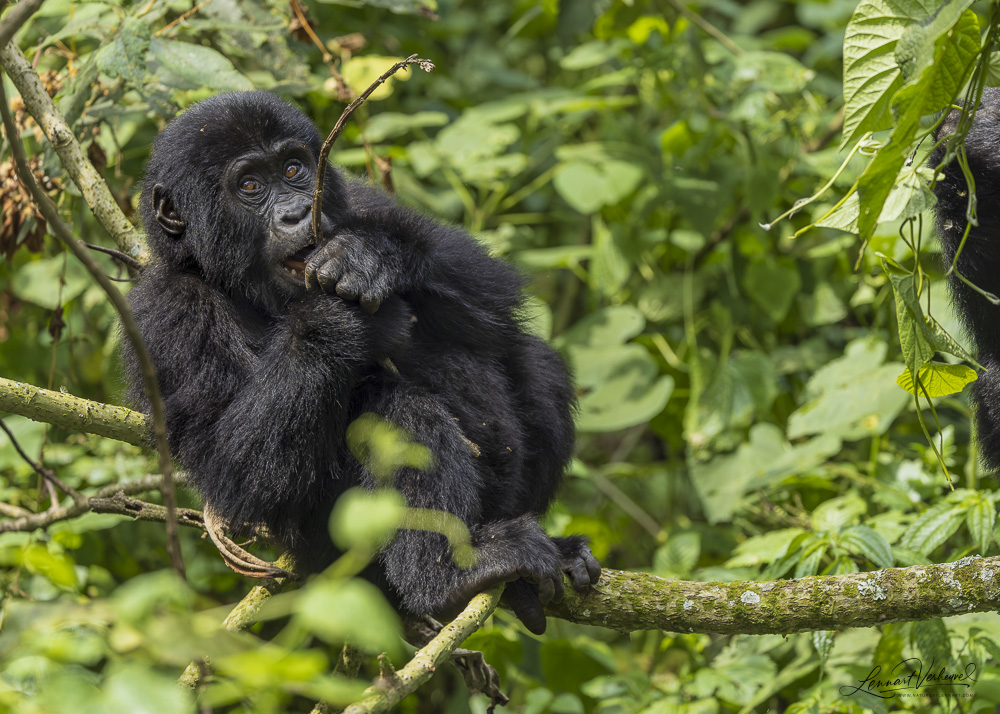
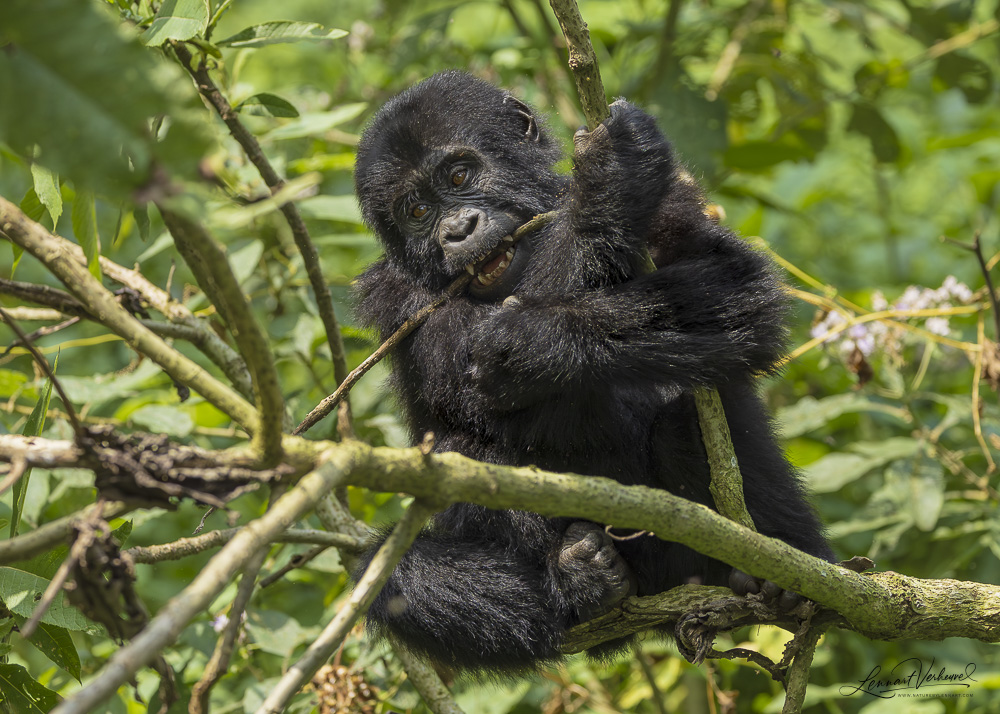
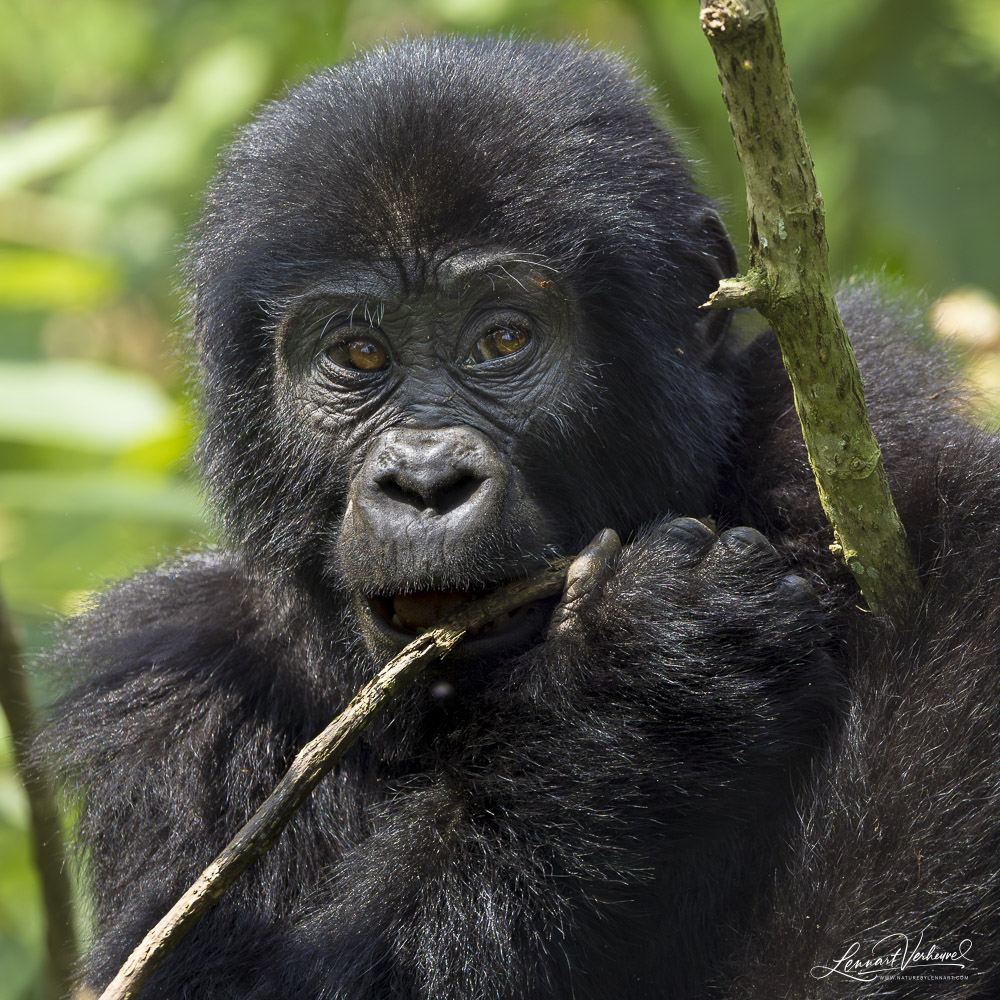
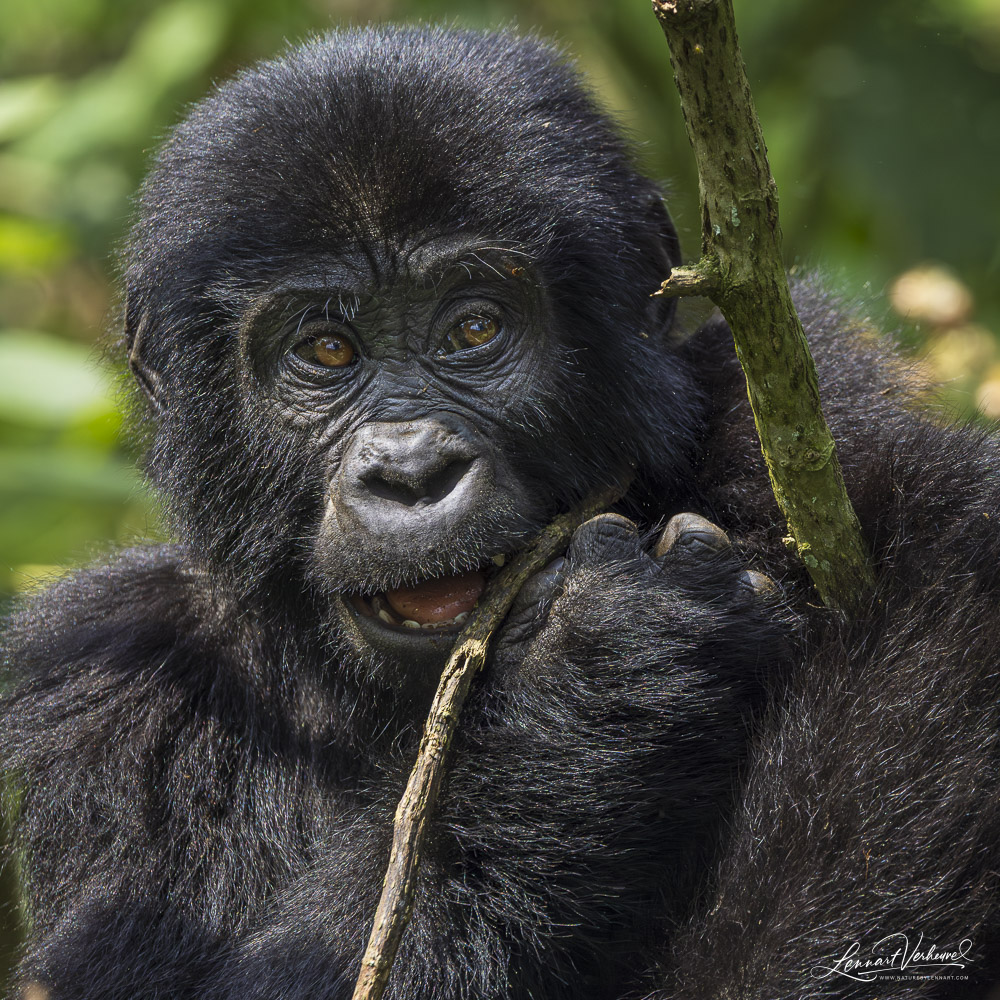
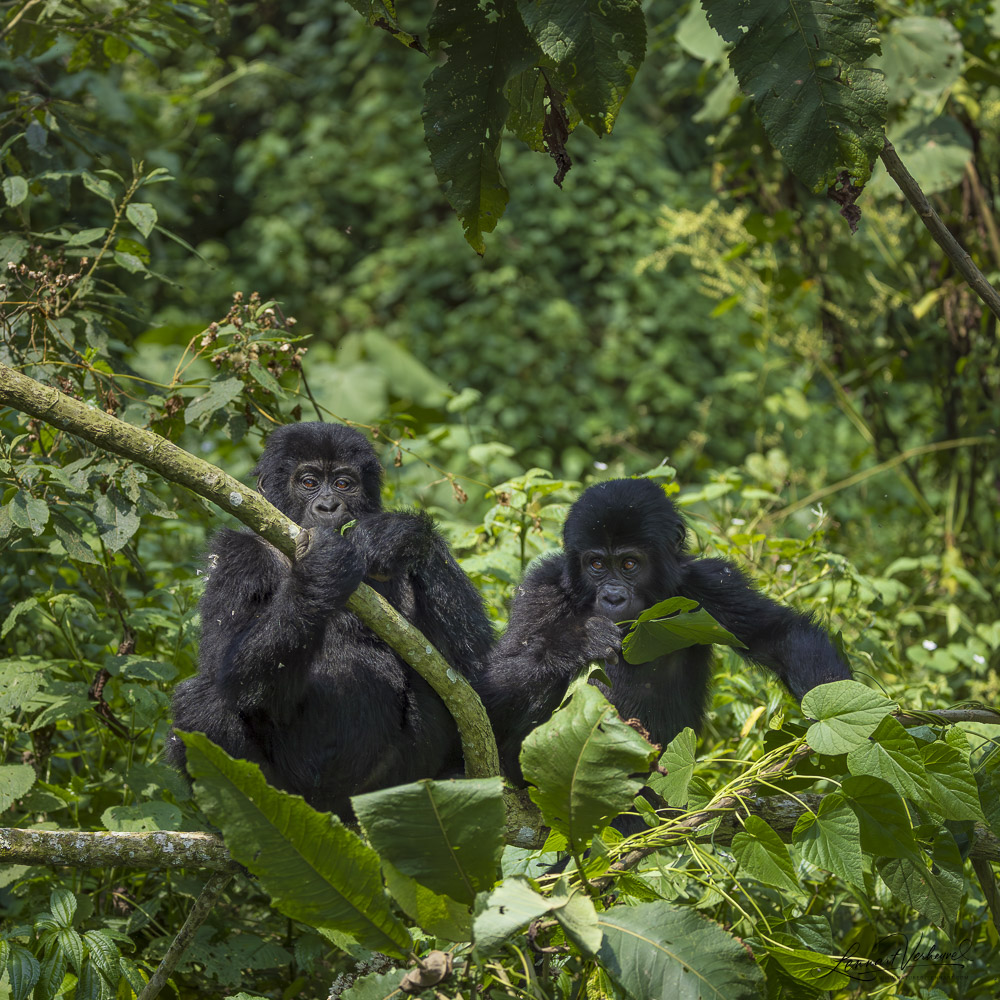
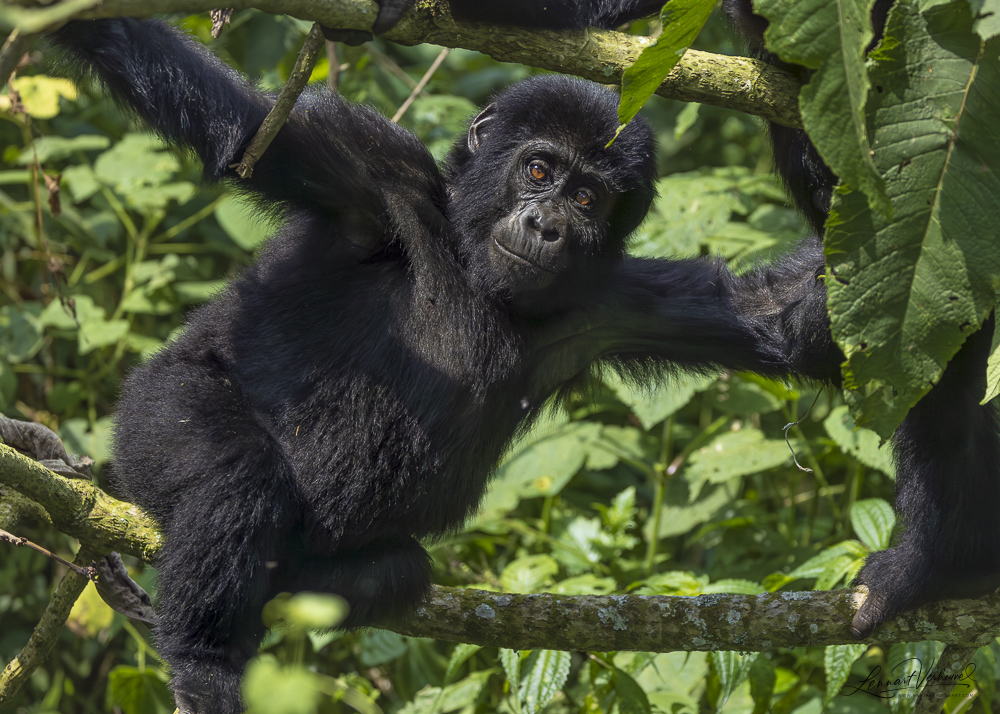
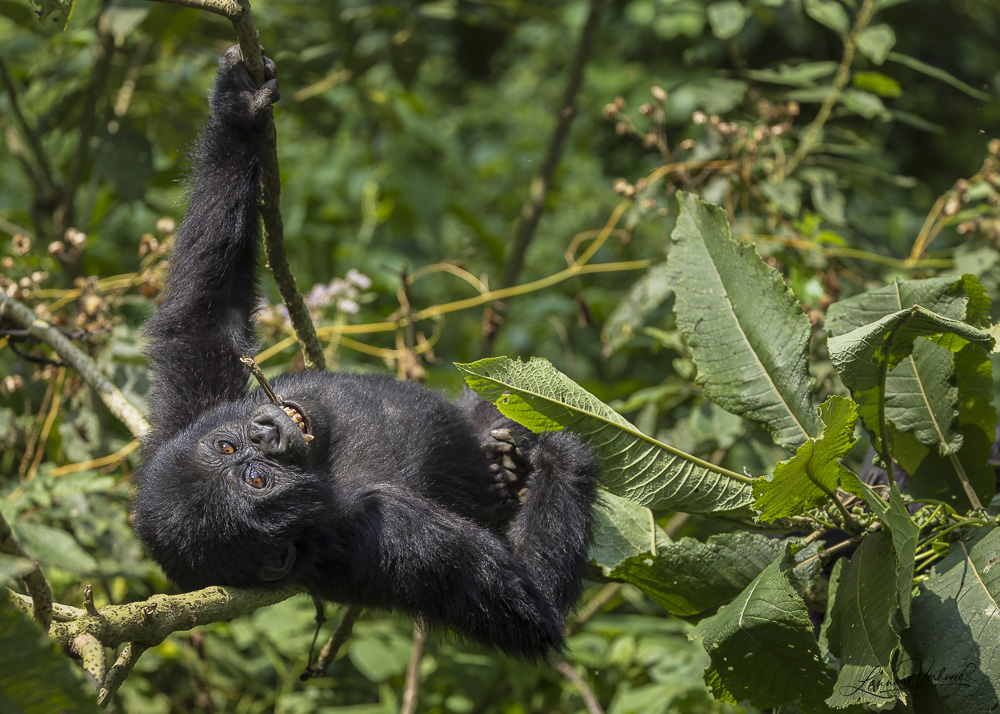
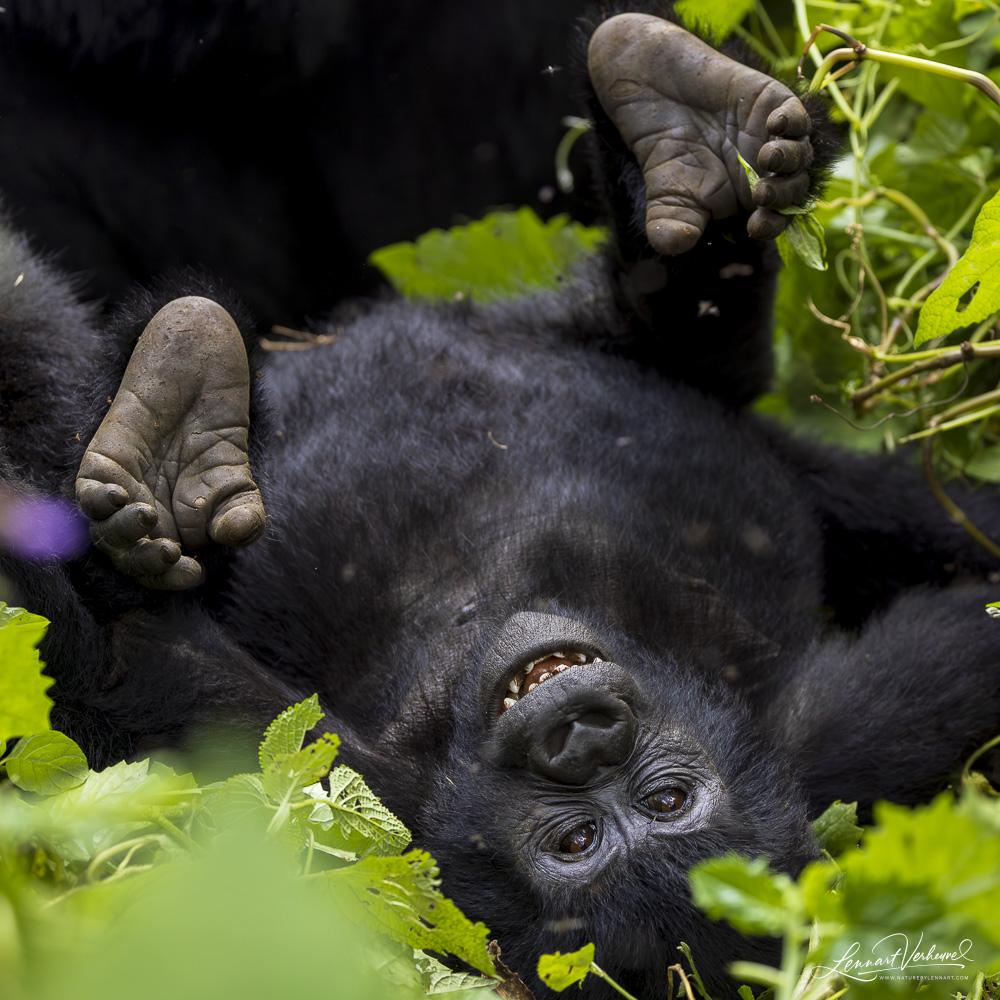
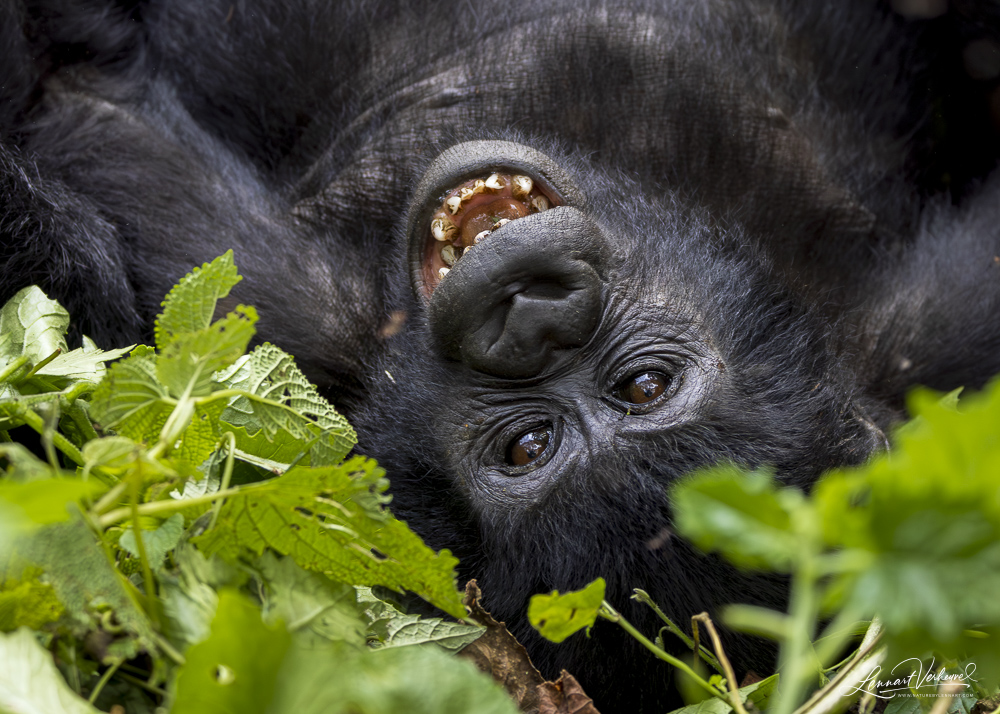
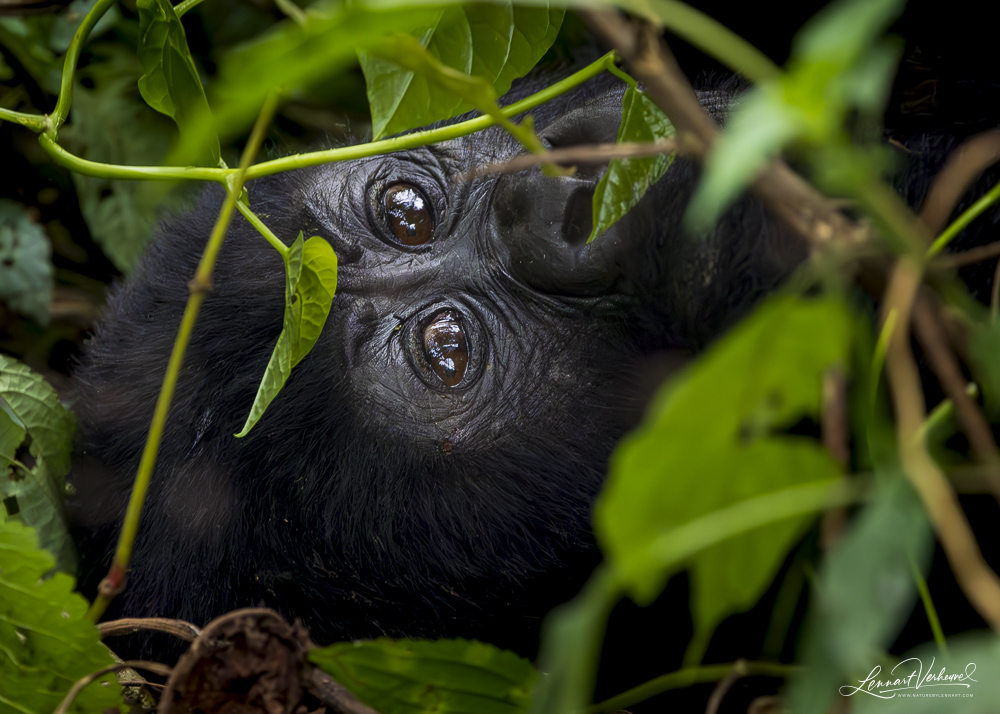
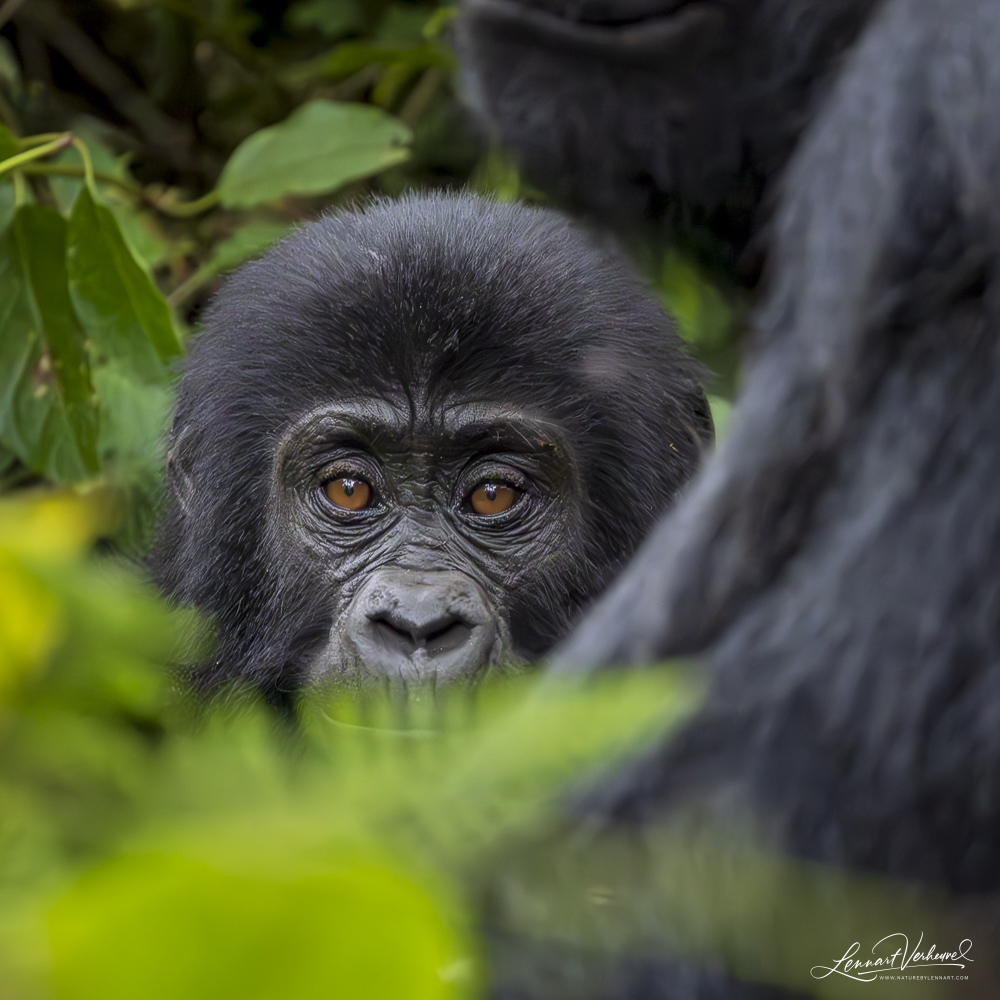
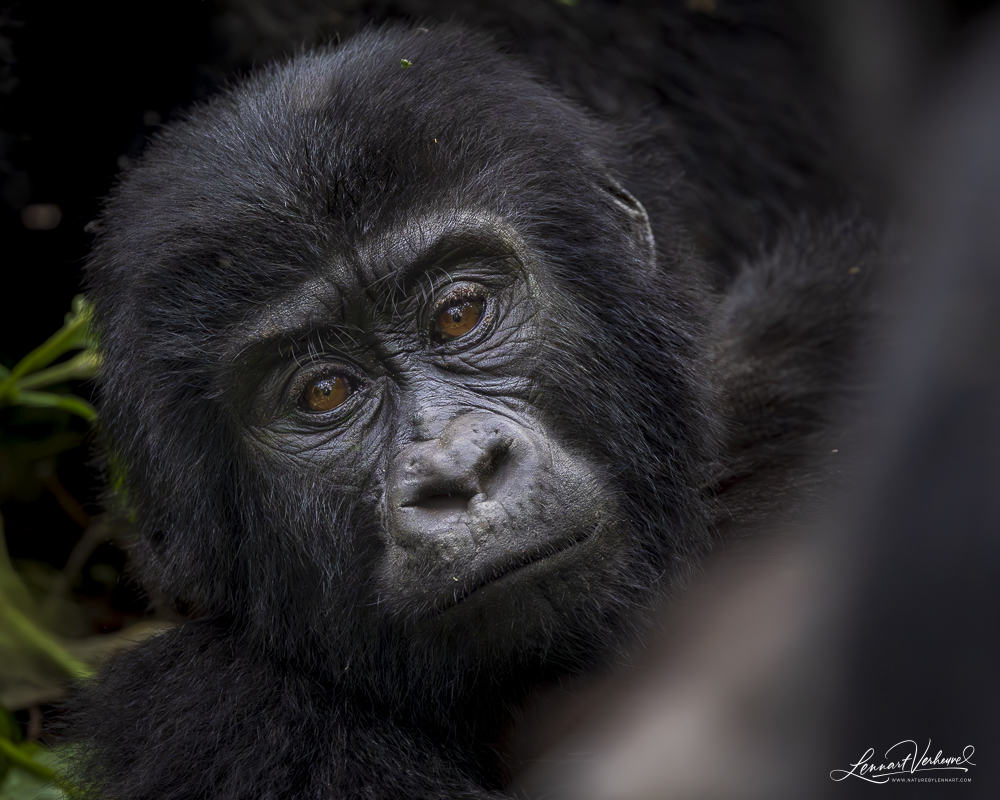
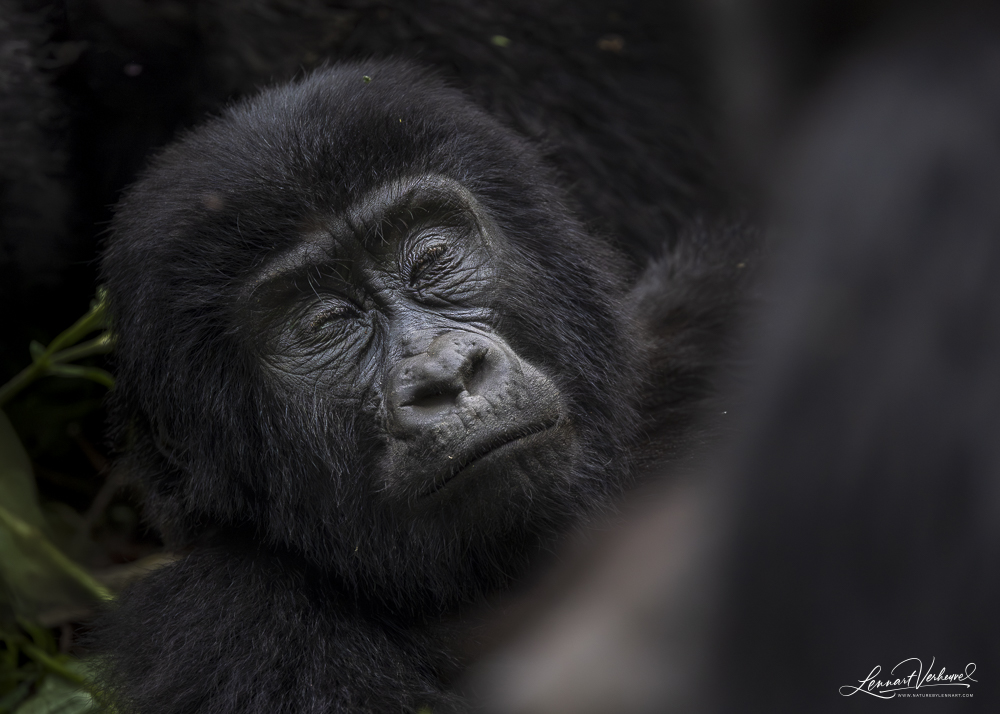
Mountain Gorilla
This first encounter was unforgettable—but it also left me wanting more. Luckily, just a few days later, it was time for our long-planned gorilla trek in Buhoma.
The treks are well-organized, beginning with a briefing at the visitor center. Before that, there’s a traditional dance performance, but we skipped the half-hour show to spend a little more time birding. That decision paid off: we saw a beautiful Red-capped Robin-Chat (the only one of the trip).
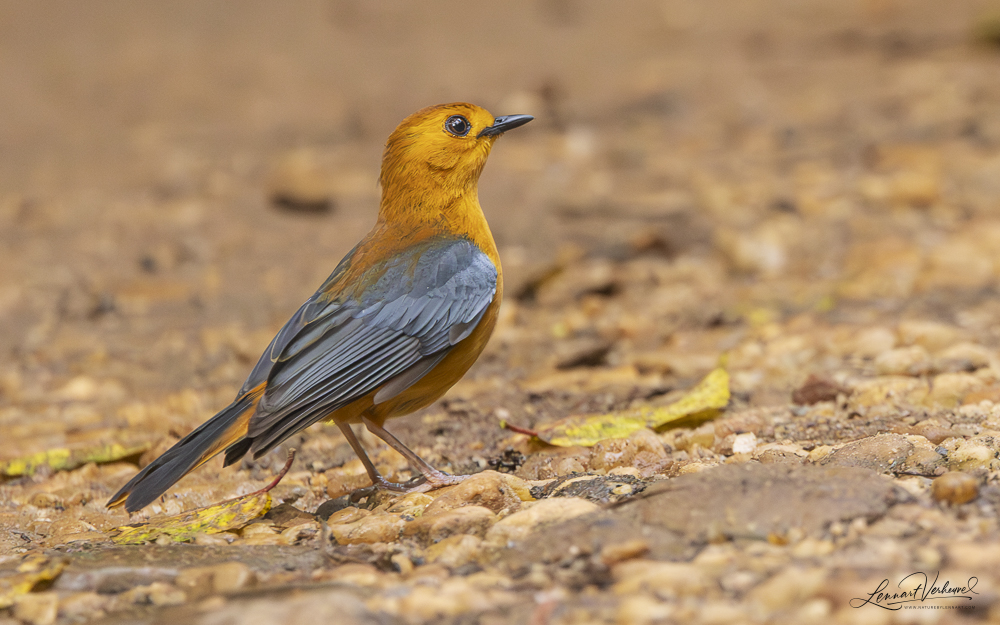

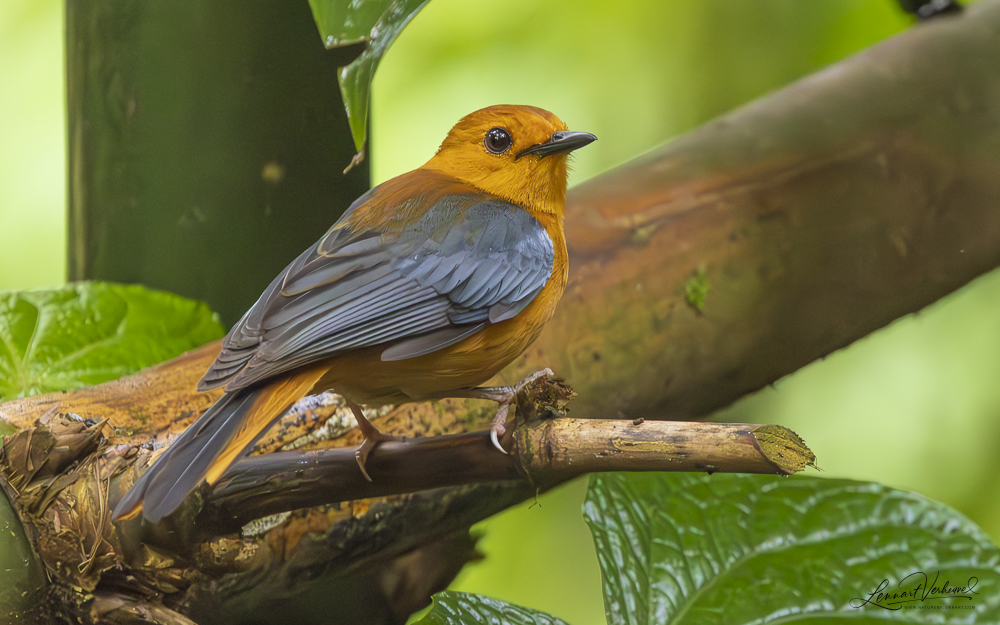
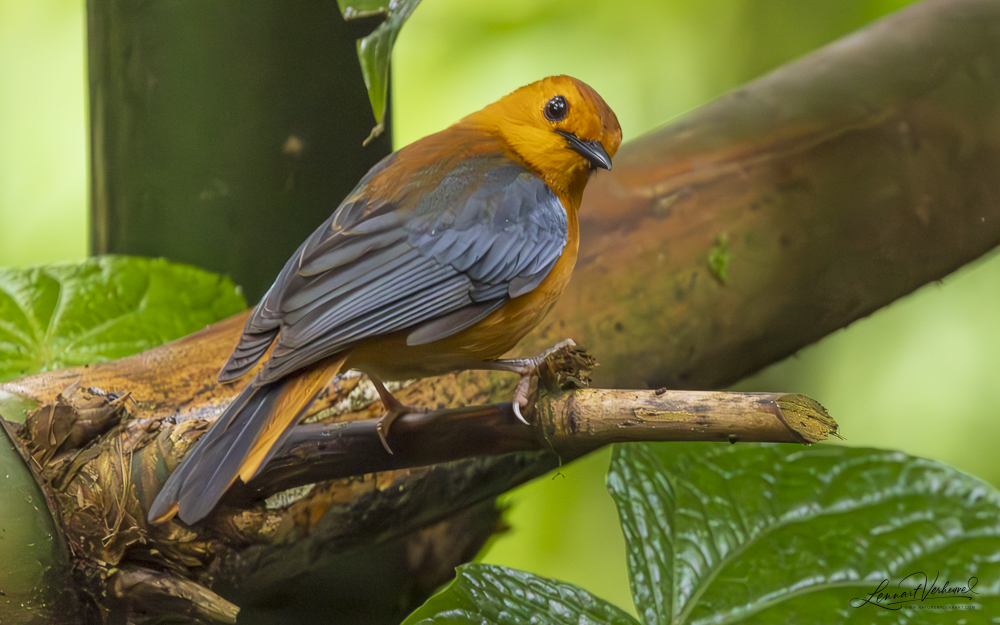
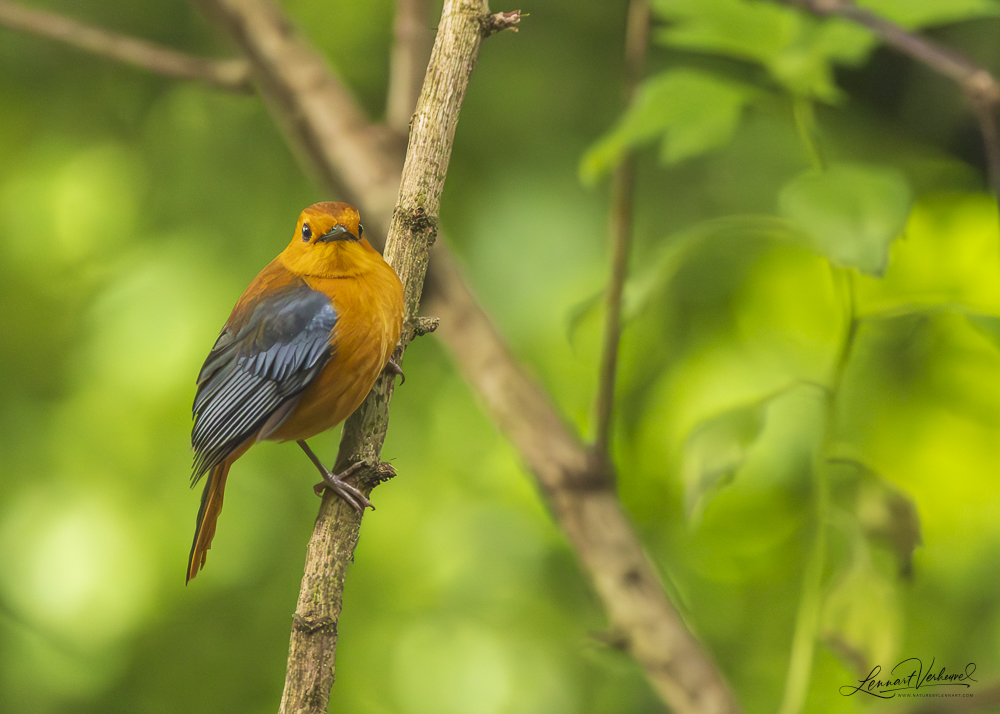
Red-capped Robin-Chat
And also we had great views of Black-fronted Duiker.
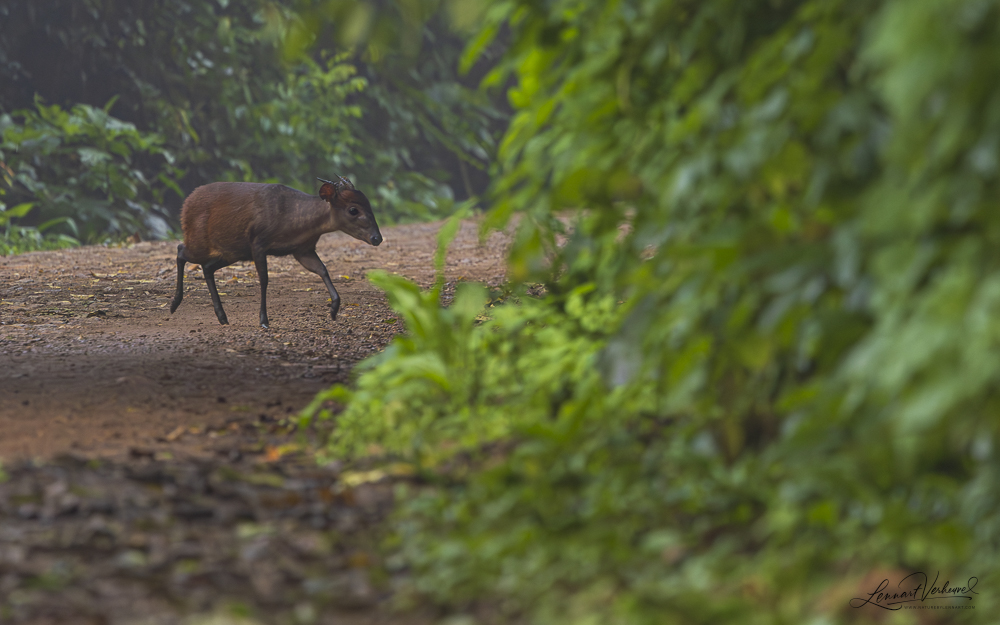
Black-fronted Duiker
The morning was off to a perfect start. At the briefing, we learned which family we’d be visiting. Ours sounded ideal: a group with a silverback, several females, and a youngster. We set out together with a Scandinavian family, and fortunately that went well.
Sometimes, gorilla treks can take hours before a family is located. Other times, it’s just a short walk. When we got out of the vehicle, I worried we might encounter a group near farmland, as I saw only cultivated fields and small forest patches. I had seen photos of gorillas feeding at the edge of farmland before, and honestly, that felt like it would diminish the experience.
Thankfully, that wasn’t the case. After hiking a while, we climbed a ridge and were rewarded with a sweeping view of untouched rainforest. Our family was nearby, and after half an hour’s descent, we stepped into a large open clearing. Right there, in the middle, sat the gorillas!
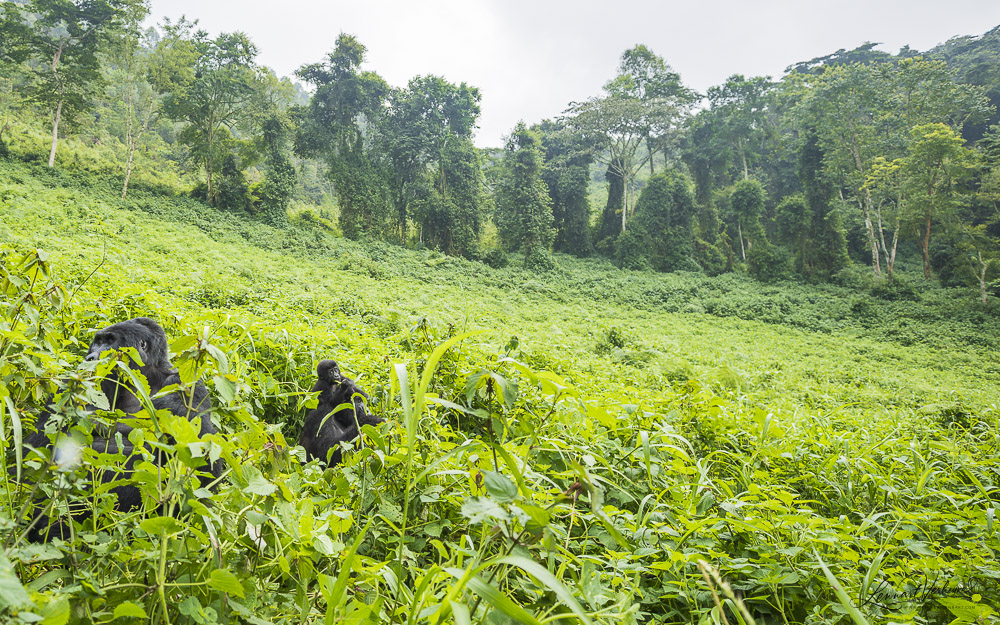
Mountain Gorillas
The conditions were perfect—cloudy skies gave us beautifully even light. We followed our ranger into the clearing and were given a full hour with the group.
I took my new Canon R1 with 16-35mm lens out of my bag. I had prepared carefully for this moment. My plan was to use two cameras: one with a wide-angle lens and one with a telephoto. That would make it possible to make different kinds of photos depending on the situation.
Unfortunately, my brand-new R1 had suffered an accident a few days earlier when it detached from the lens for unknown reasons and fell, leaving water spots on the sensor. I had to fall back on my trusty R5.
The evening before the trek, I tested the R1 again out of curiosity, with the wide-angle lens, and found that at f/2.8 on this lens, the spots weren’t noticeable. So, in the end, I did have two working cameras—and I was very glad for that.
The gorillas didn’t move quickly, but switching between lenses let me capture different perspectives: a close-up portrait when the silverback glanced my way, a wide-angle shot when he strode past me. The hour went by in a flash, filled with all kinds of beautiful moments.
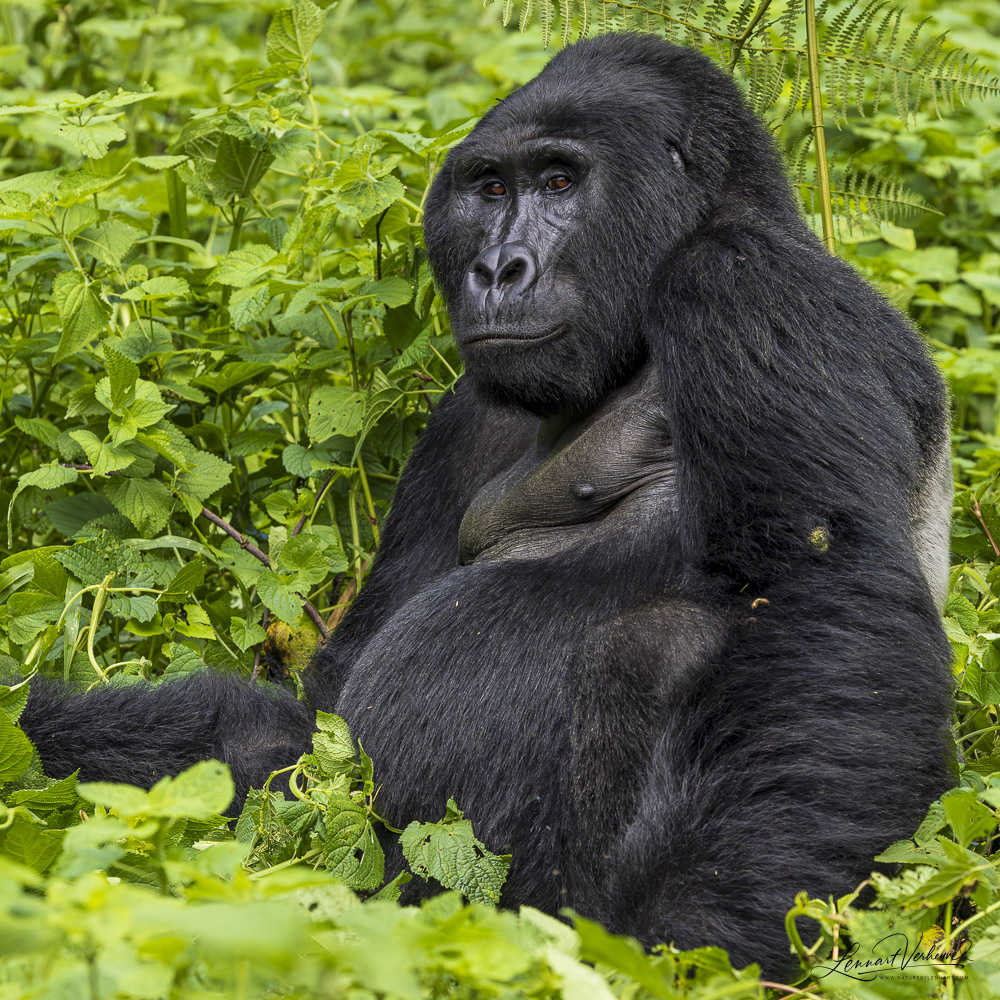
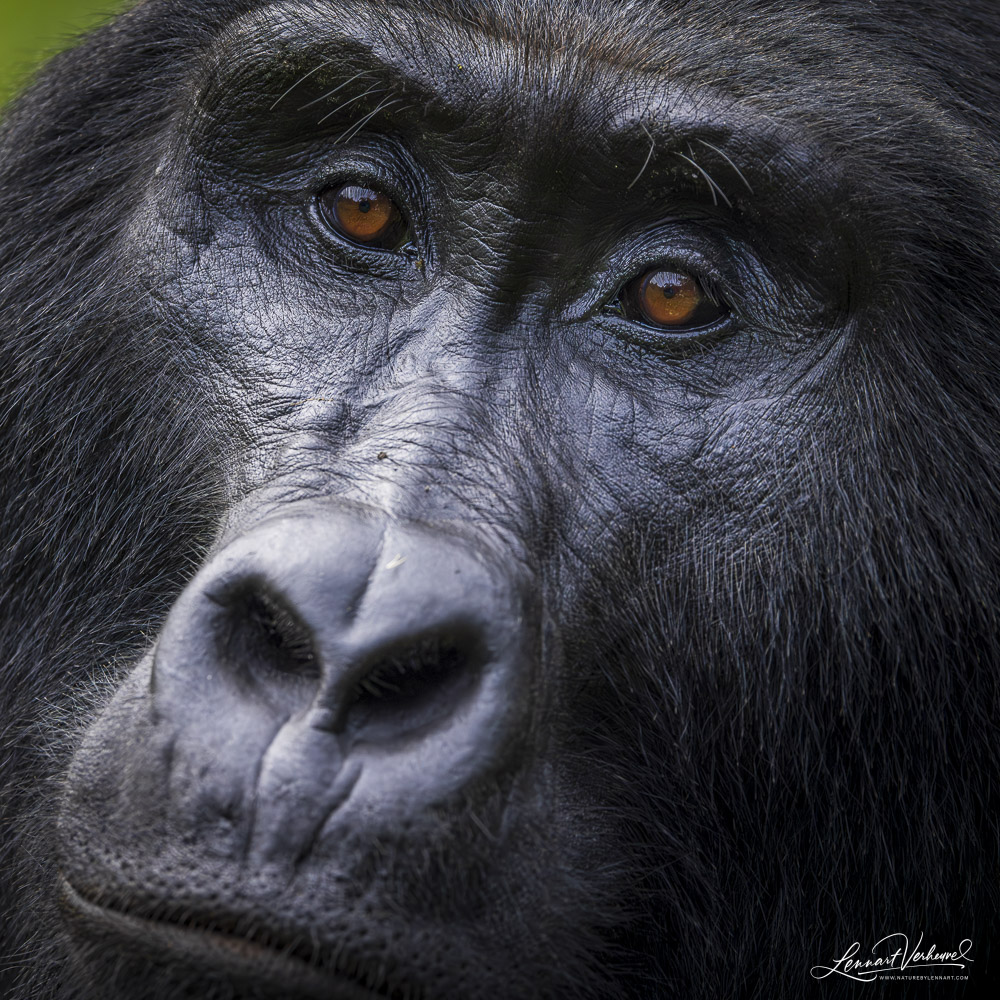
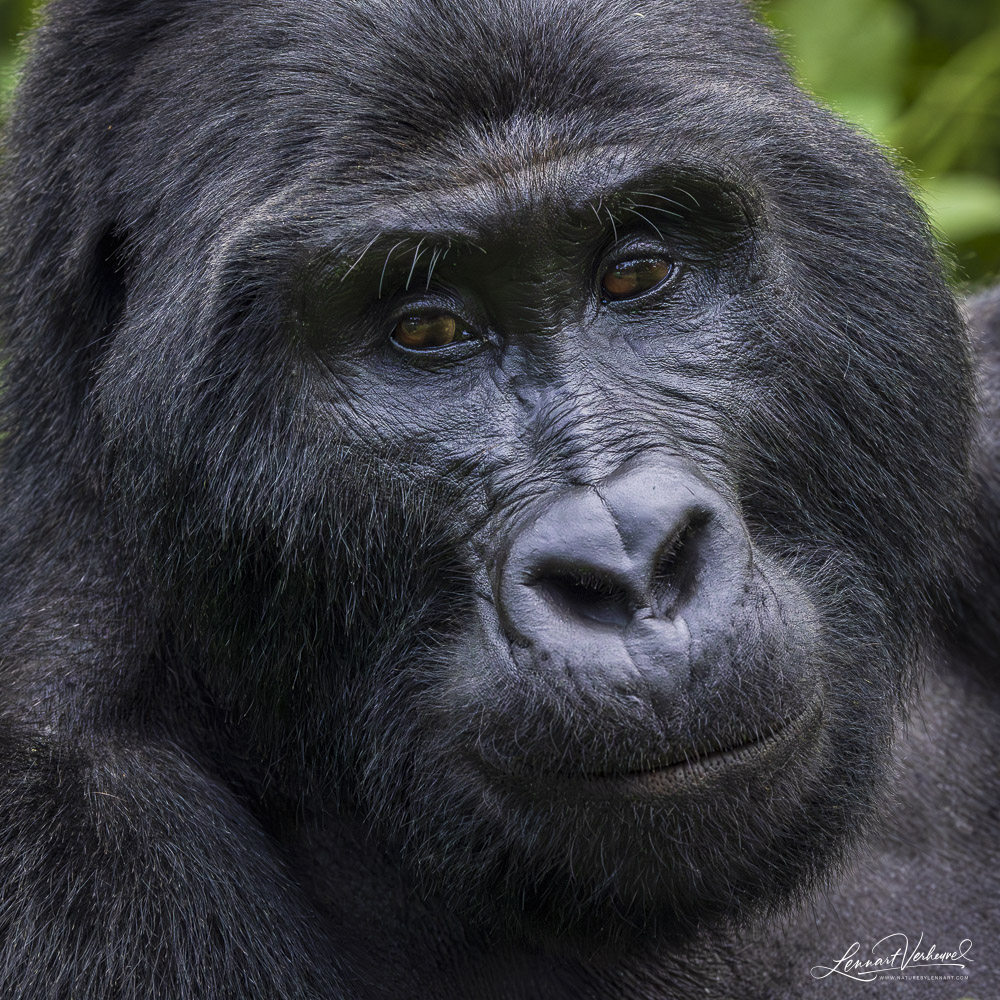
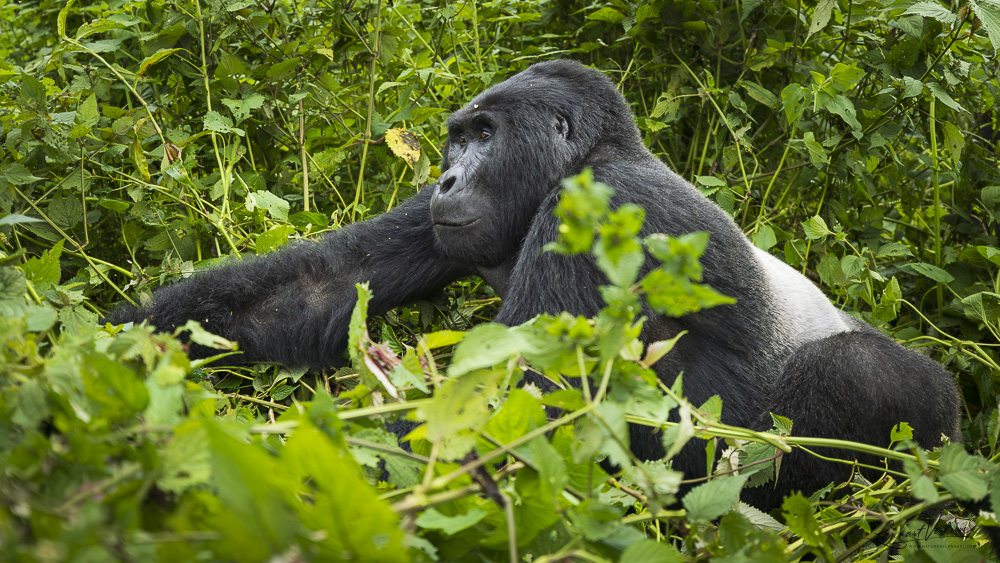
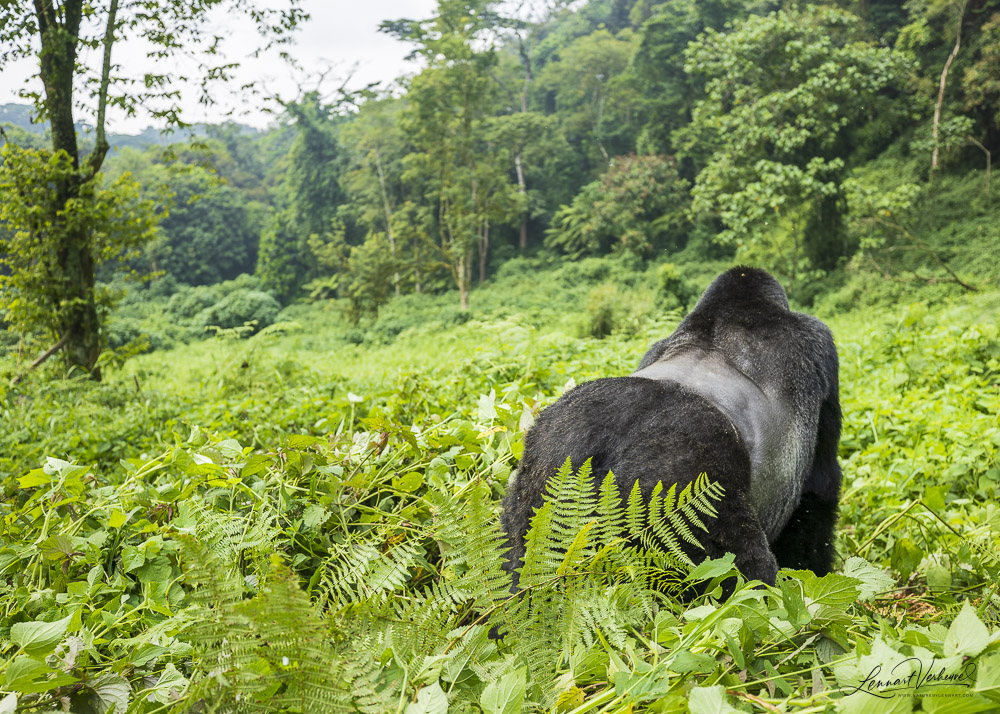
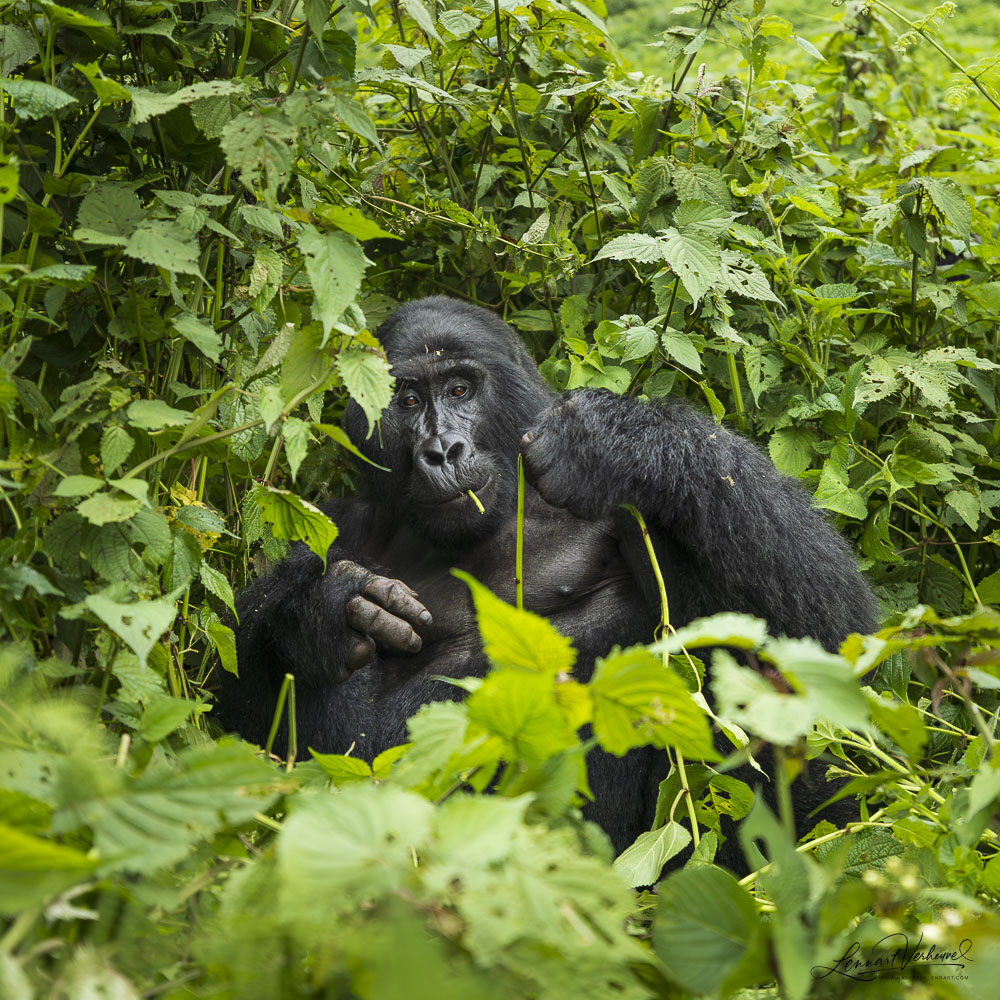
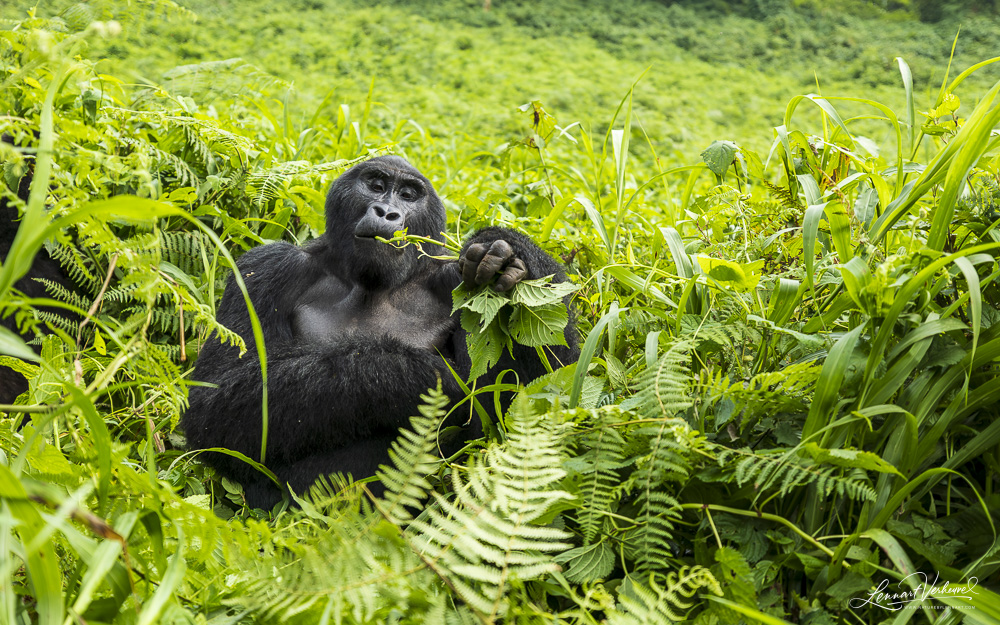
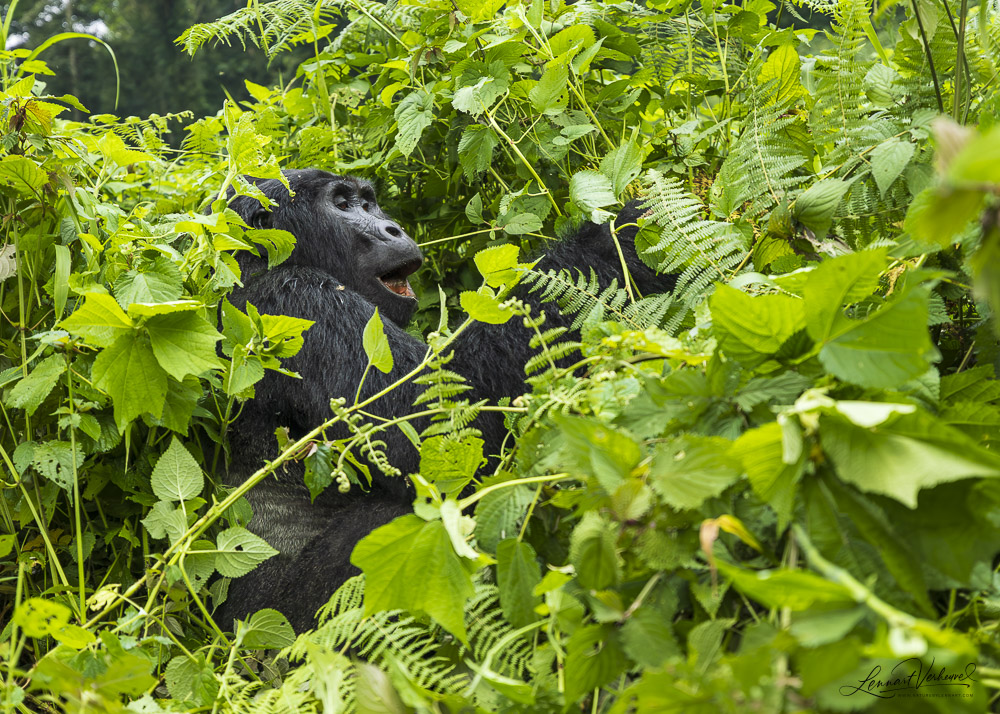
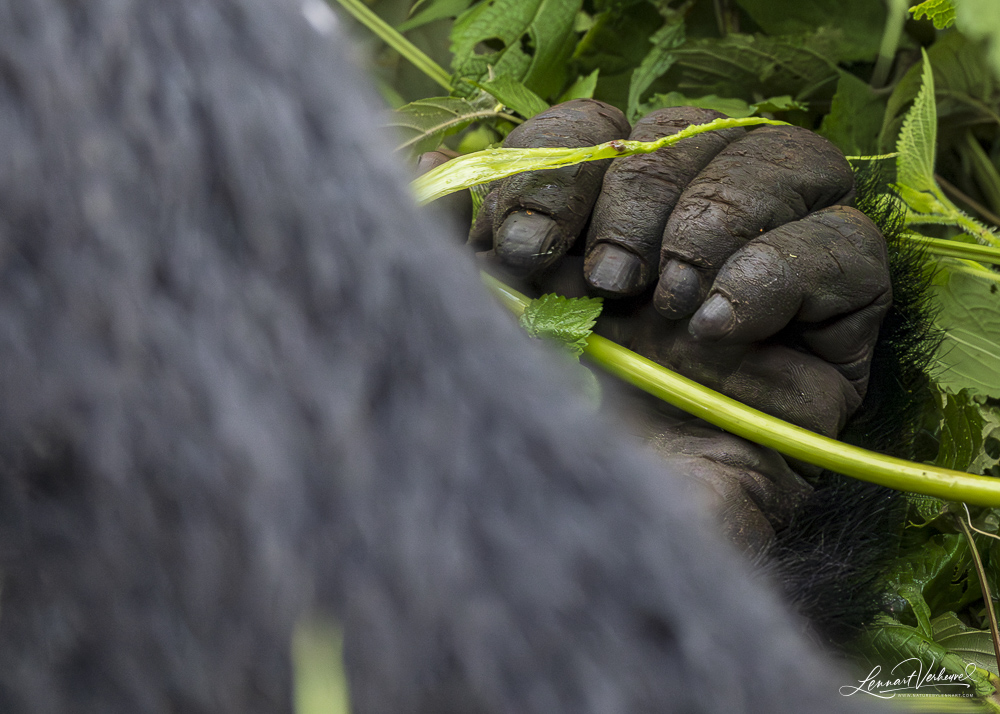
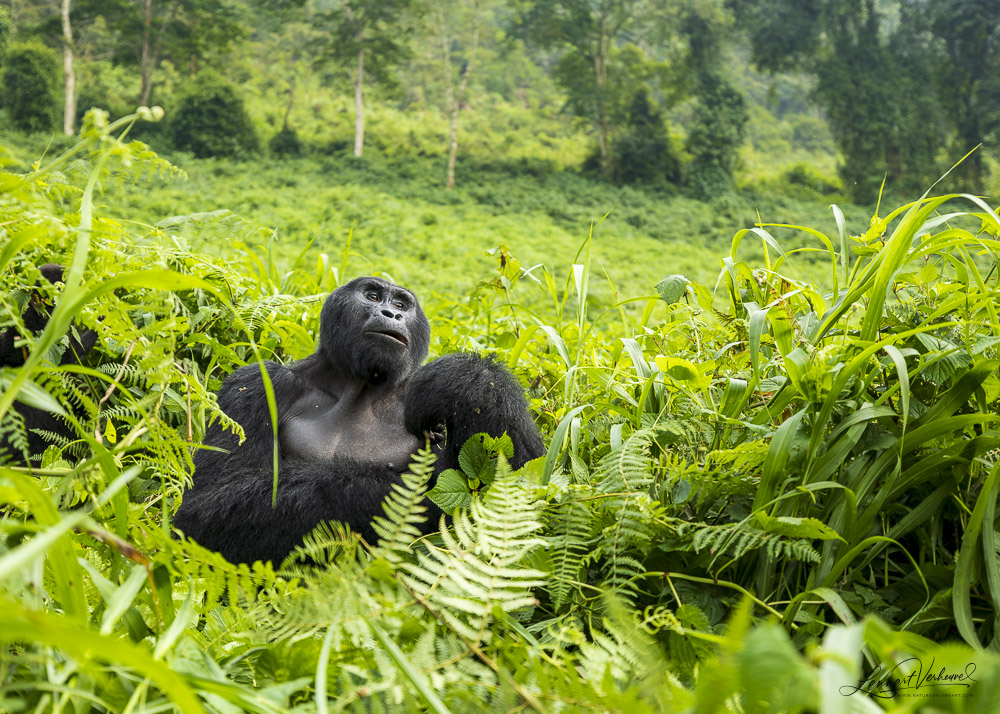
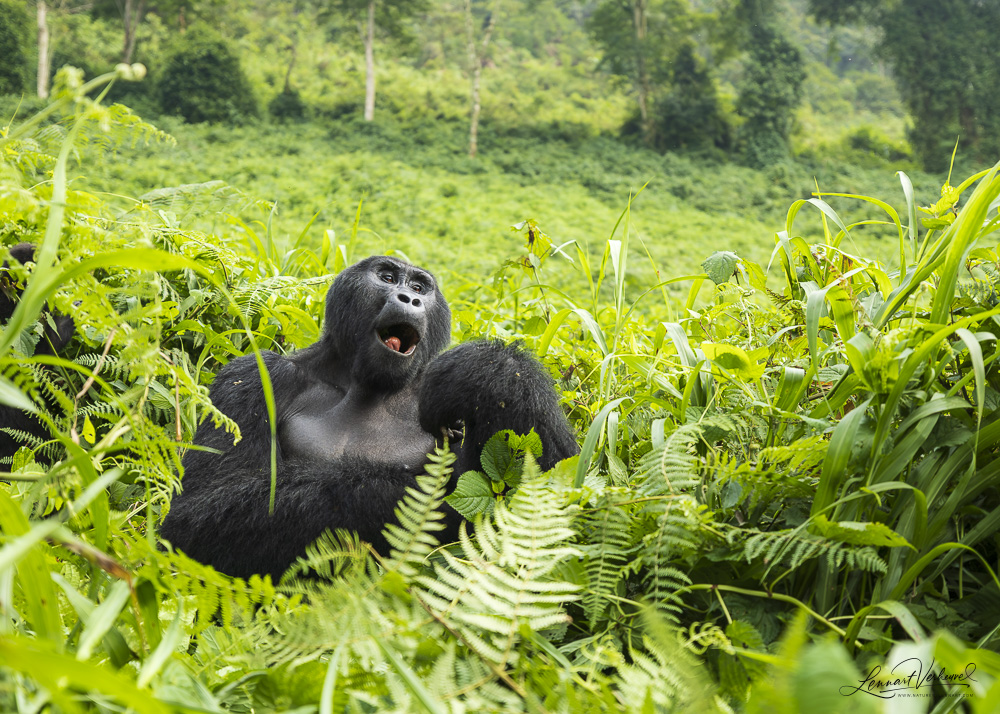
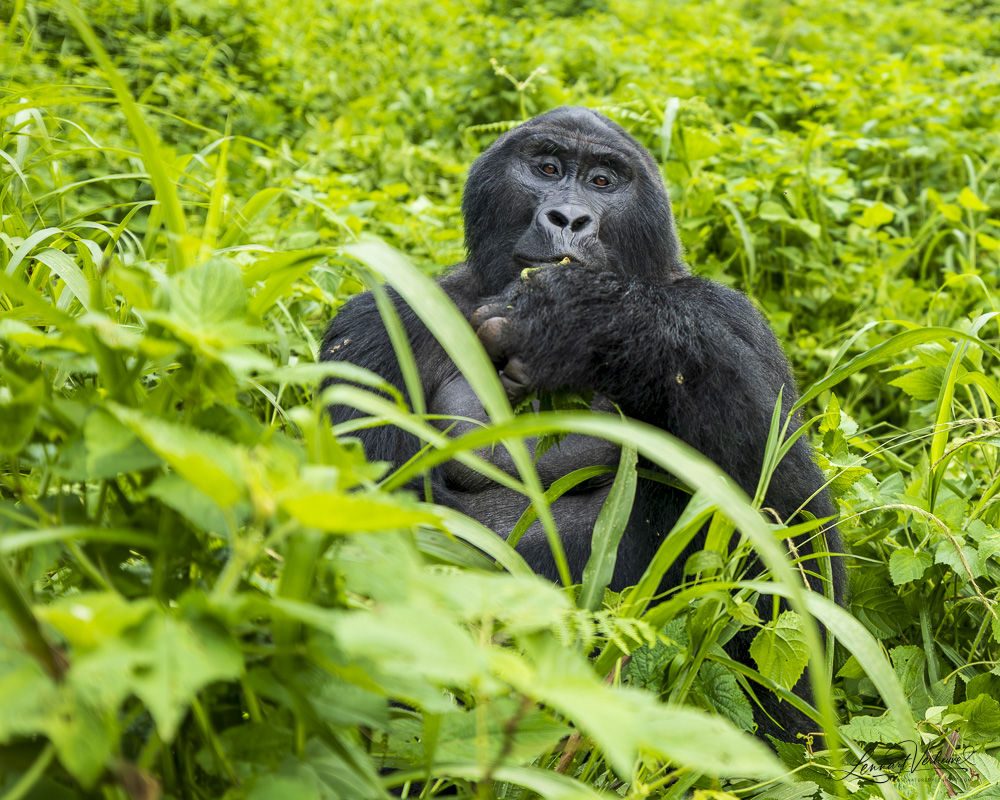
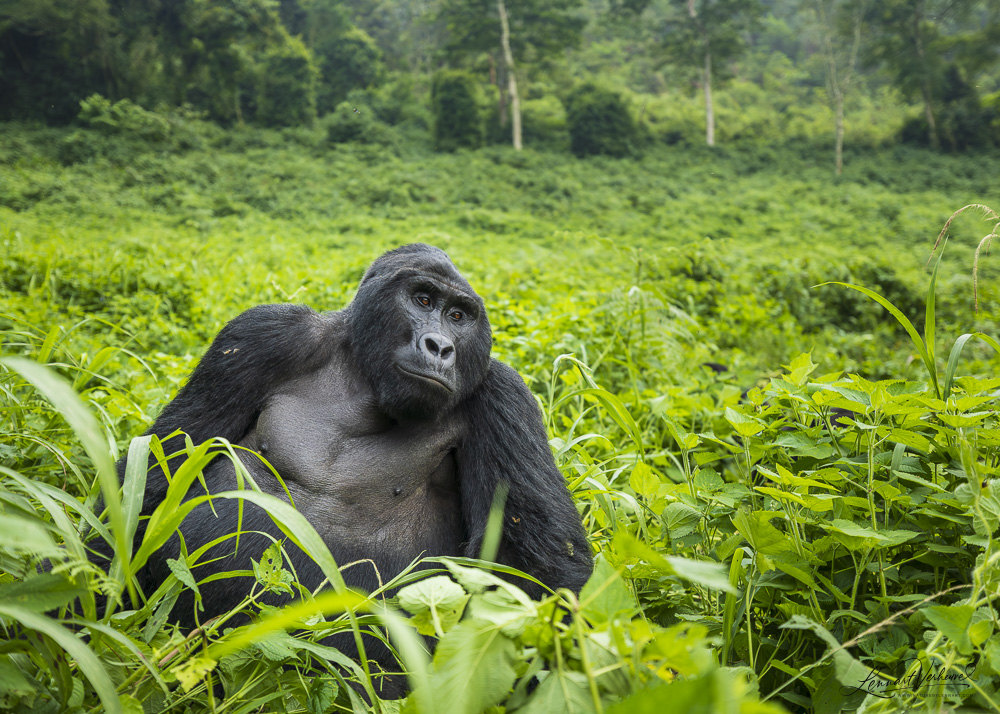
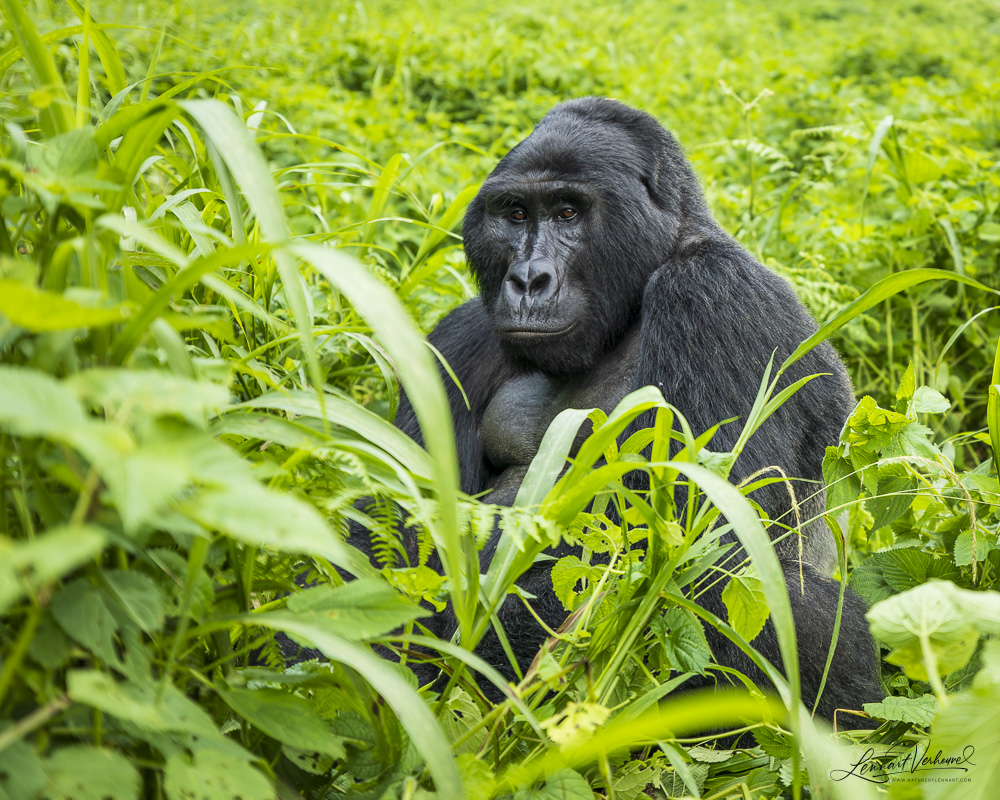
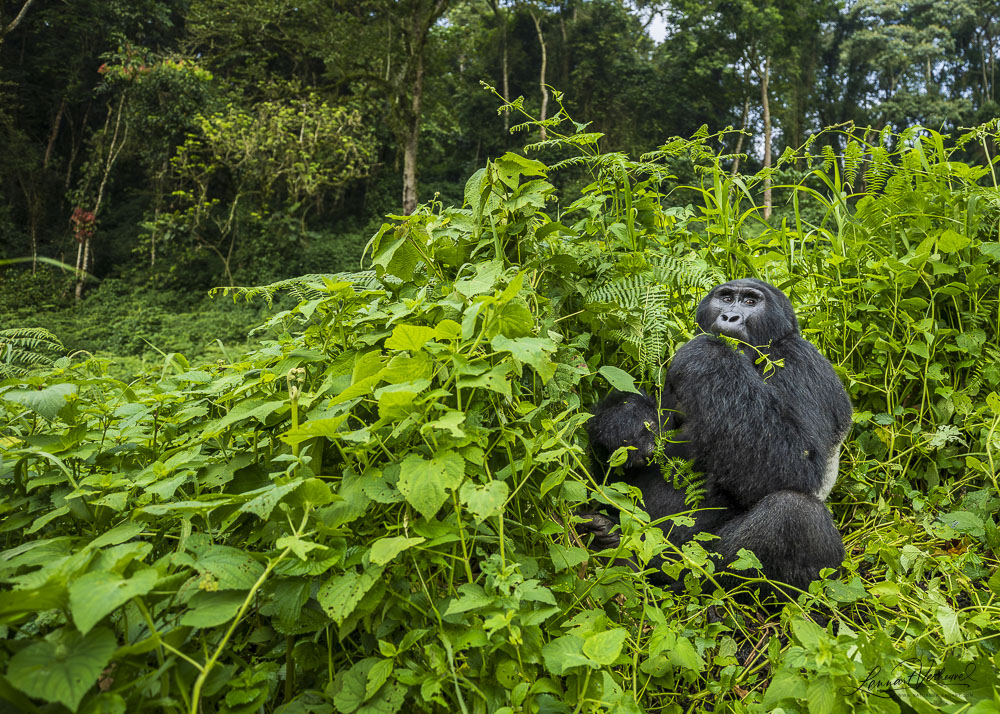
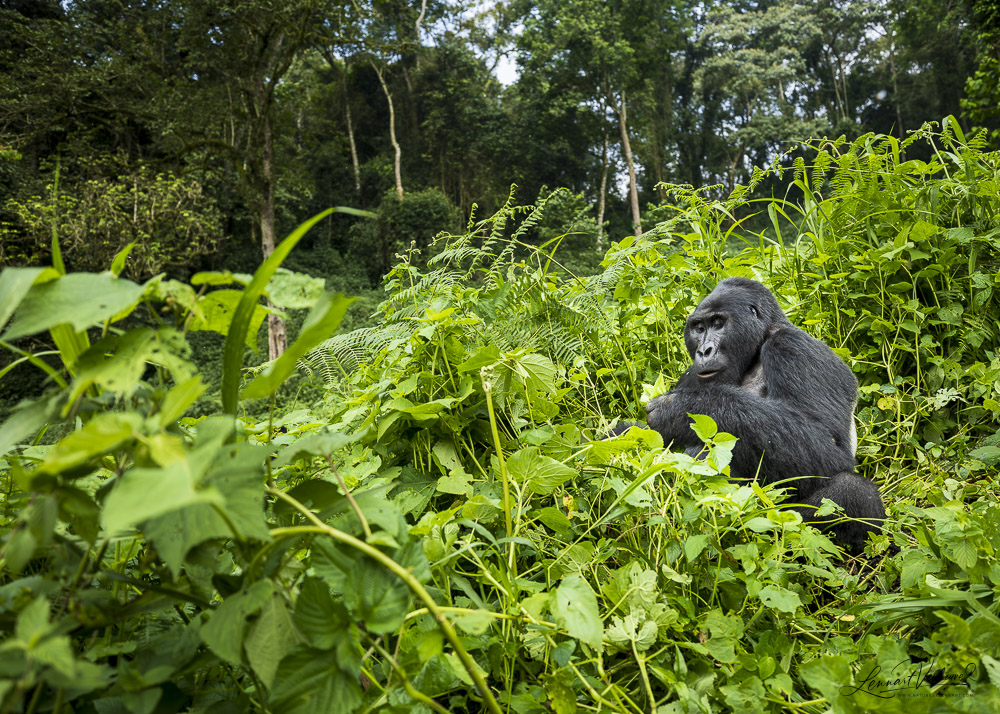
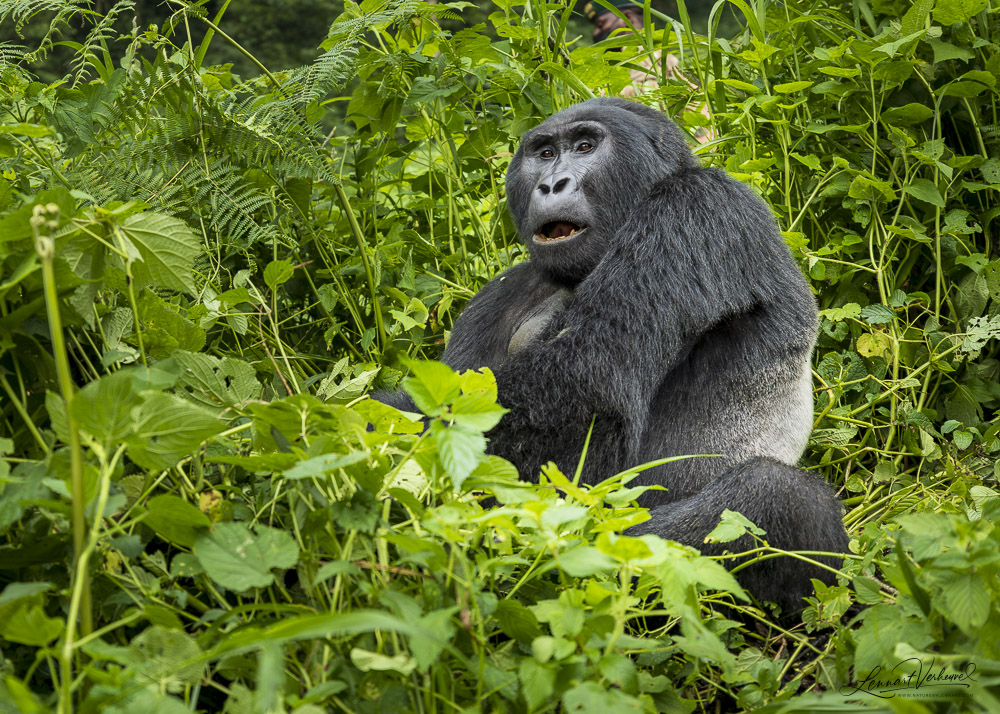
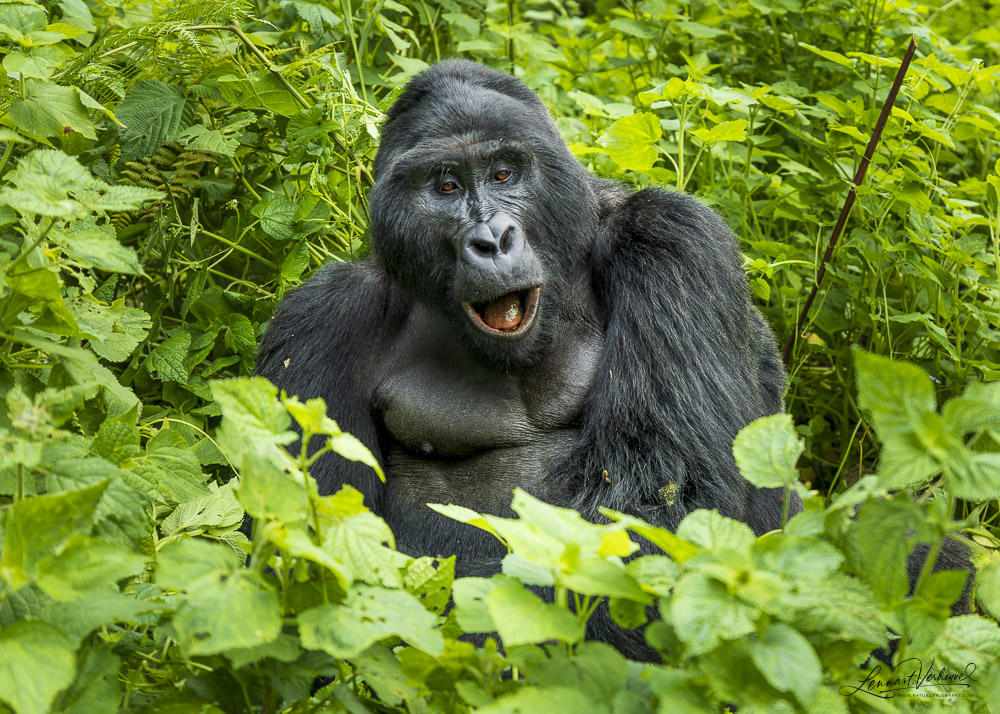
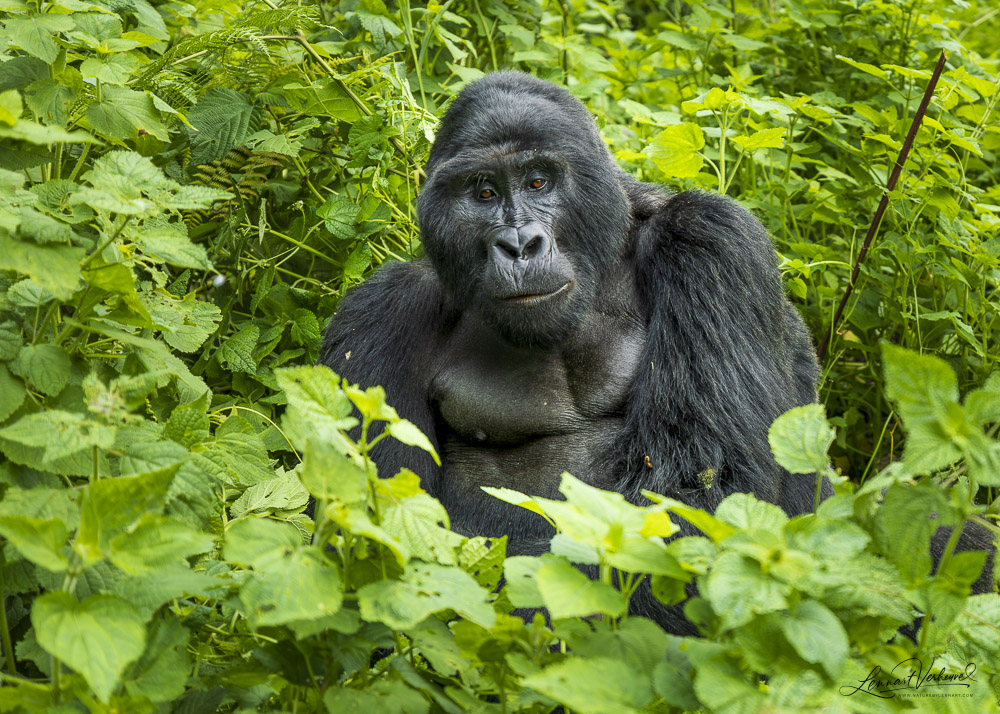
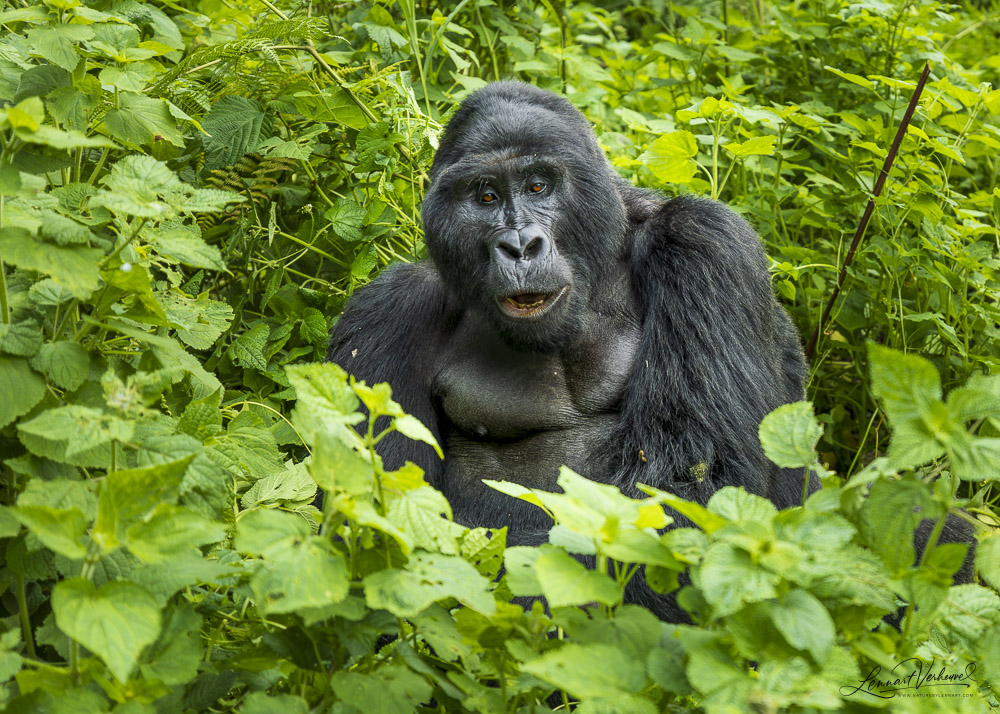
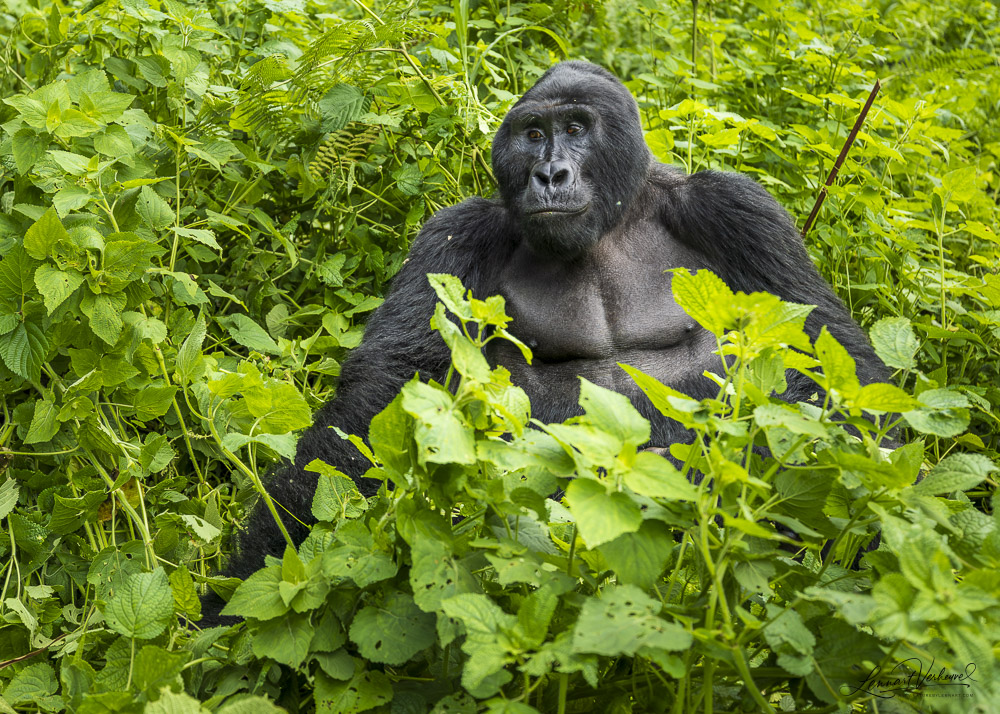
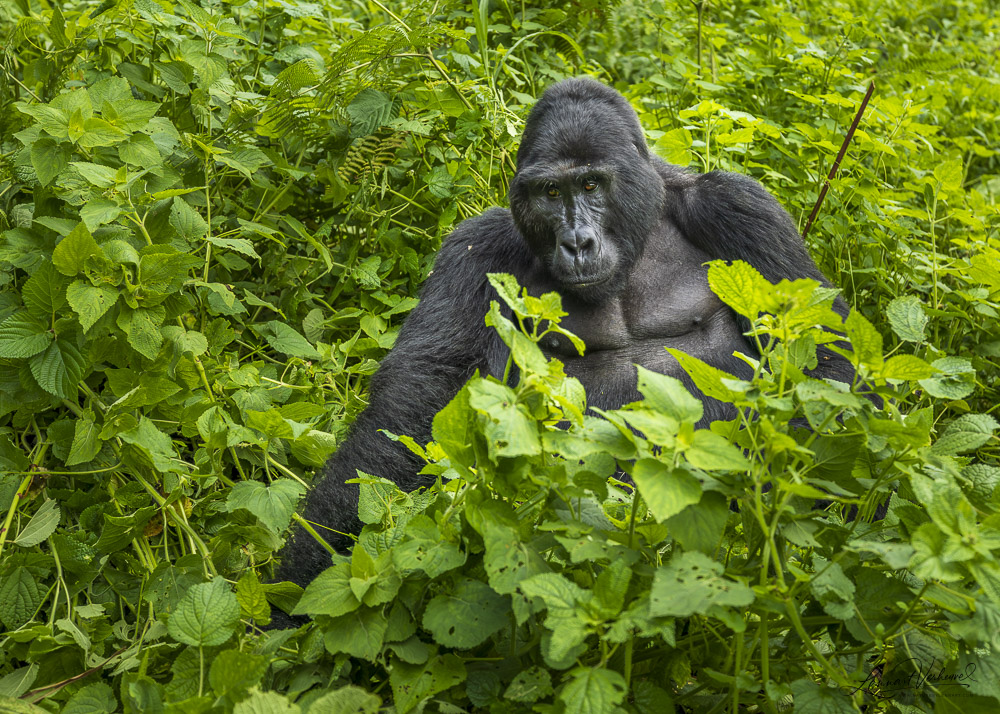
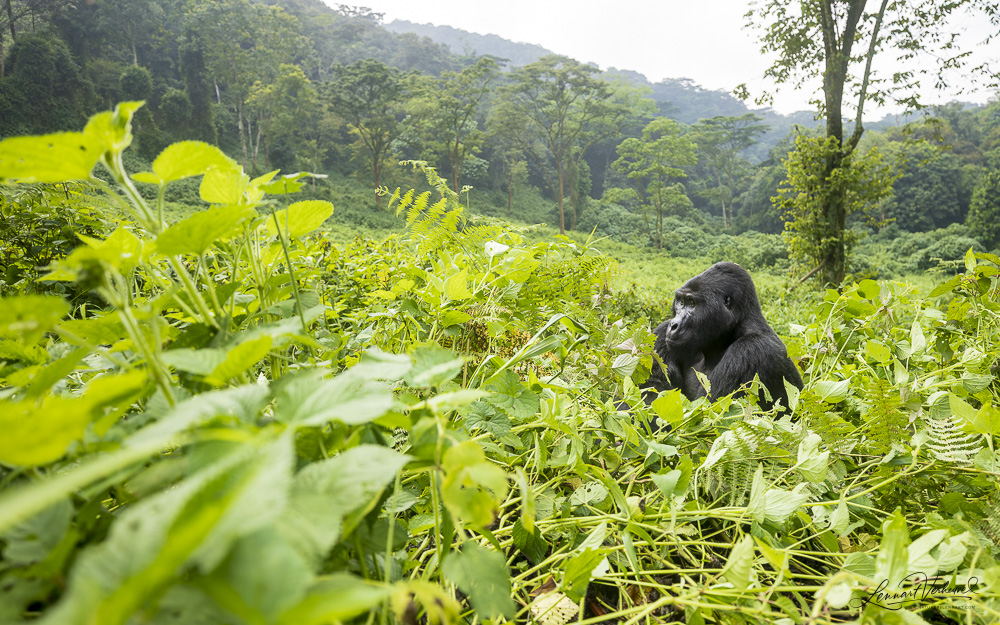
Mountain Gorilla
The gorillas seemed utterly indifferent to us, treating us more like part of their surroundings than as beings to interact with. The silverback focused on eating, while the youngster showed some curiosity.
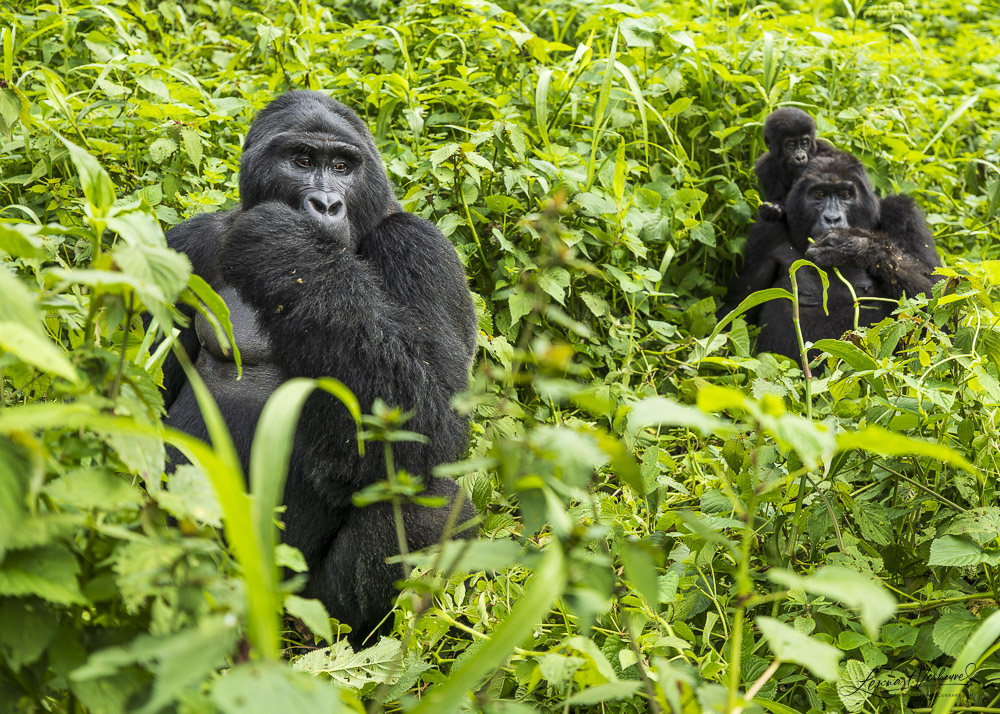
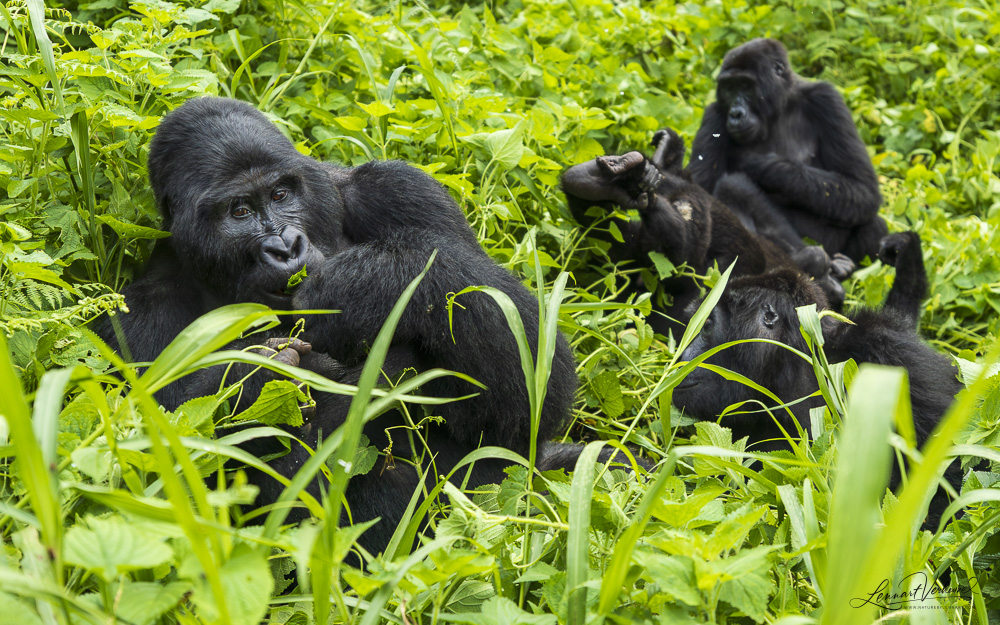
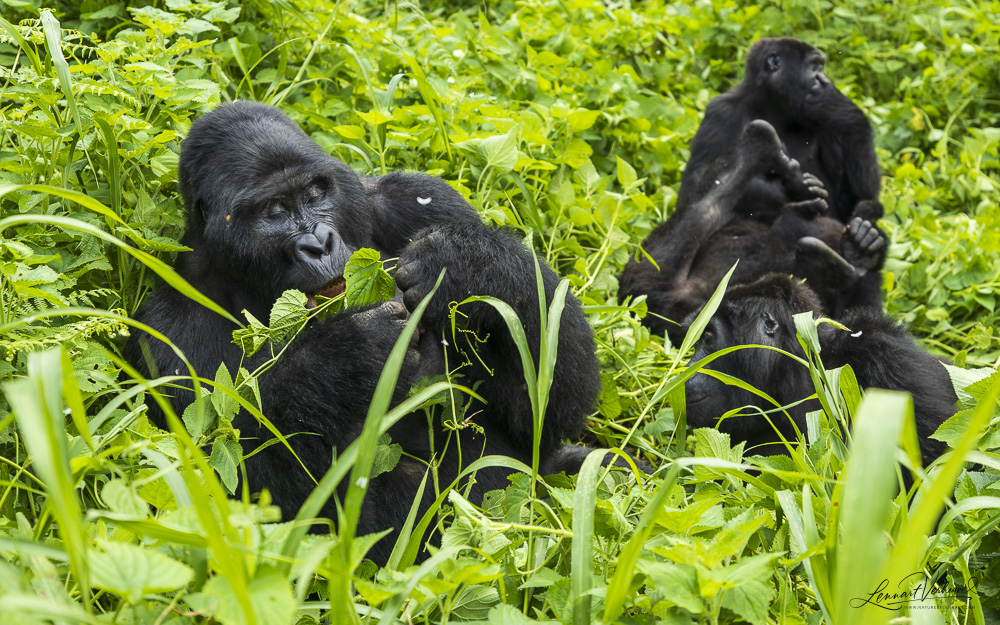

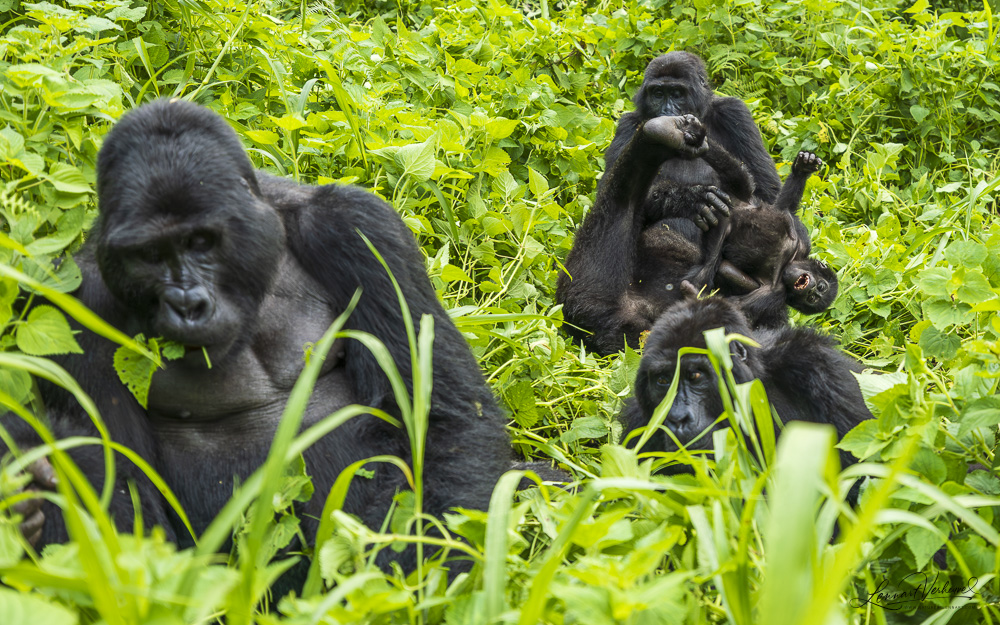
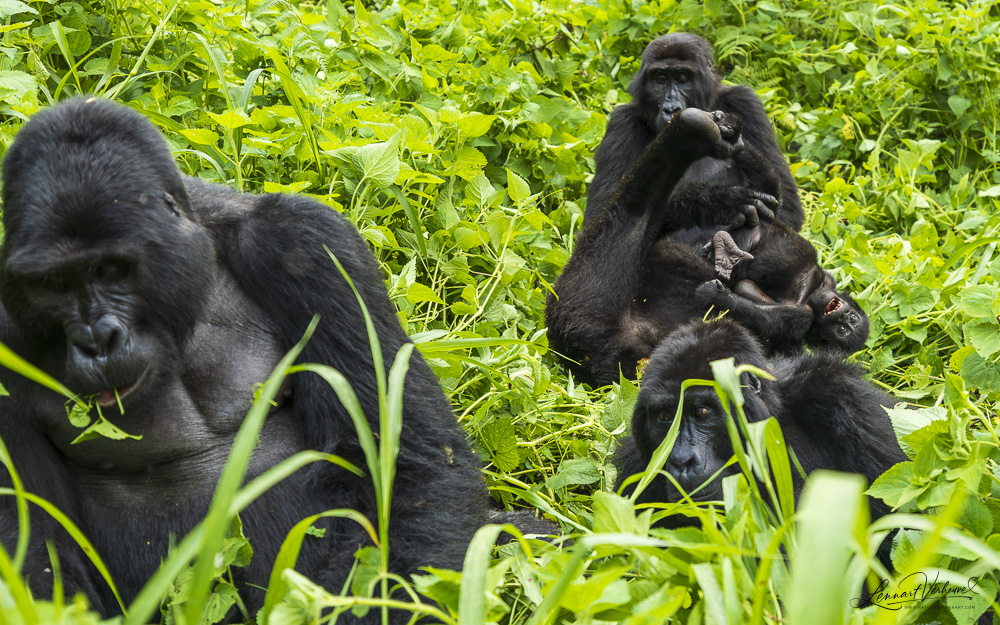
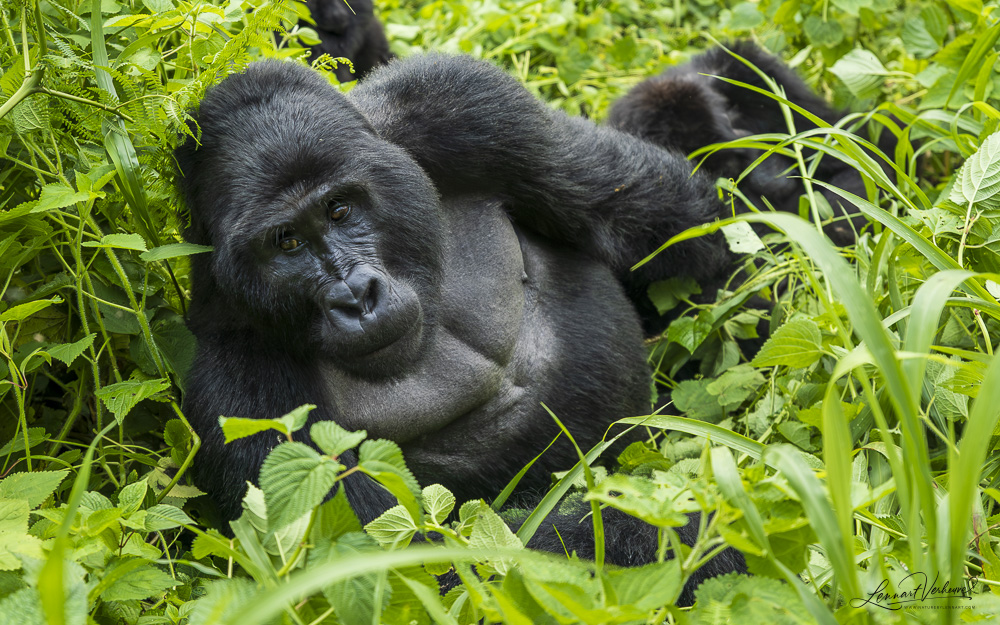
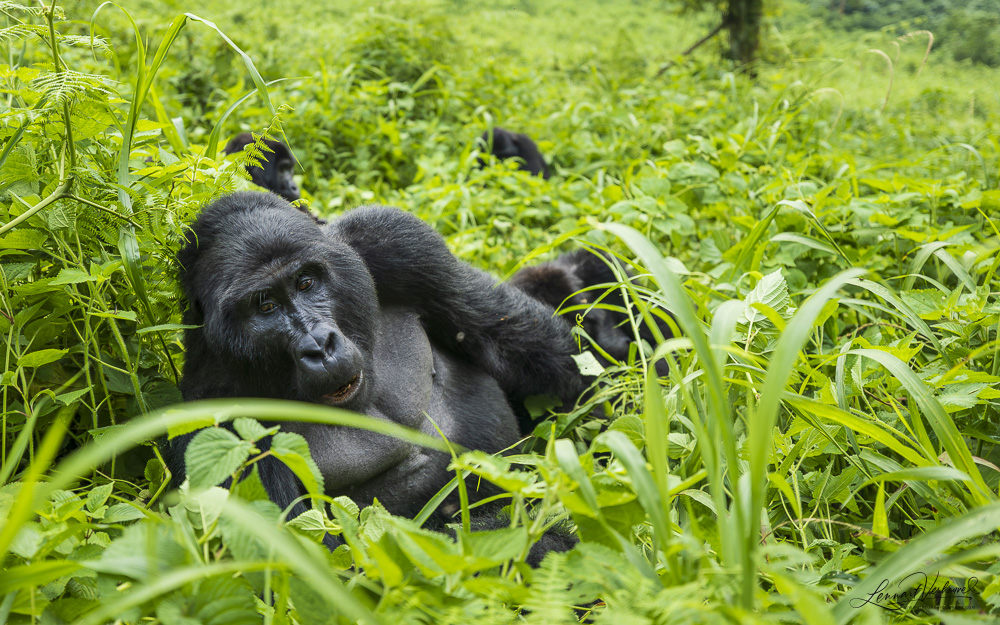
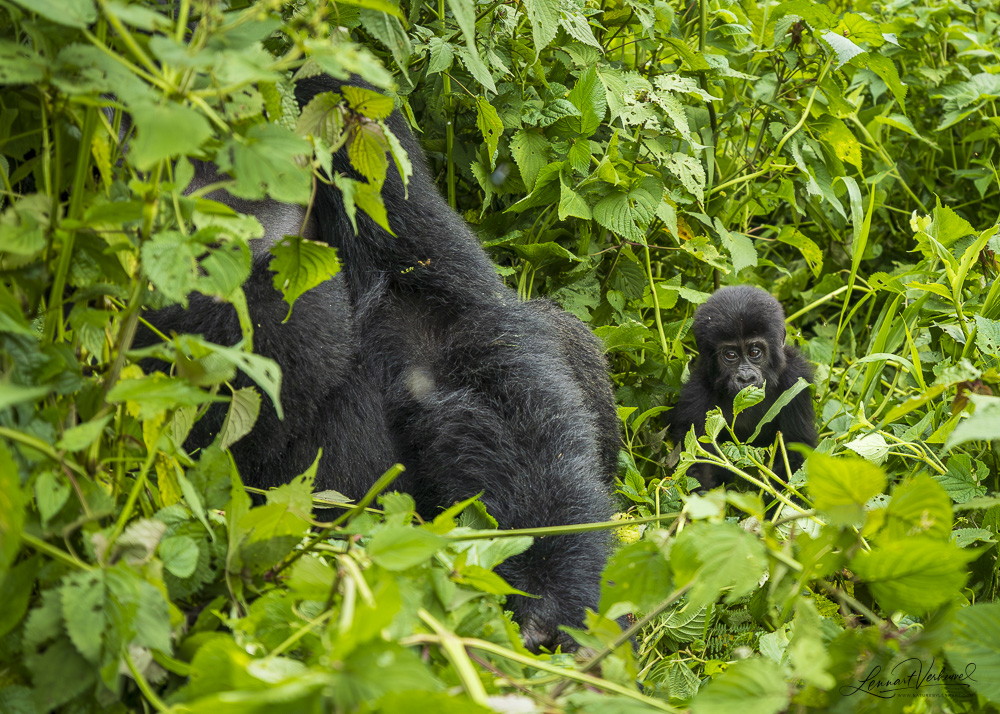
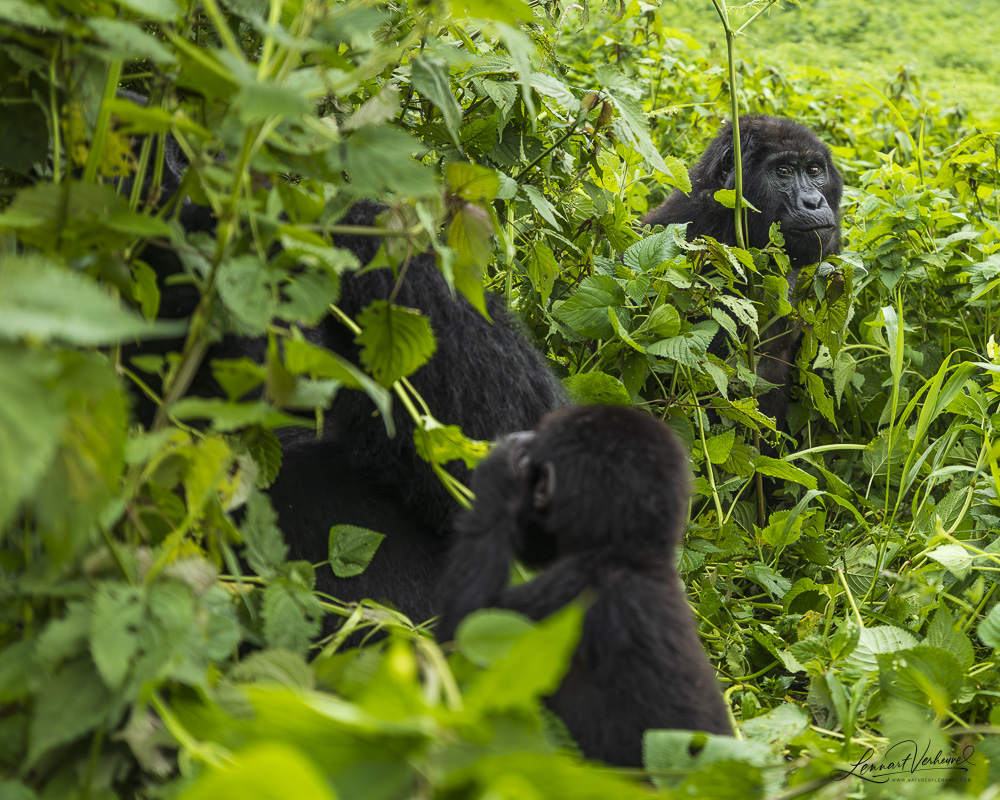
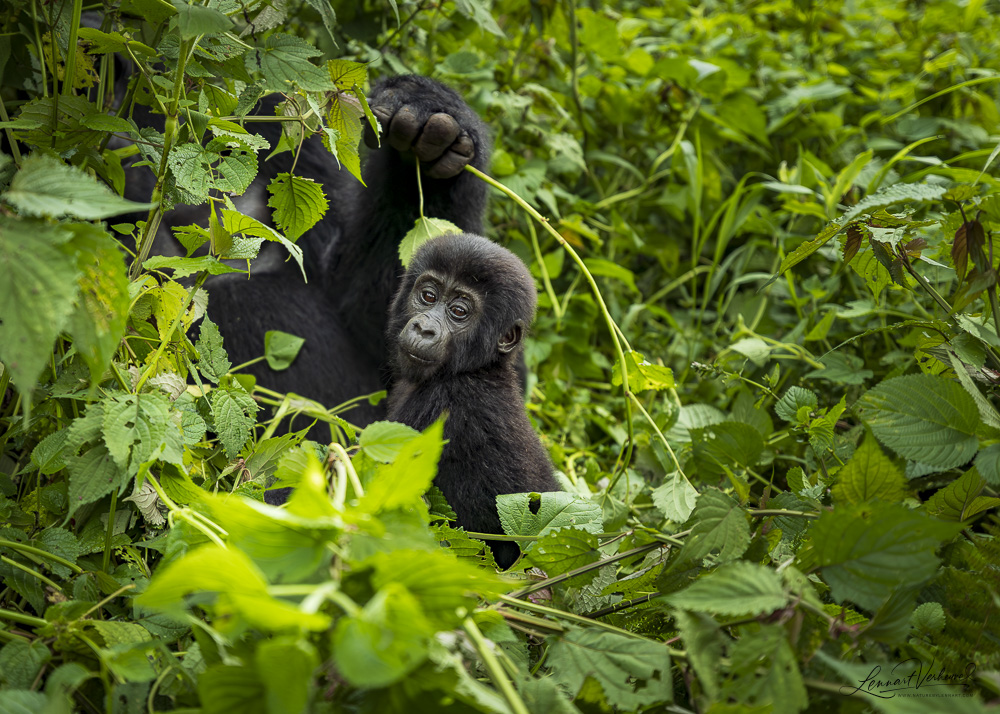
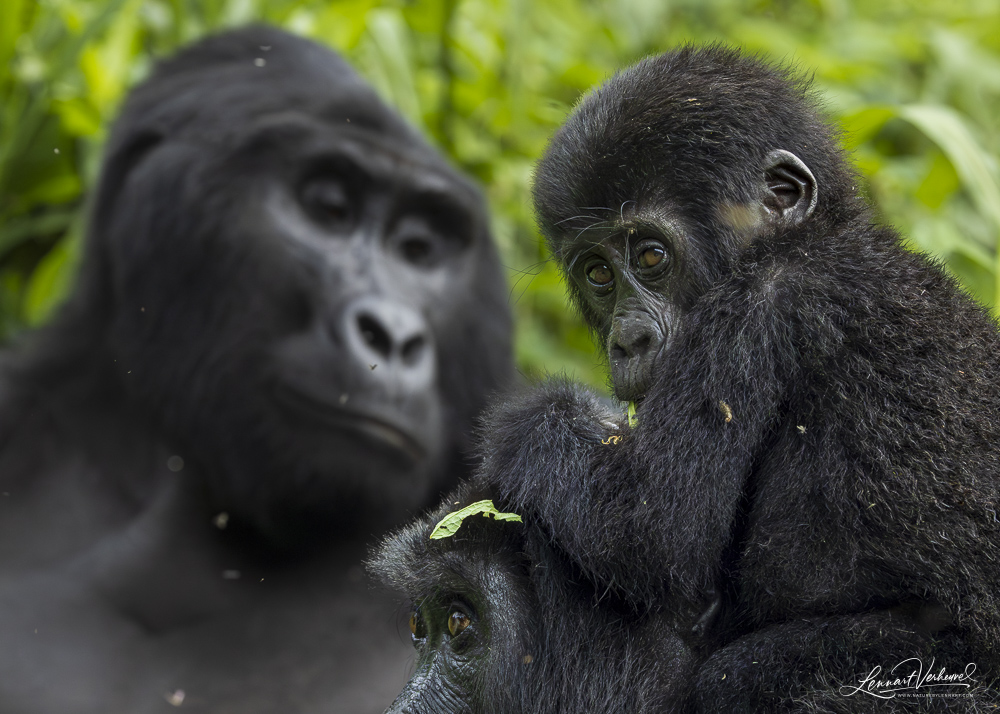

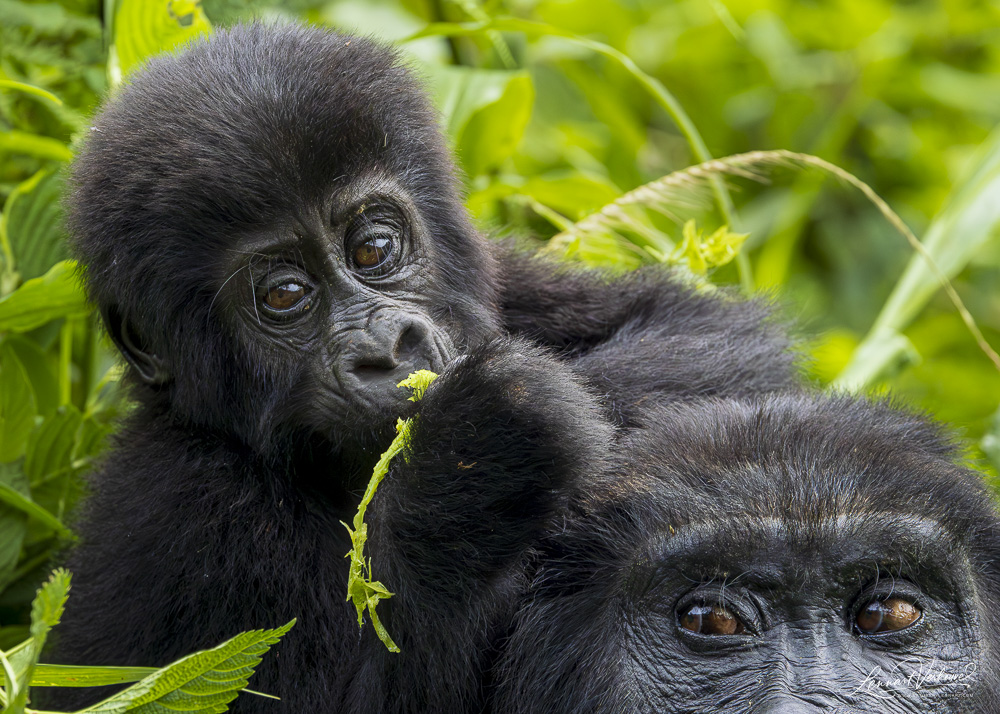
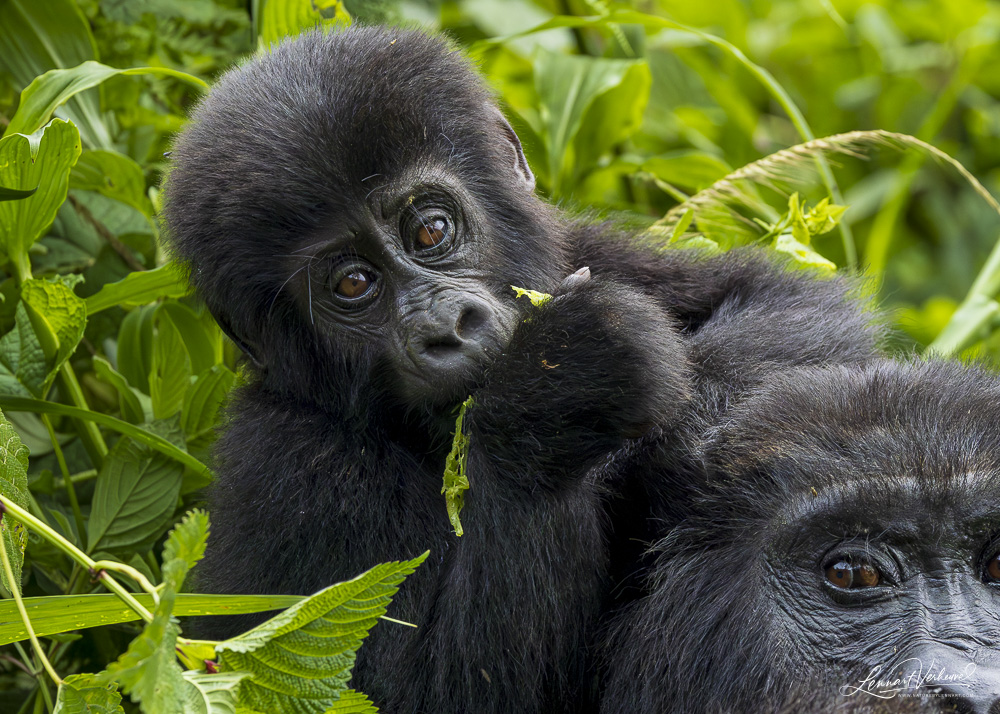
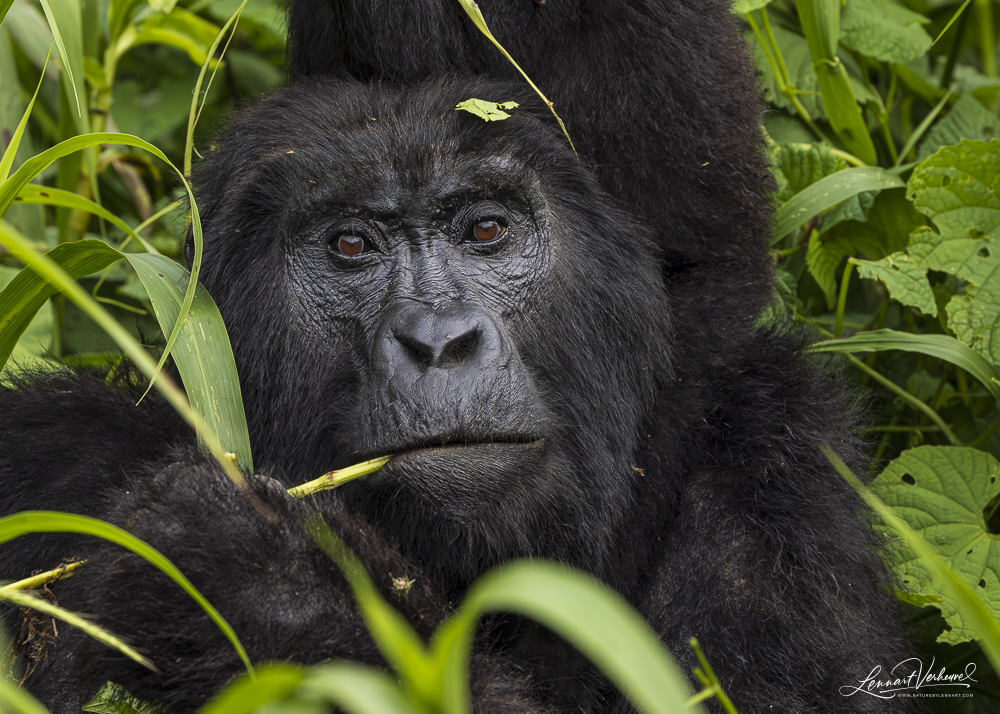
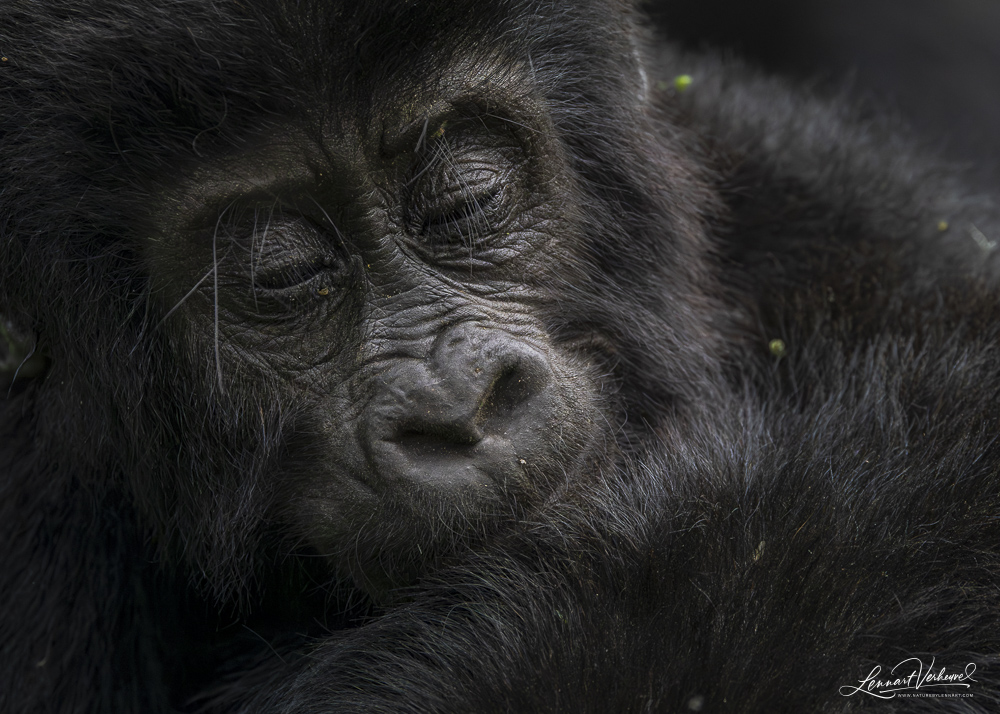
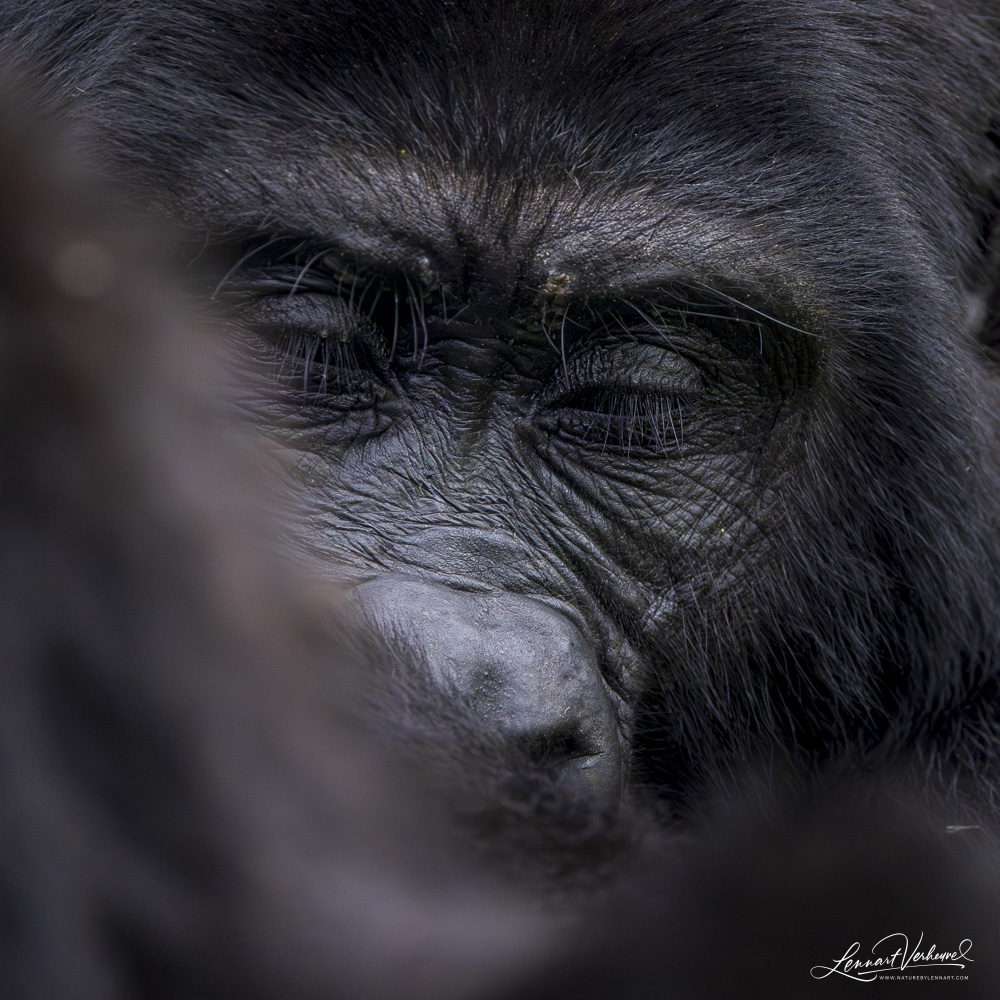
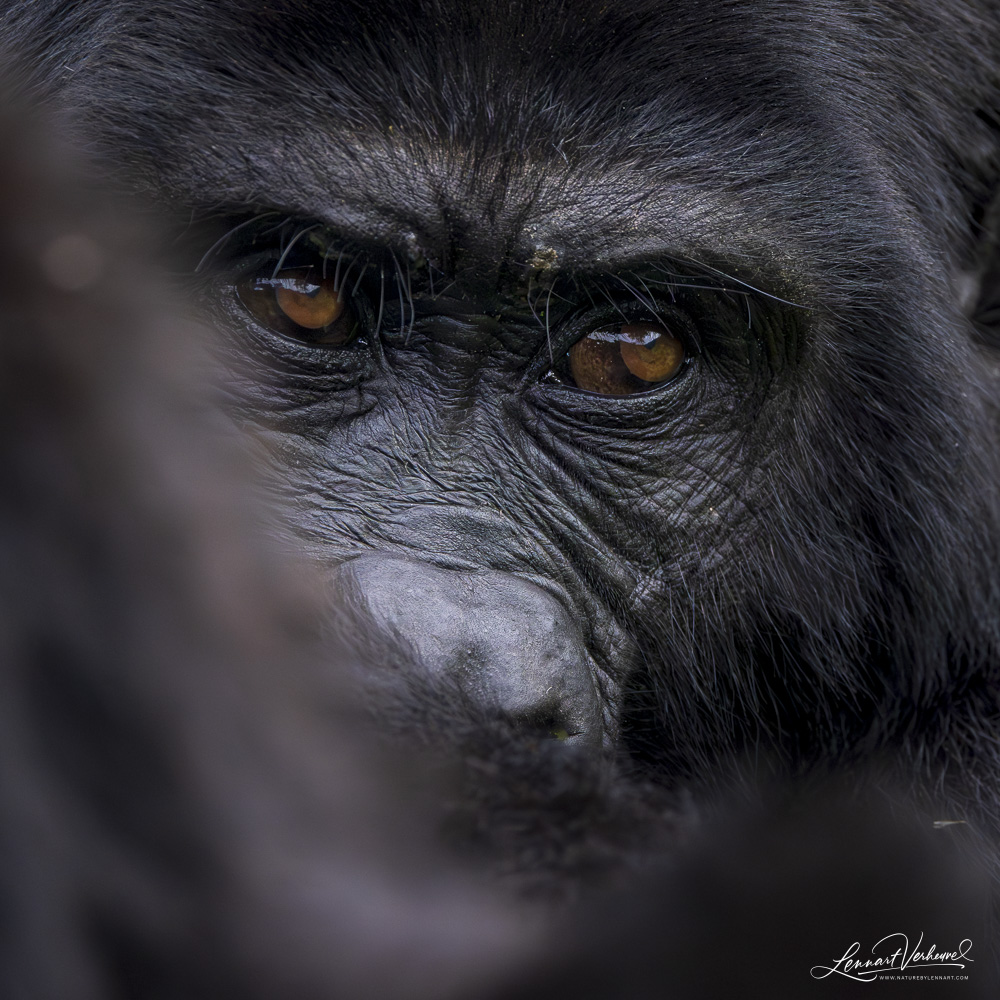
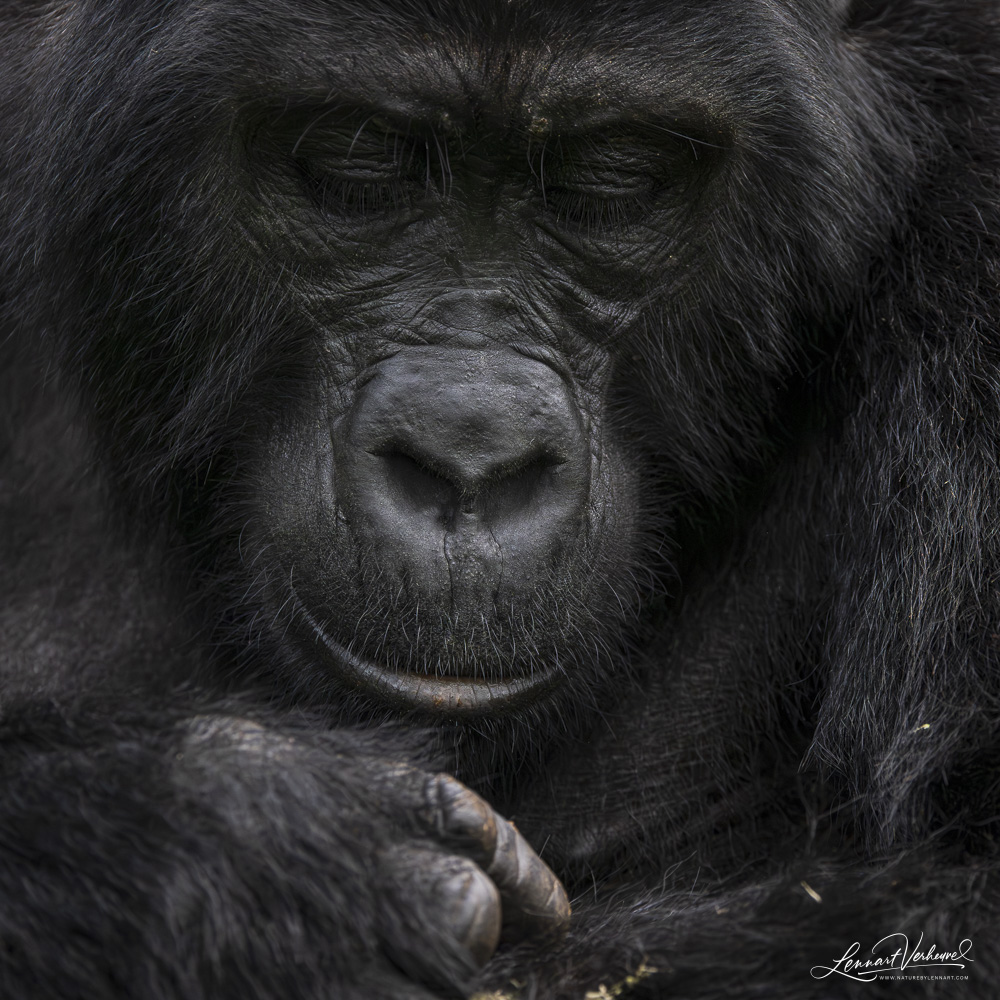
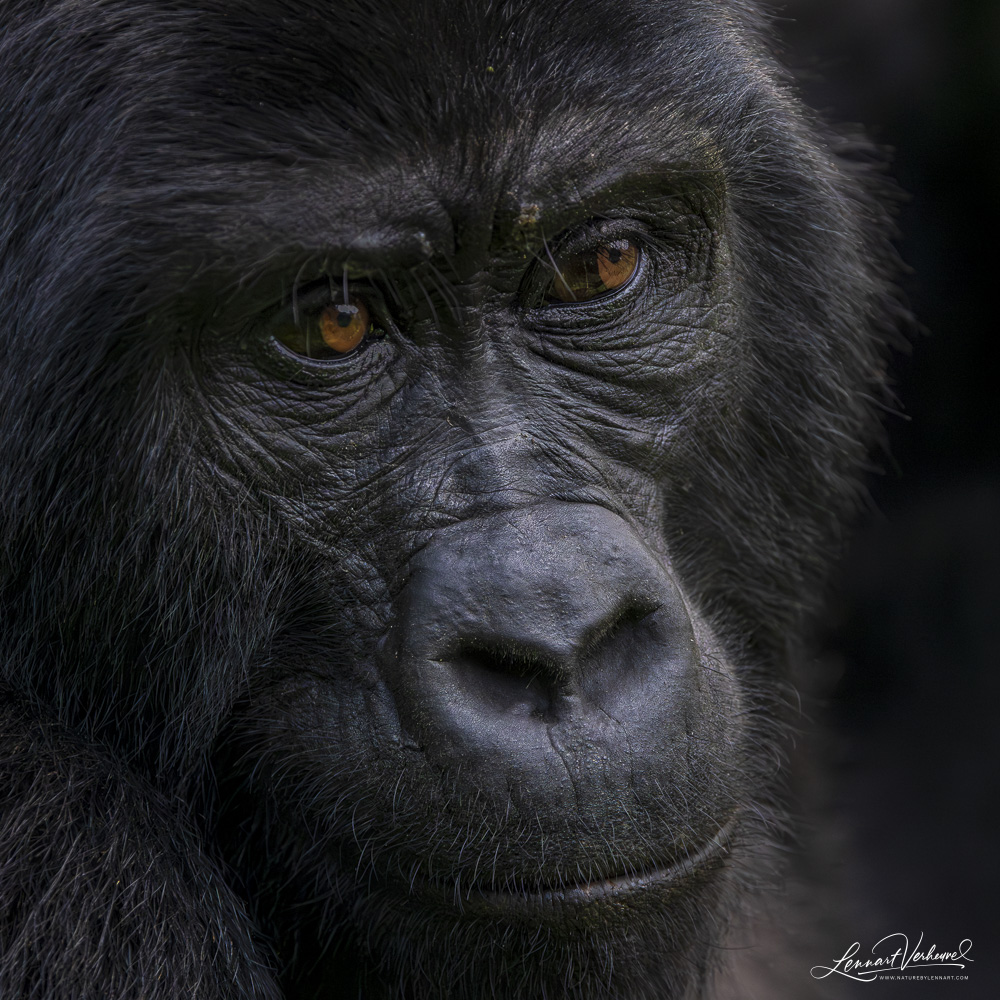
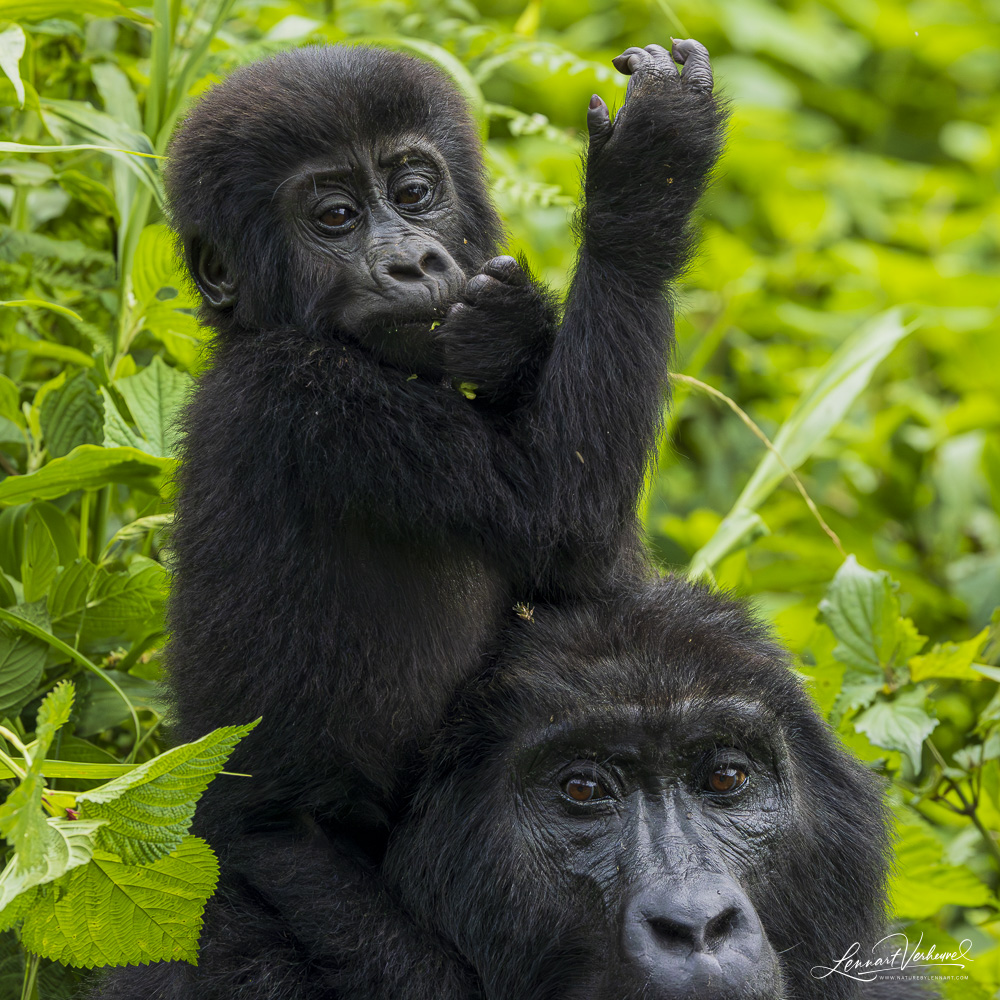
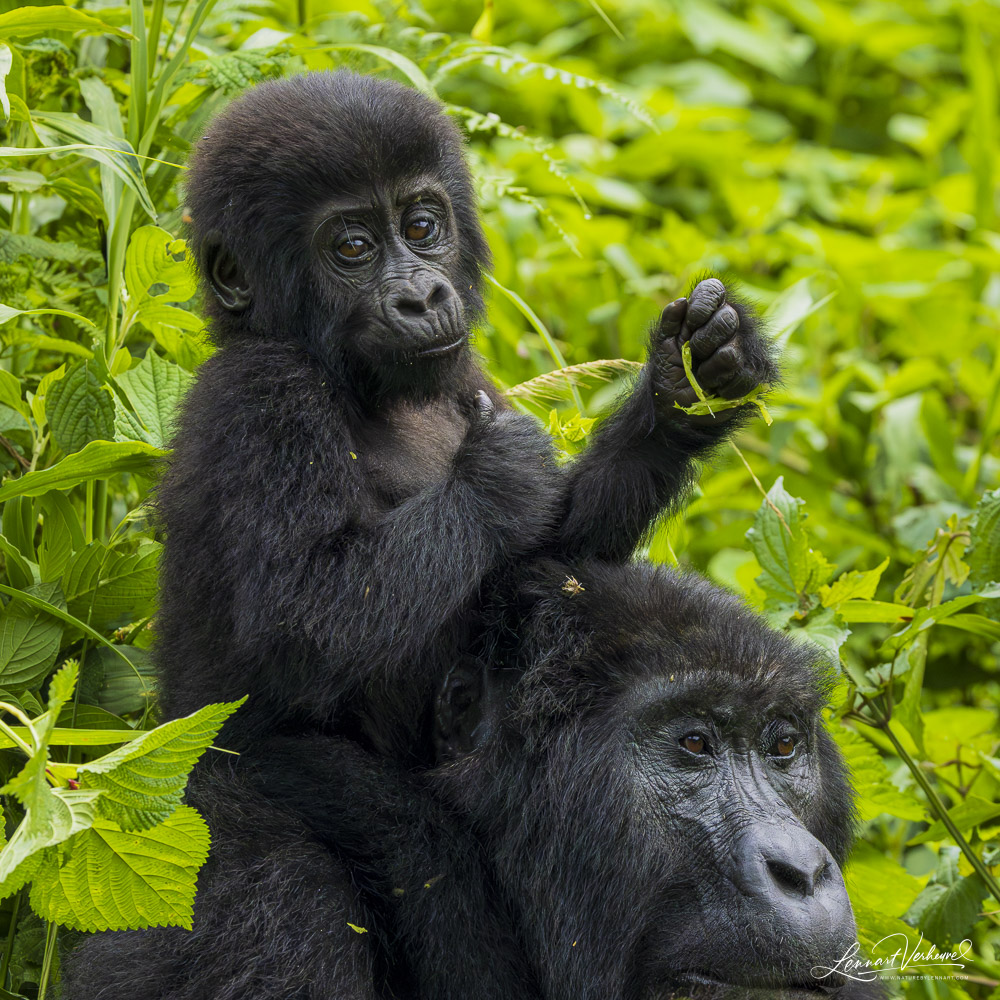
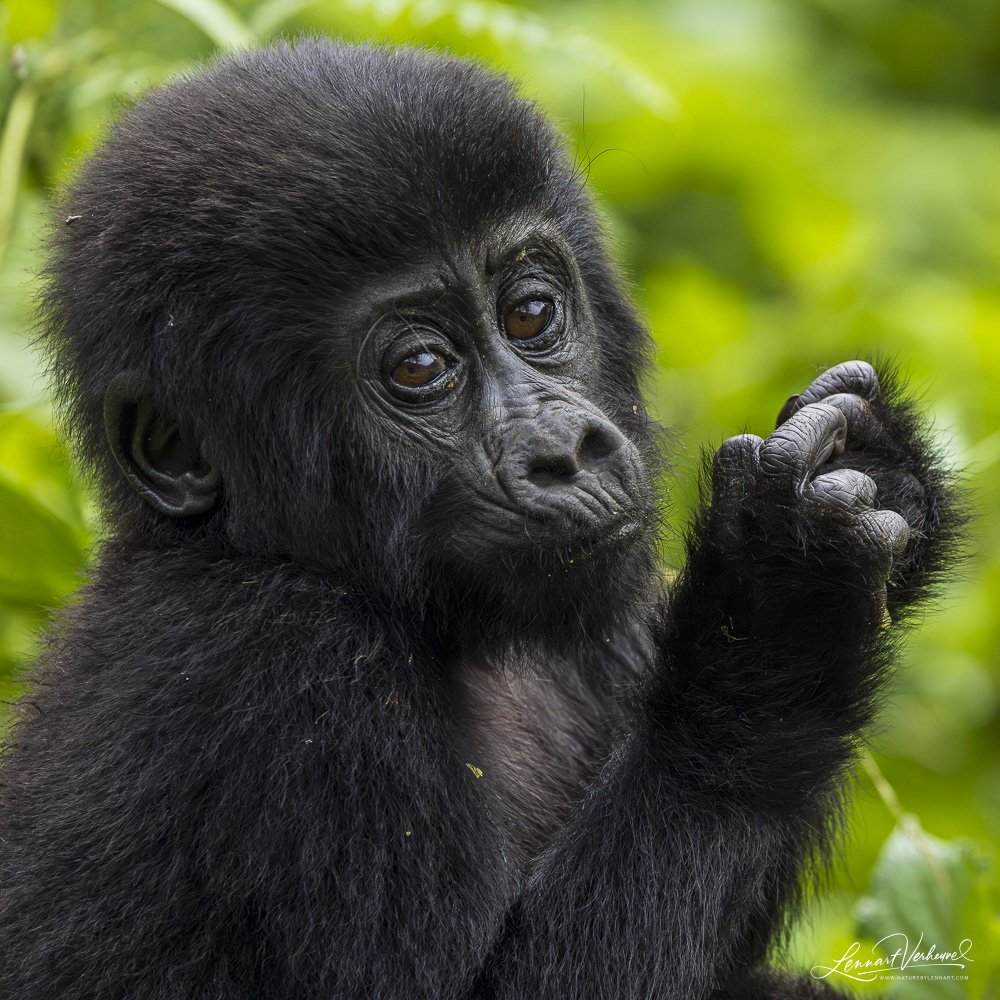
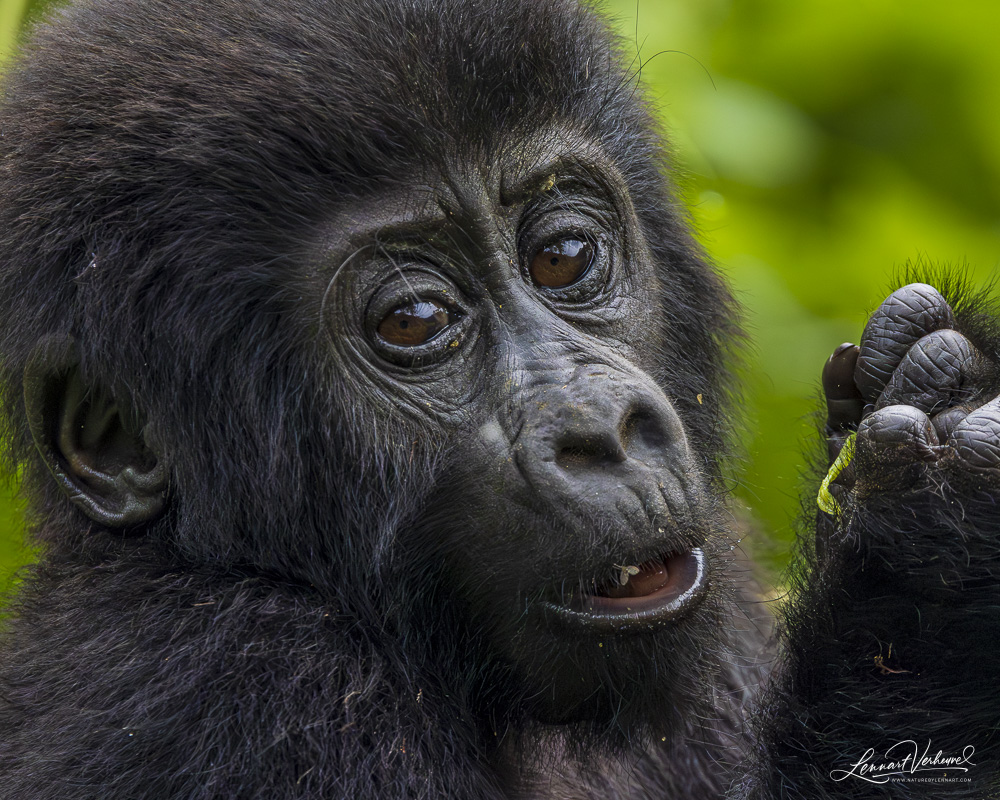
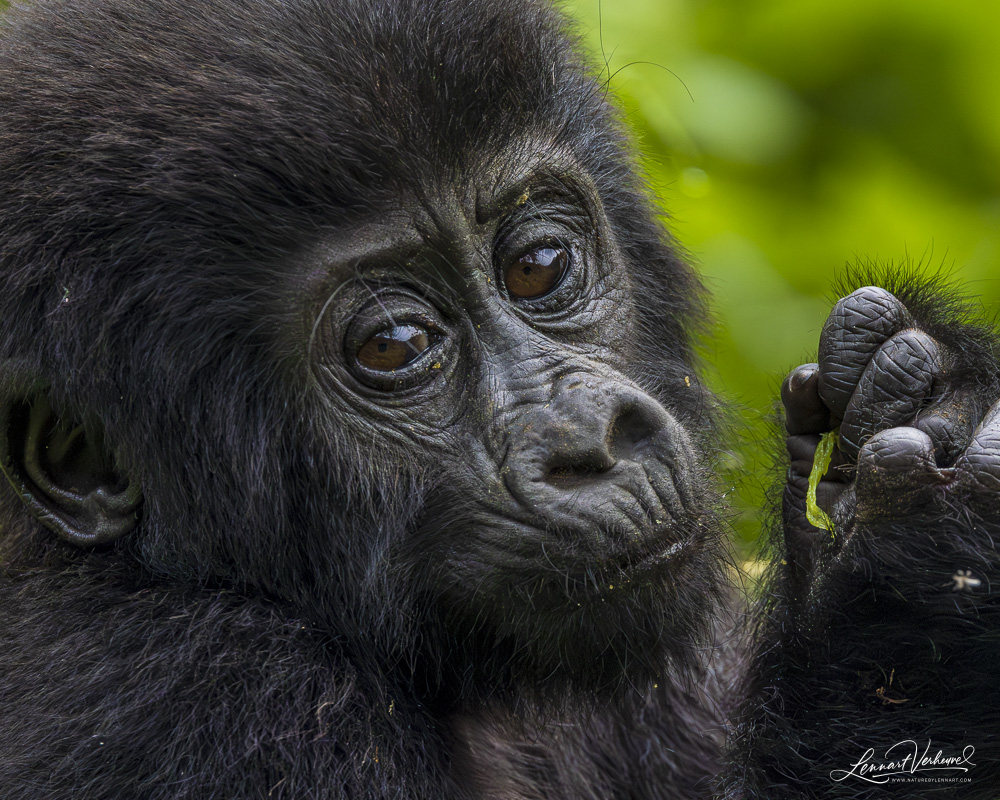
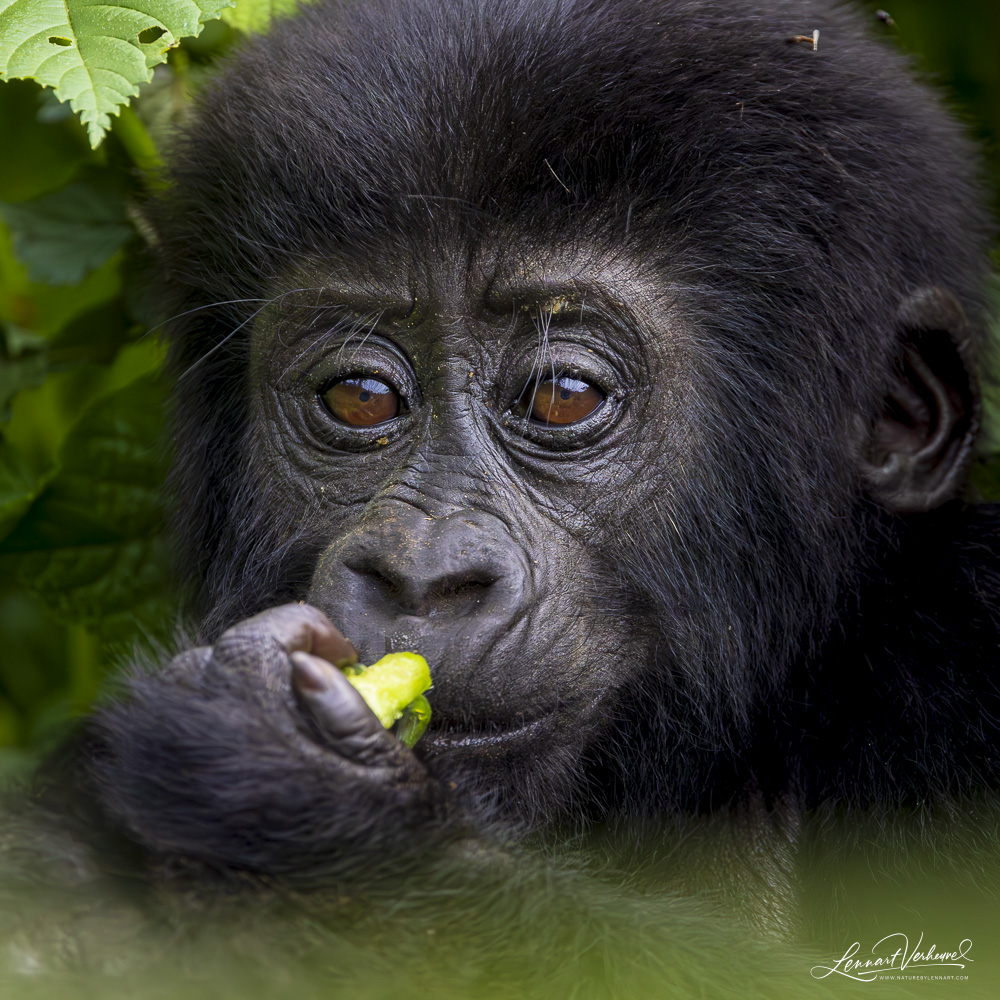
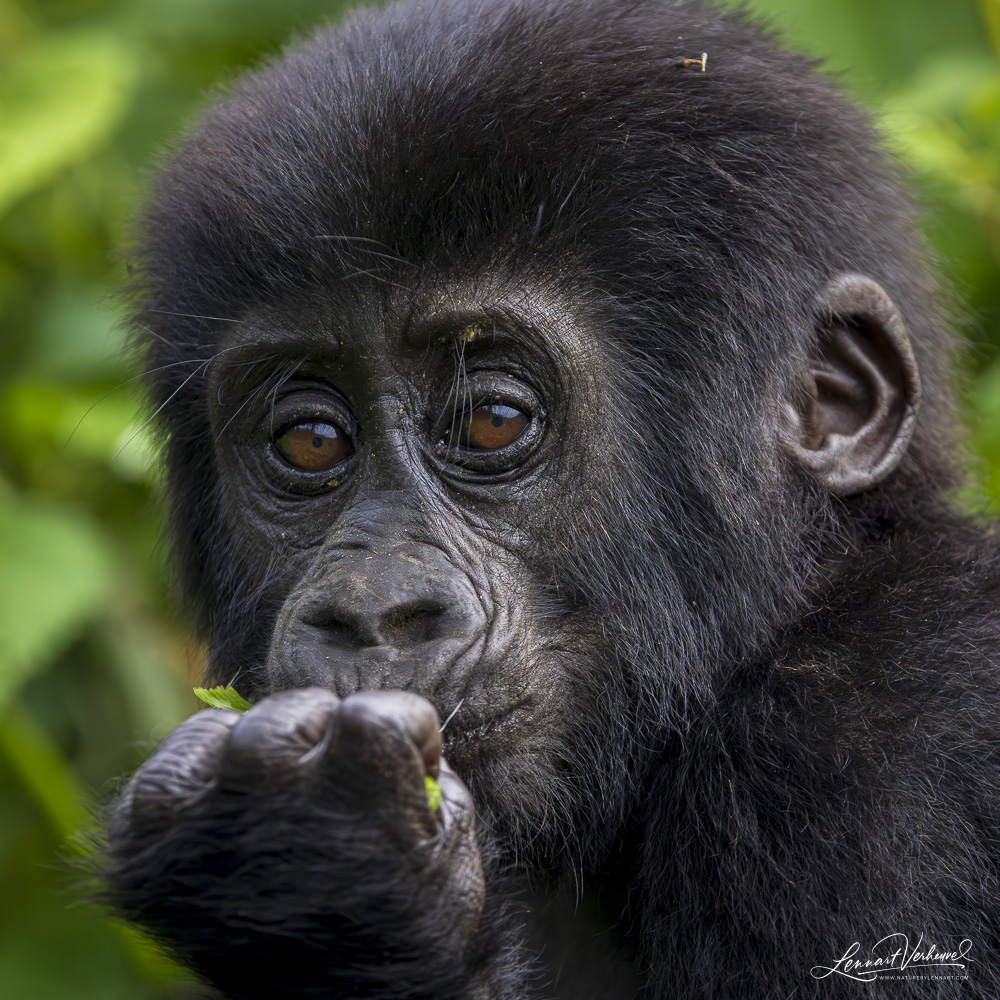

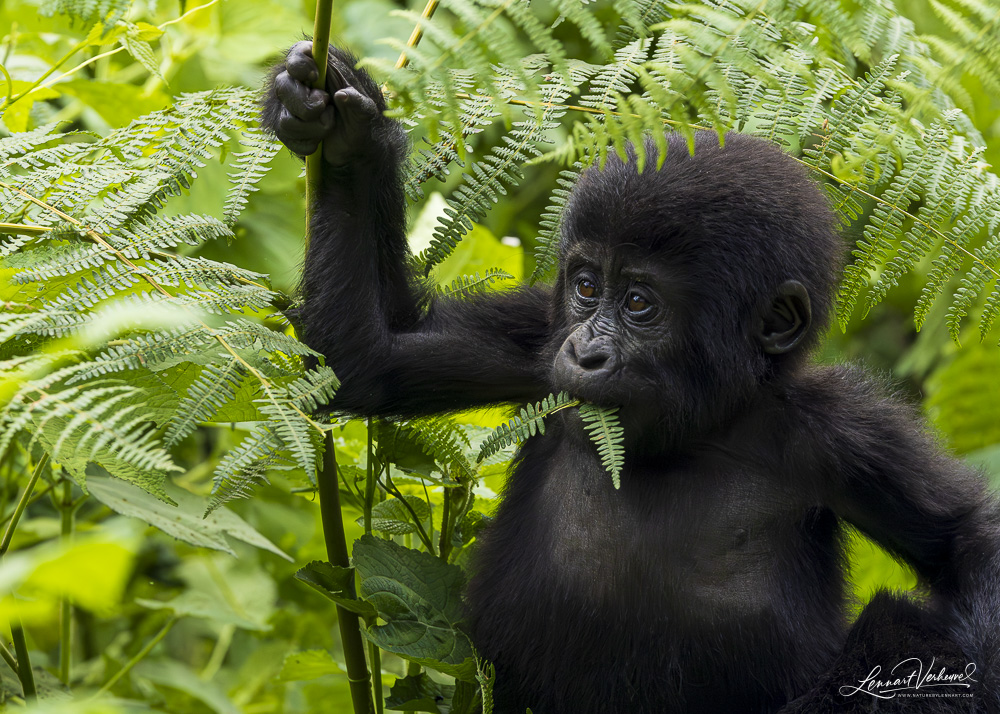
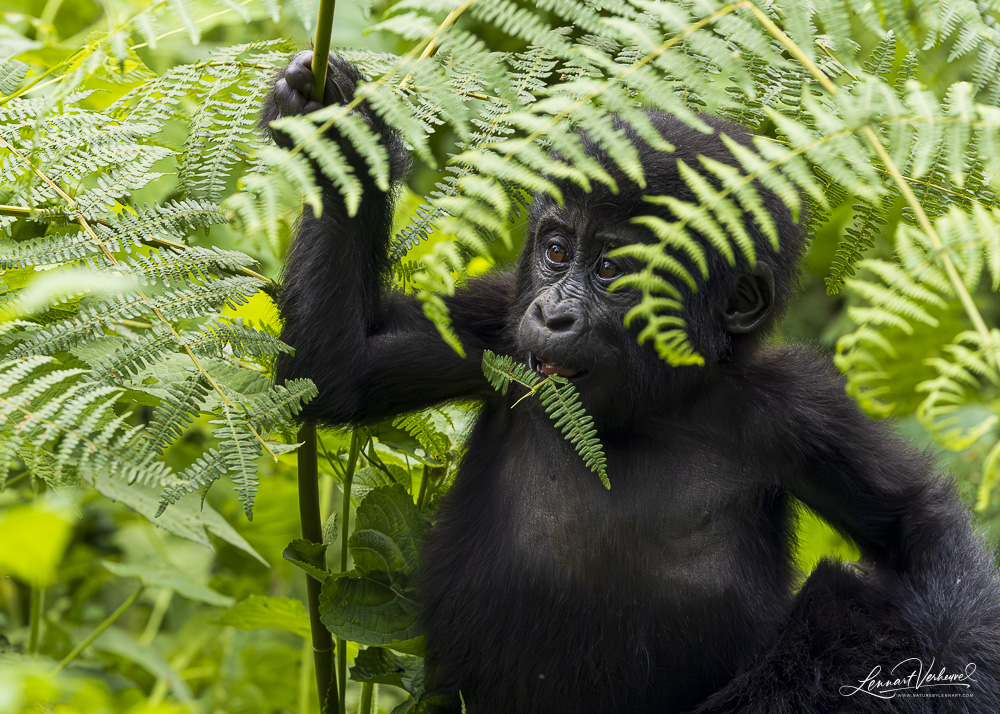
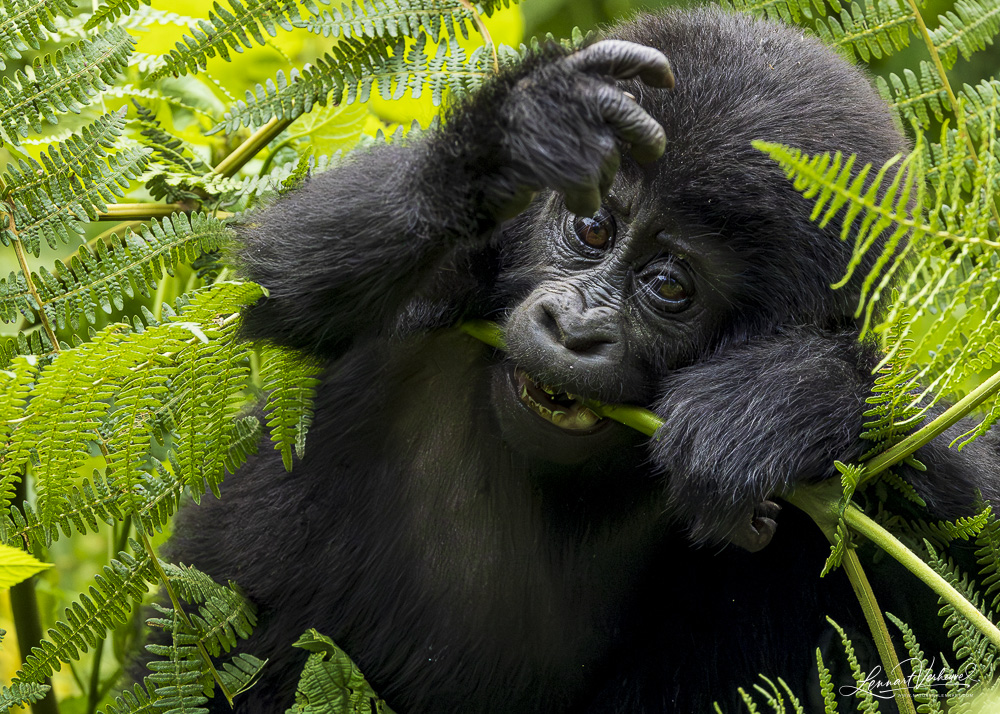
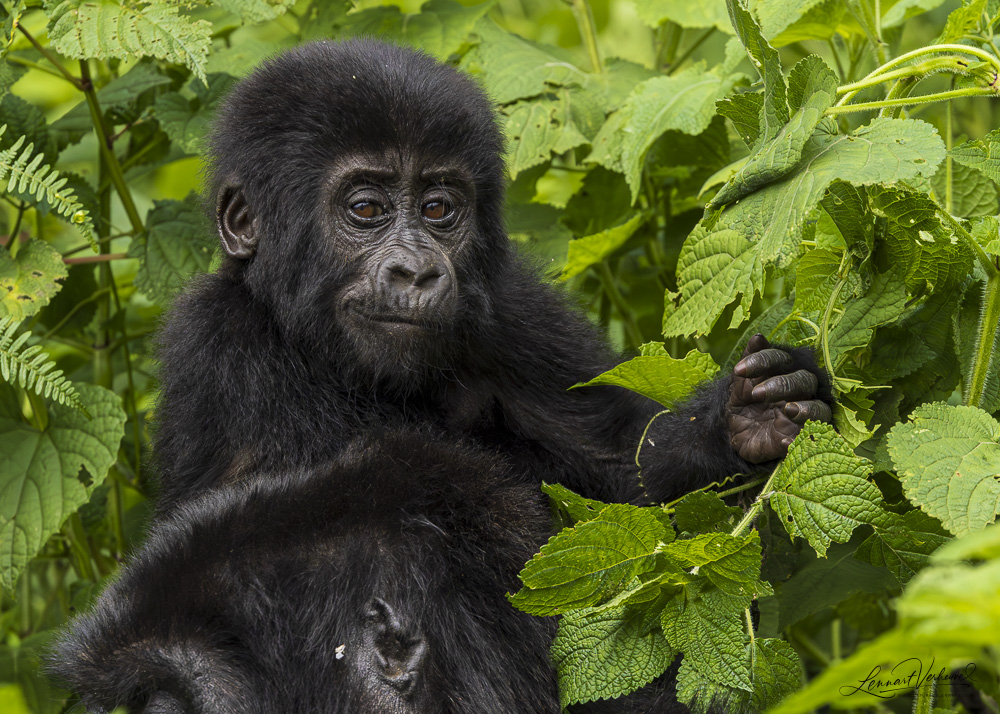
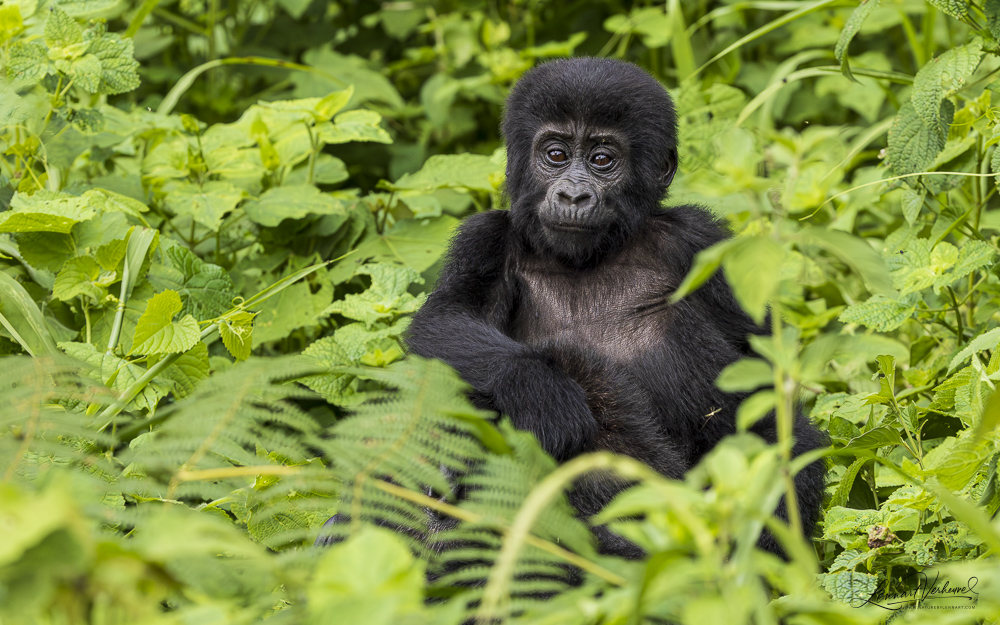
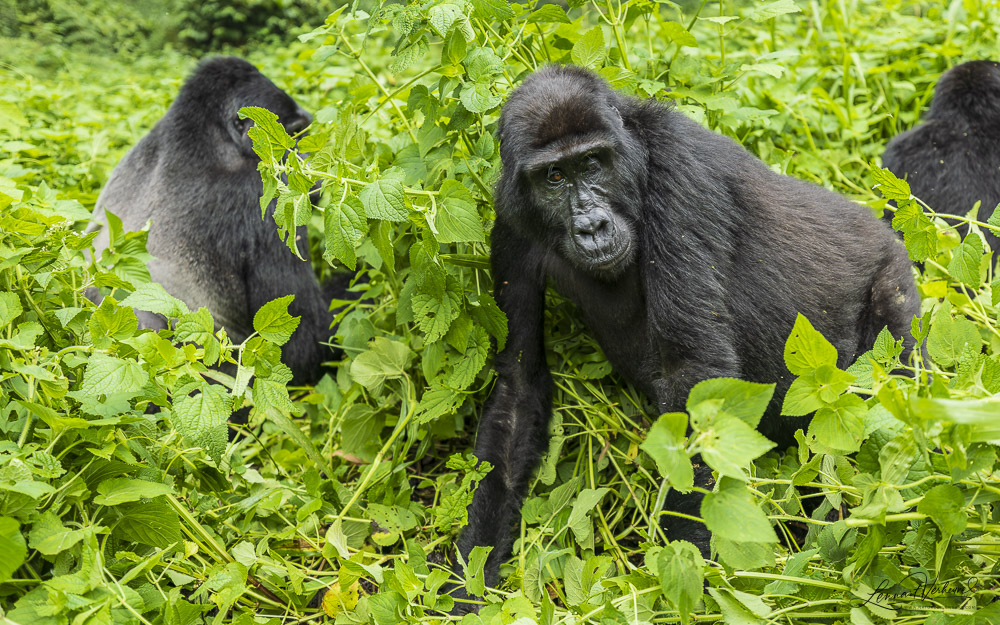
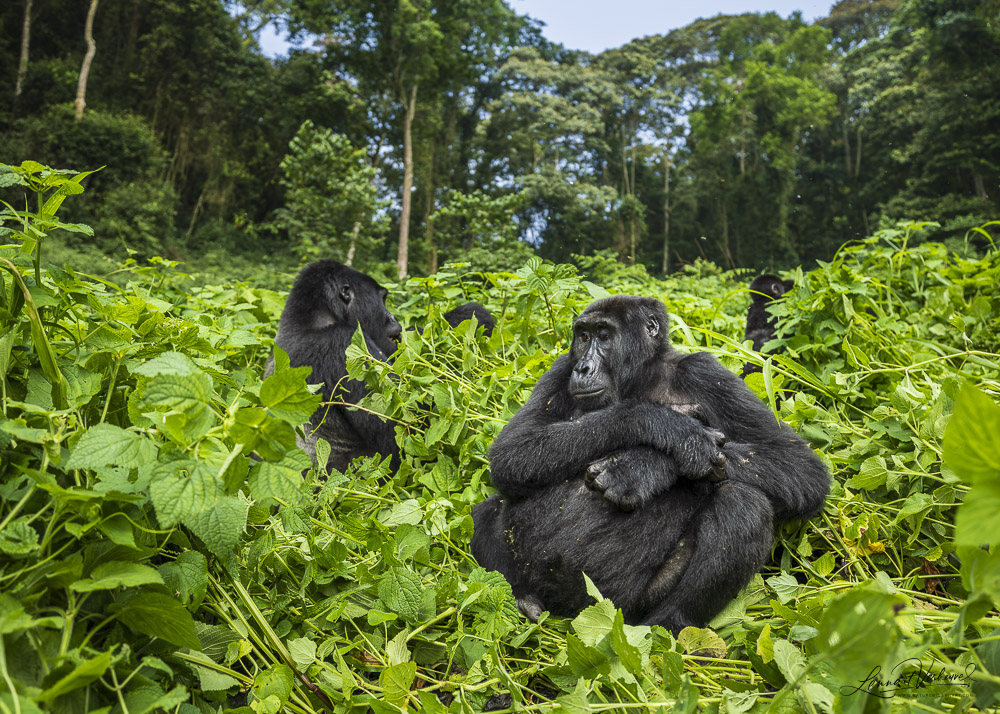
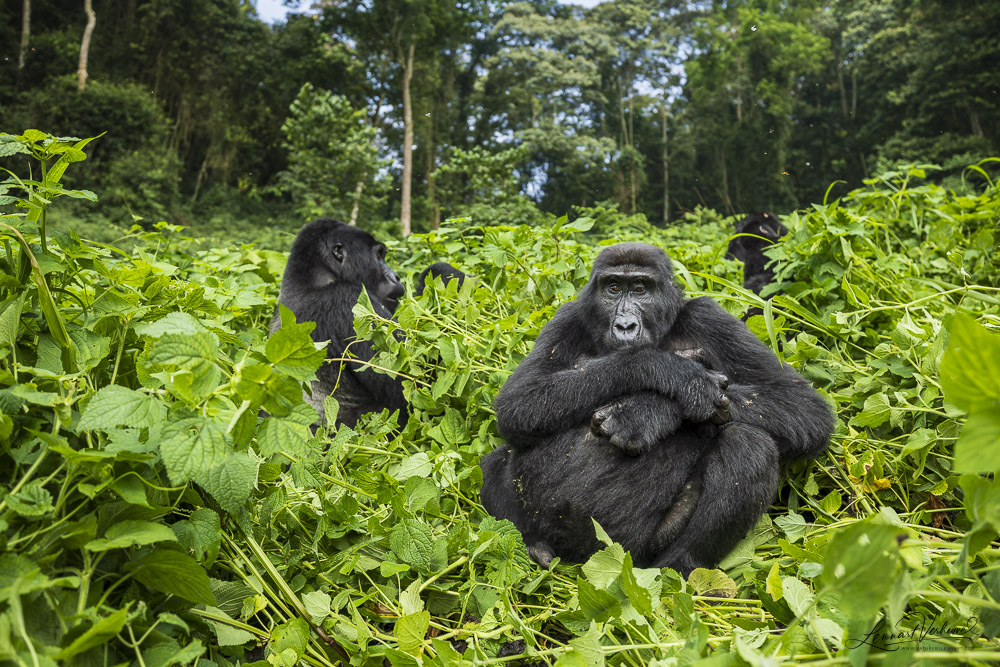
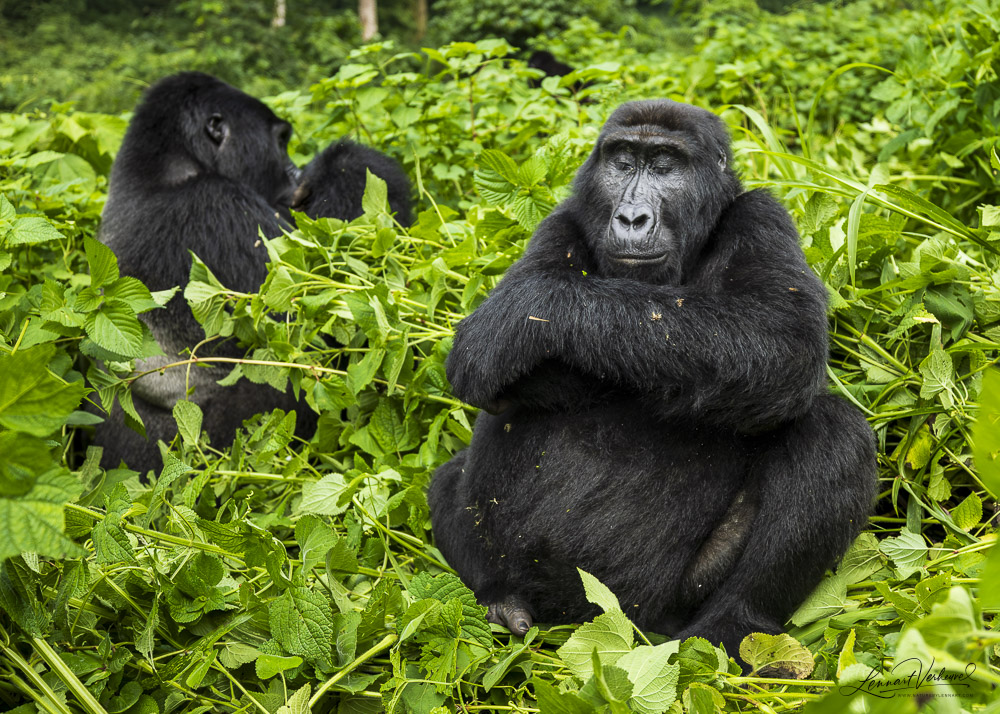
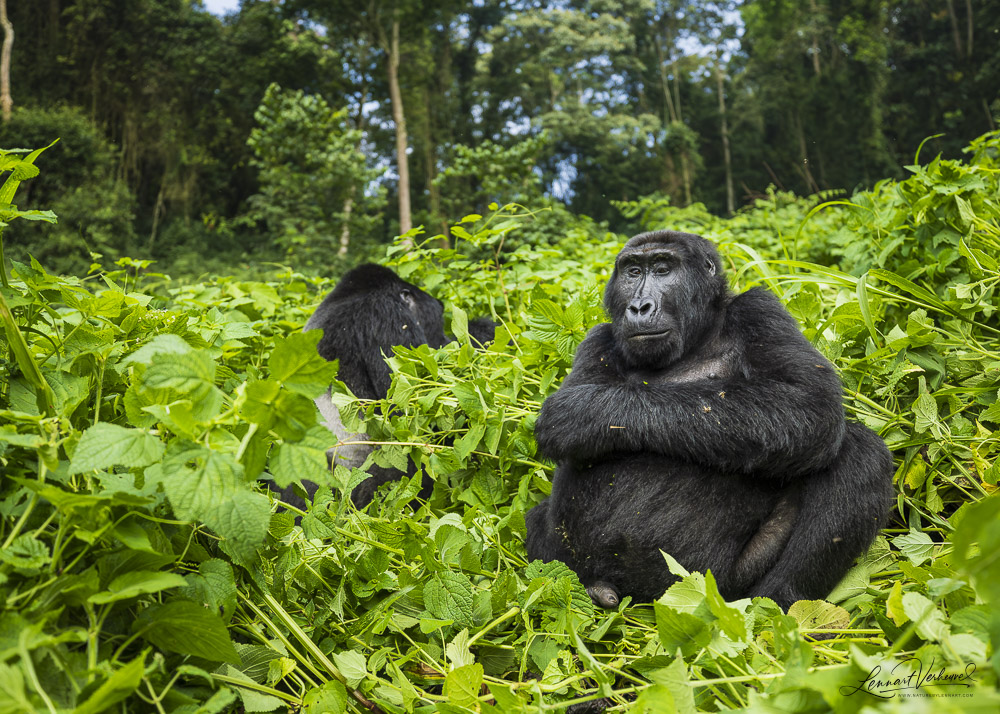
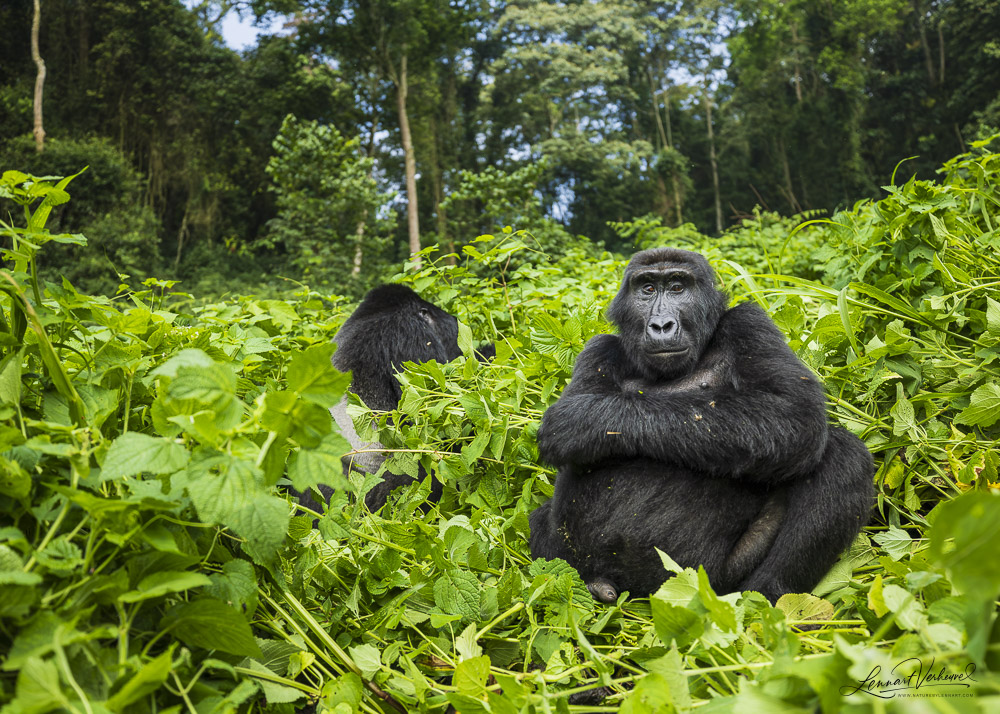
Mountain Gorillas
As our time ended, the gorillas themselves decided to leave, slowly moving towards the trees. The silverback urged one of his females to follow, giving me one of my favorite photos of the day.

Mountain Gorillas
Some climbed into the trees at the forest edge, offering more great photo opportunities before disappearing into the foliage.
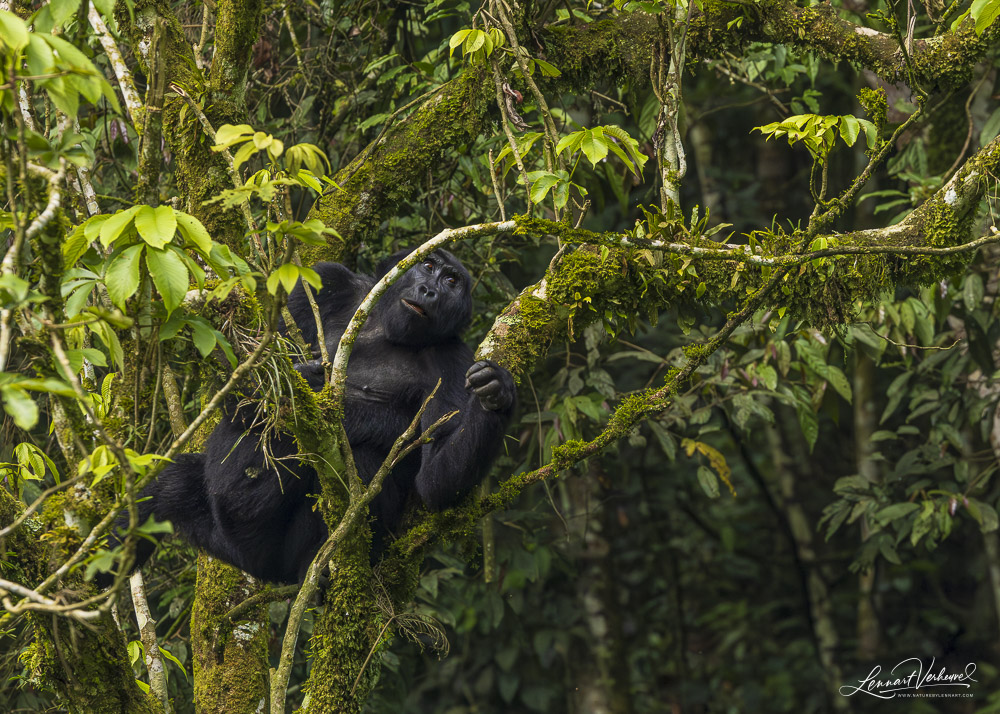
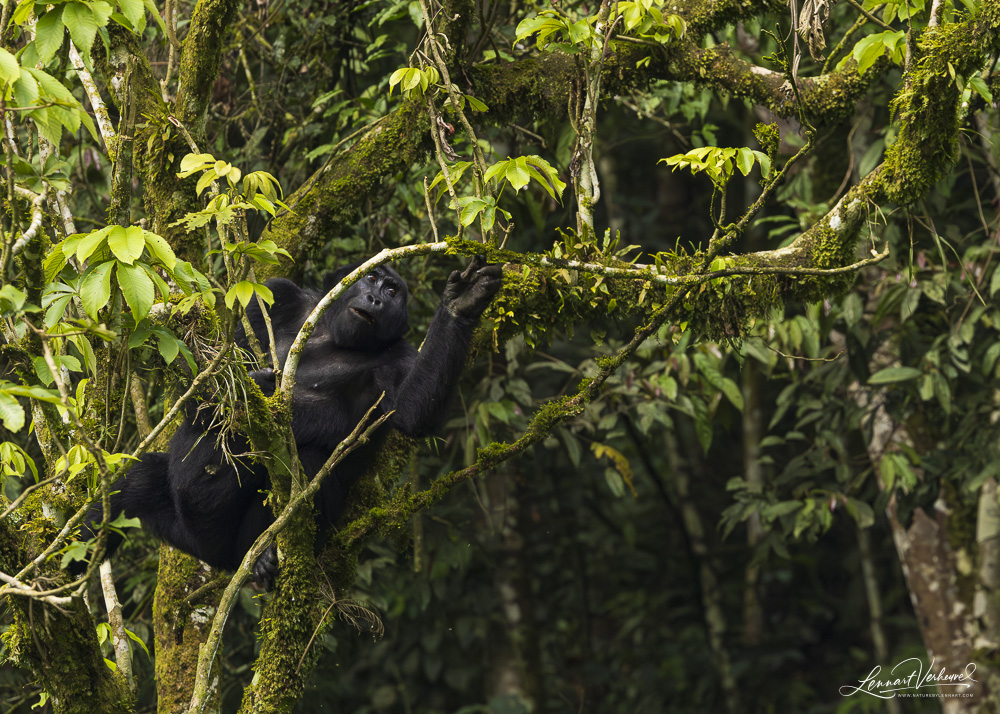
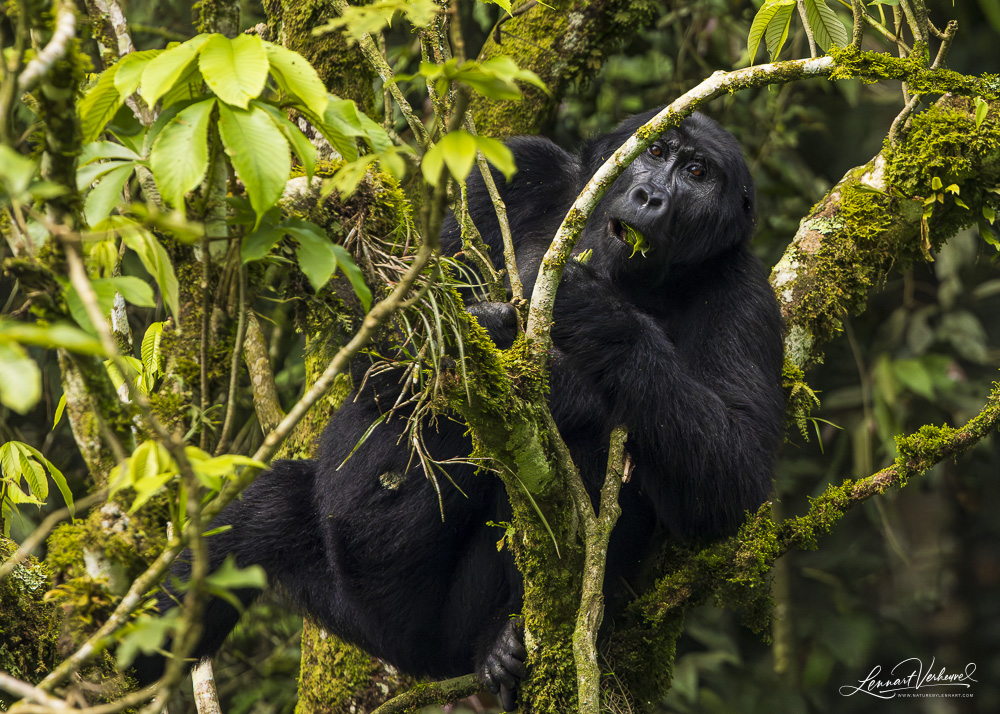
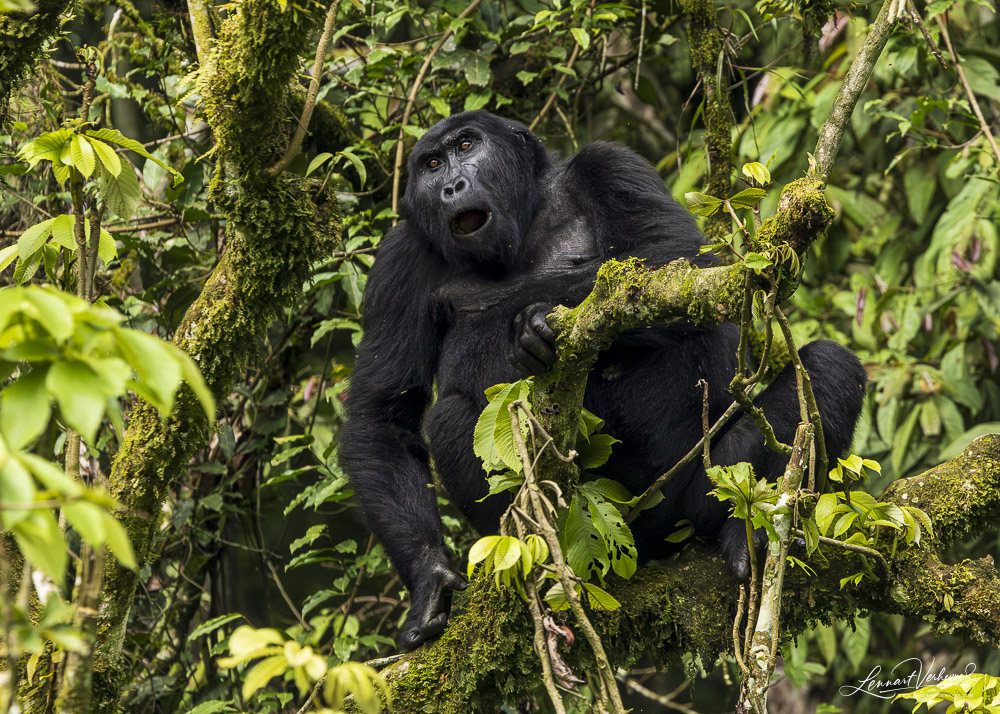
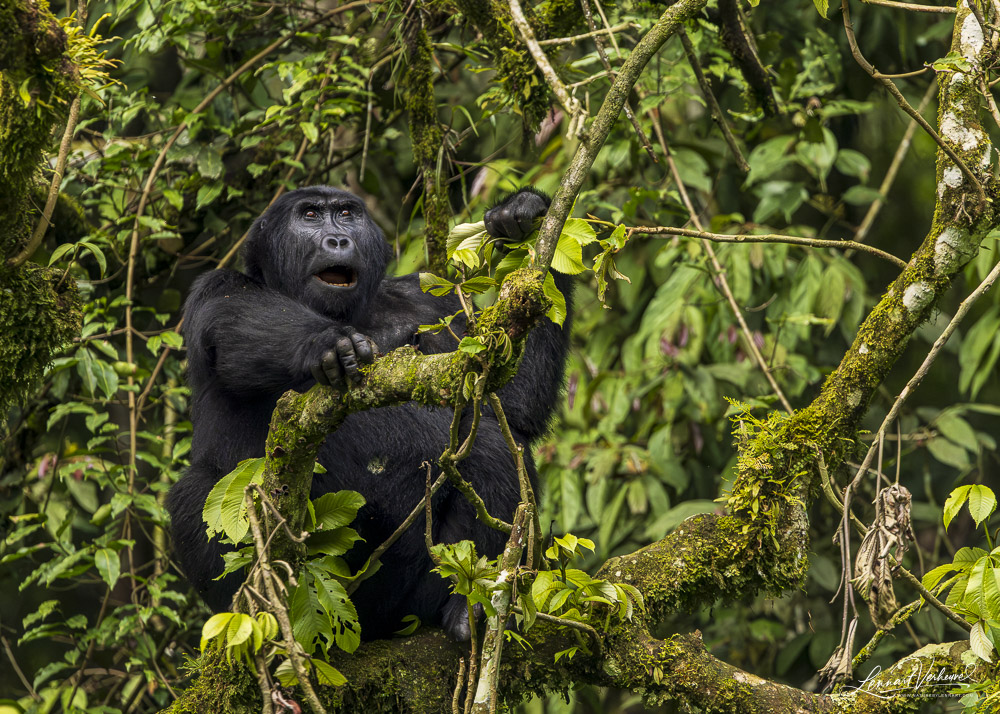
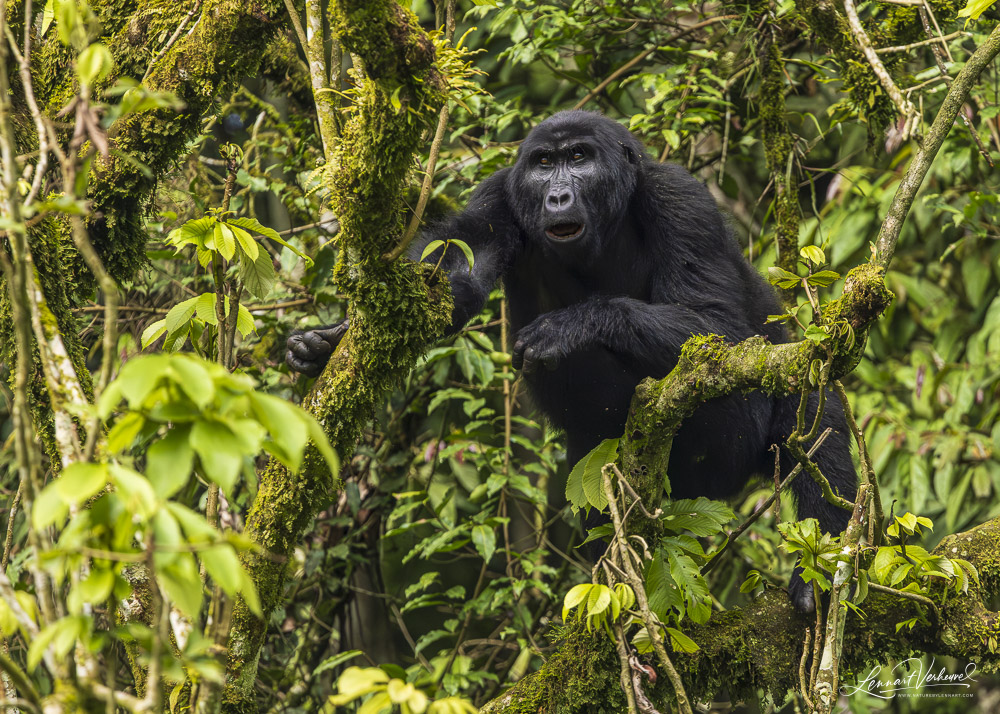
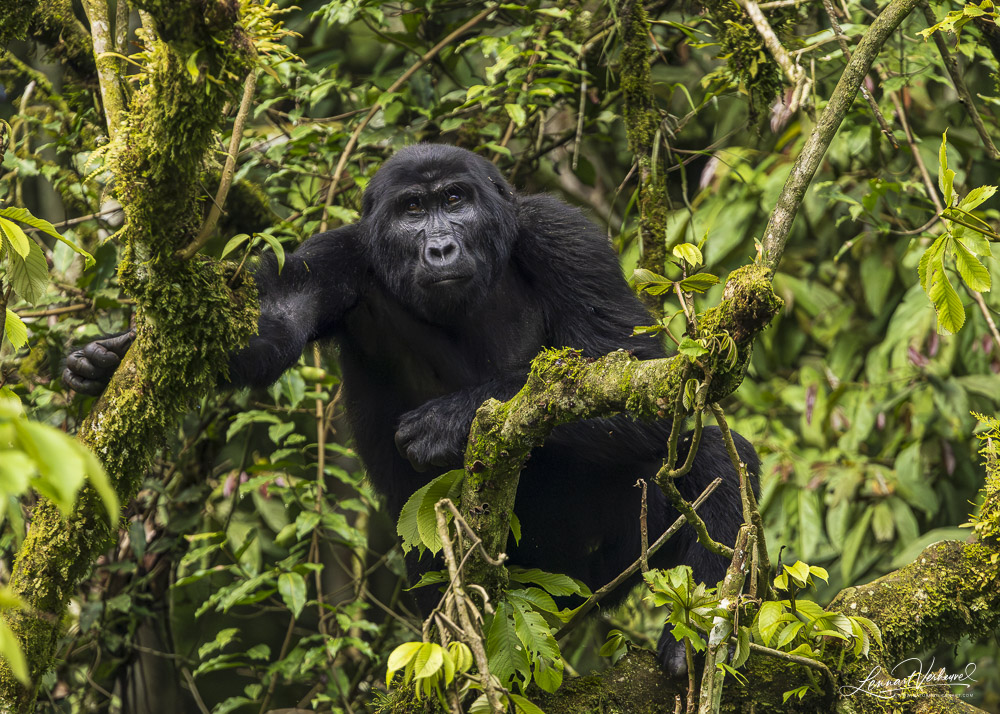
Mountain Gorilla
It had been one of the most expensive mornings of my life—but absolutely worth it.
For a short videoreport, watch the Youtube video below!
And the day wasn’t over yet. That afternoon, we explored another trail in Buhoma, looking for birds. Along a river, we found several species and even had a tantalizing glimpse of what might have been a Giant Otter Shrew—a mega sighting if confirmed, though too brief to be certain. I didn’t see it myself, unfortunately.
What I did see was another gorilla: a blackback male suddenly appeared at the end of the trail! I had stepped aside briefly for a restroom break when he emerged right behind me!
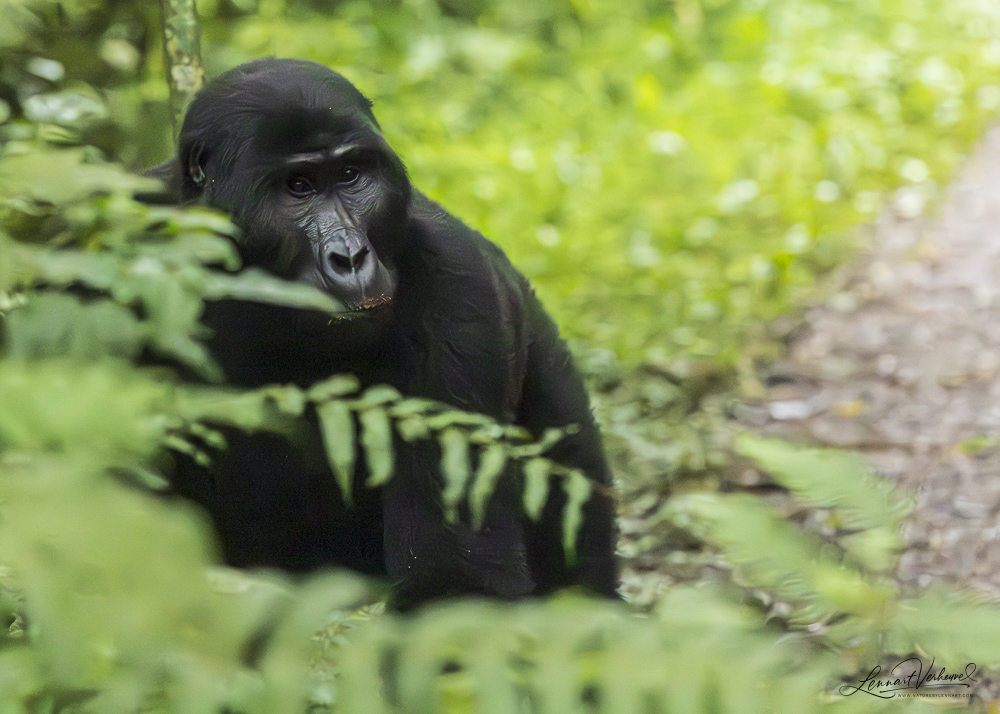
Mountain Gorilla
Clearly from a habituated group, he showed no fear, casually crossing the path and climbing a tree—probably preparing a nest for the night.
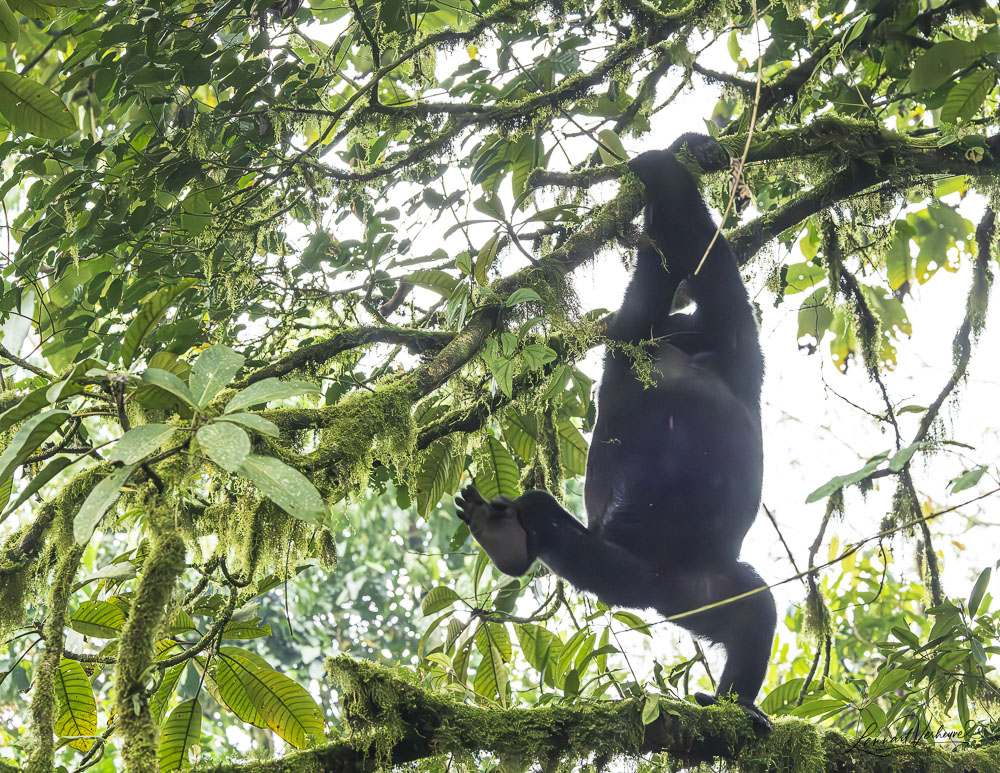
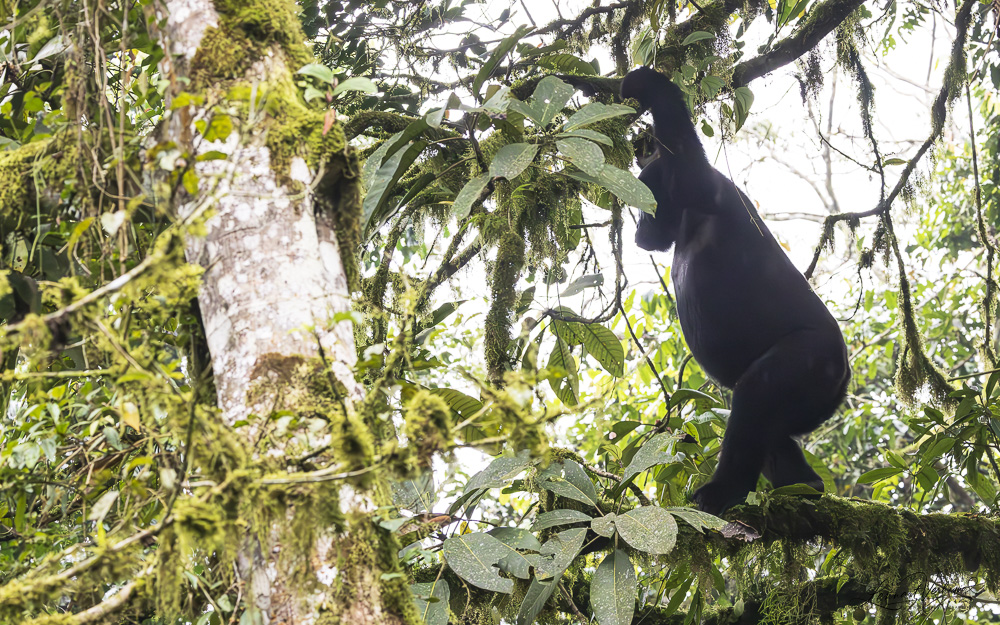
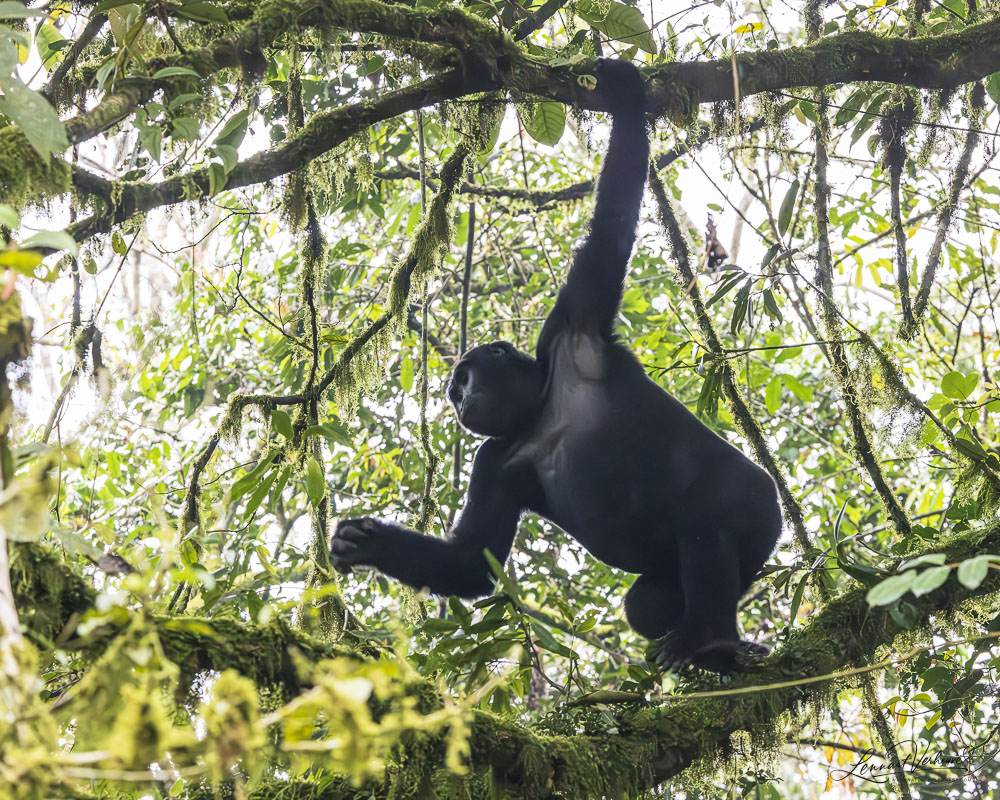
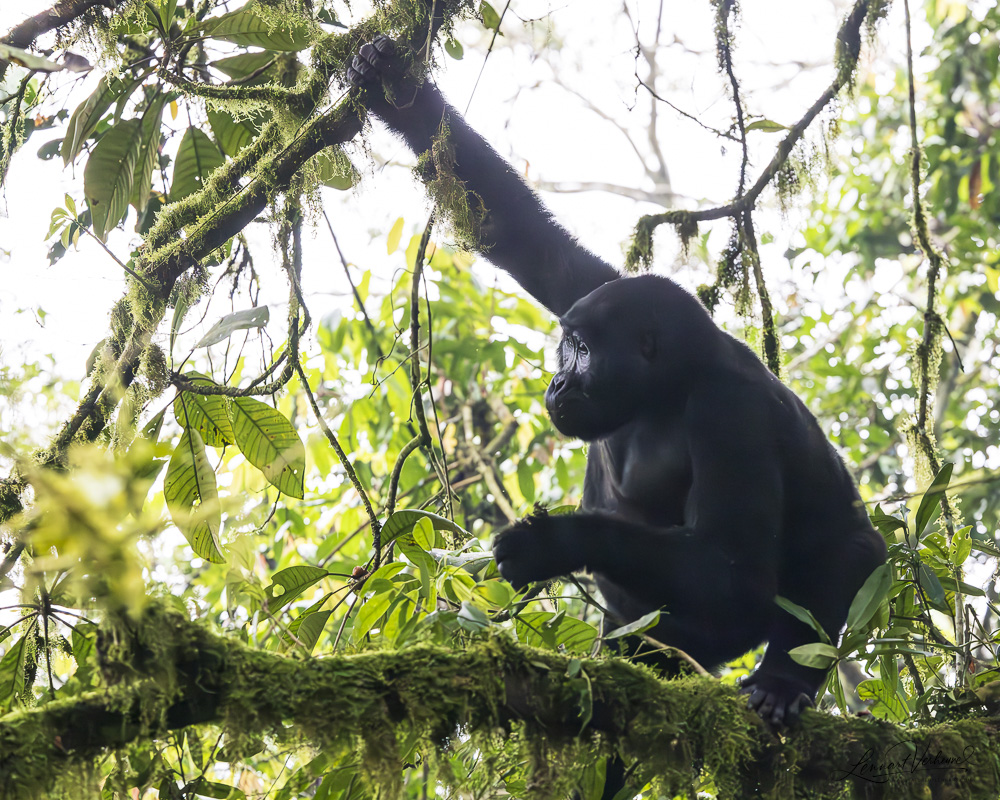
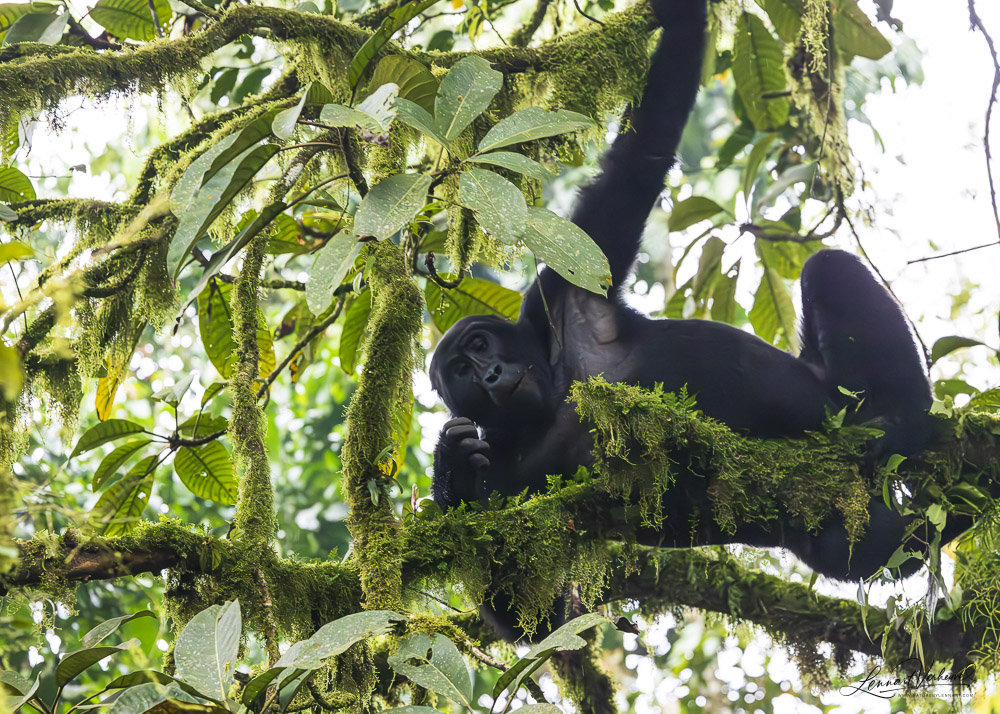
Mountain Gorilla
It was the perfect ending to an already extraordinary day. My number one goal had been achieved beyond my expectations. And who knew what else this journey might still bring?
Also watch the videoreport of the second part of the day on Youtube!
More from Uganda?
Read how we saw one the worlds best birds: the Shoebill!
Also read about a great day in Kibale National Park with Chimpanzees, Forest Elephants and a Green-breasted Pitta!
Furthermore our visit of a special area with special species: Semliki!